

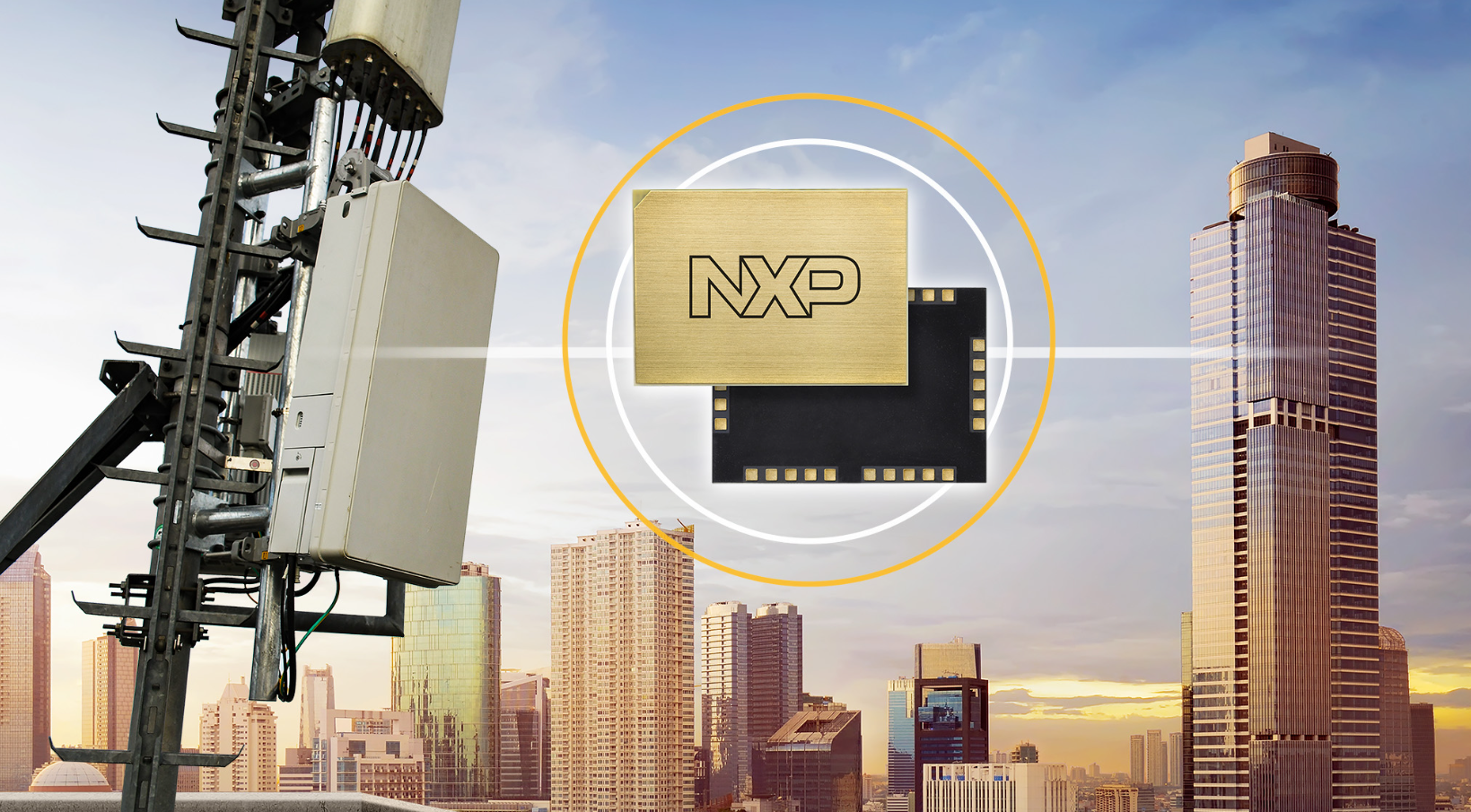



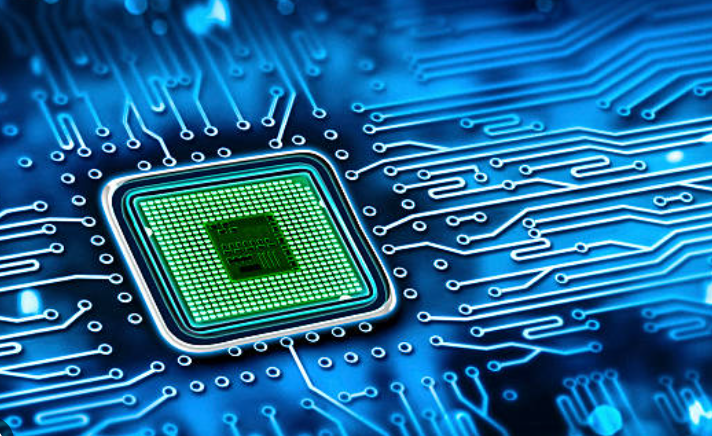

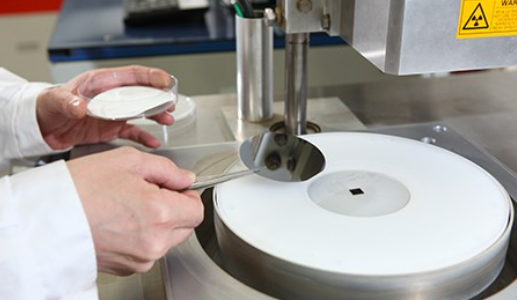

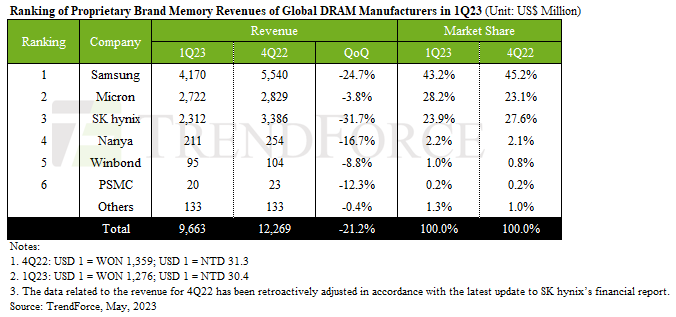

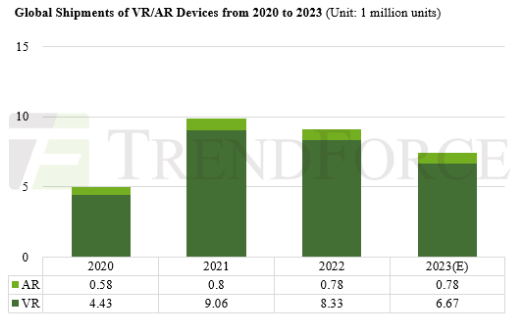

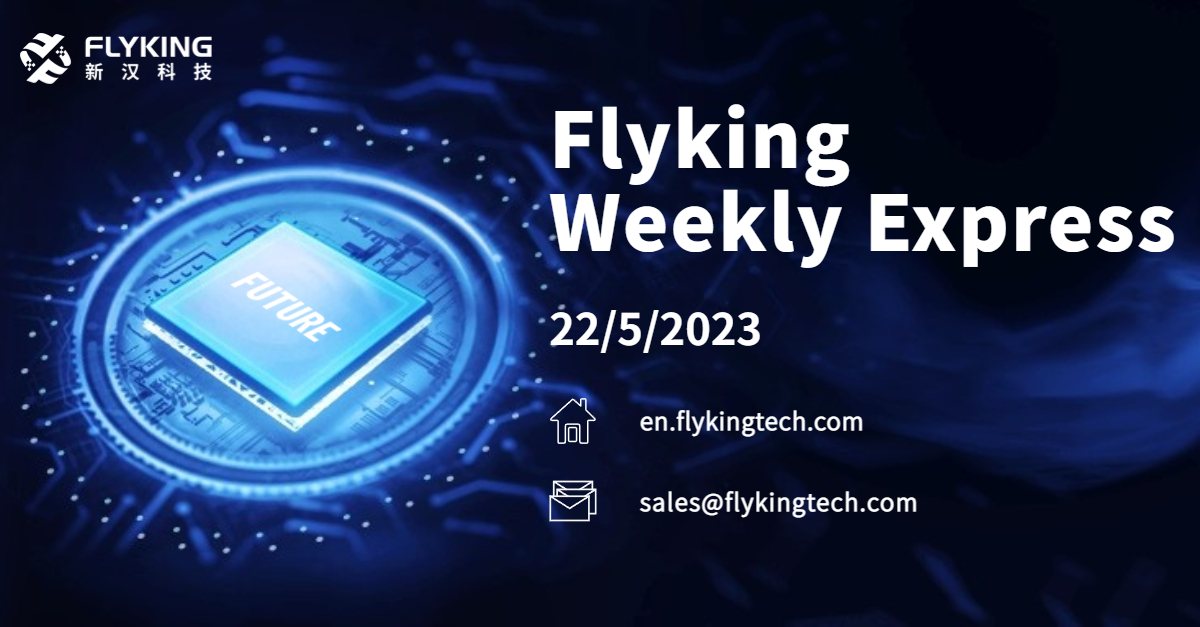

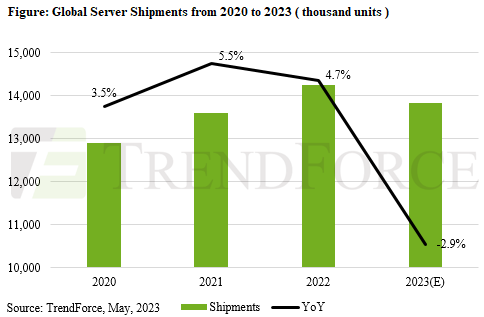
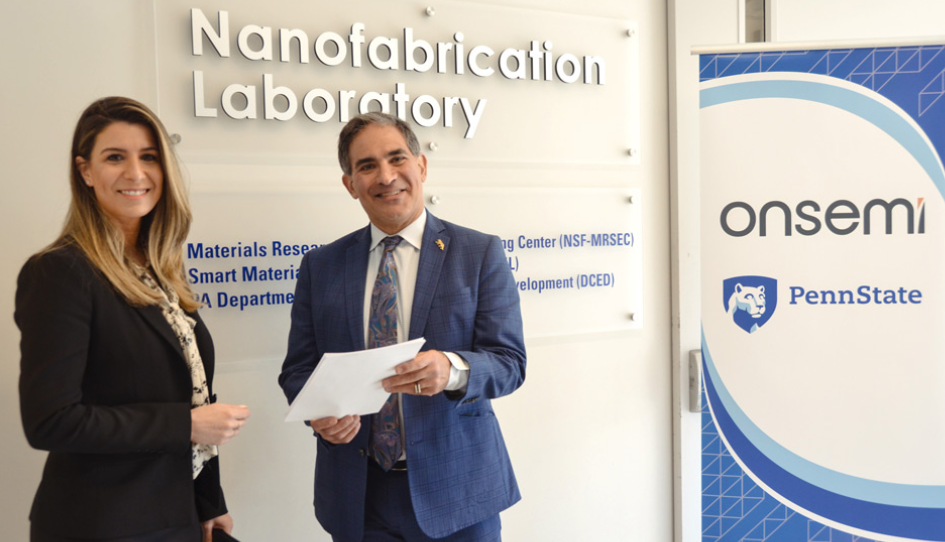
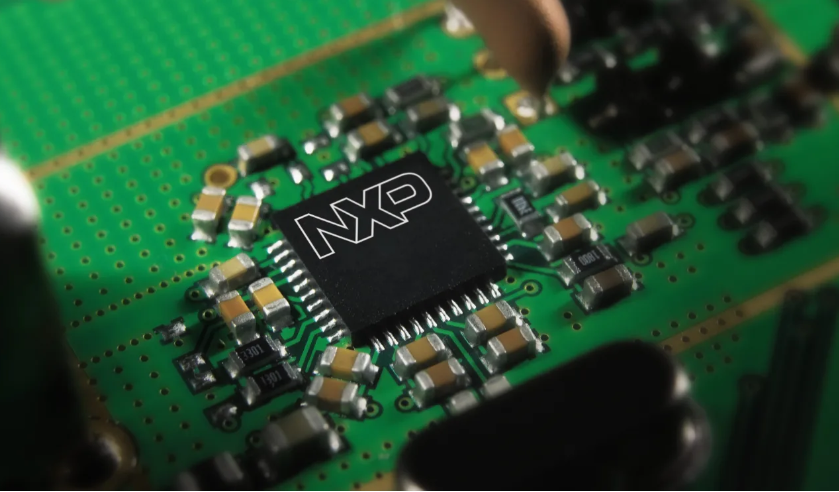

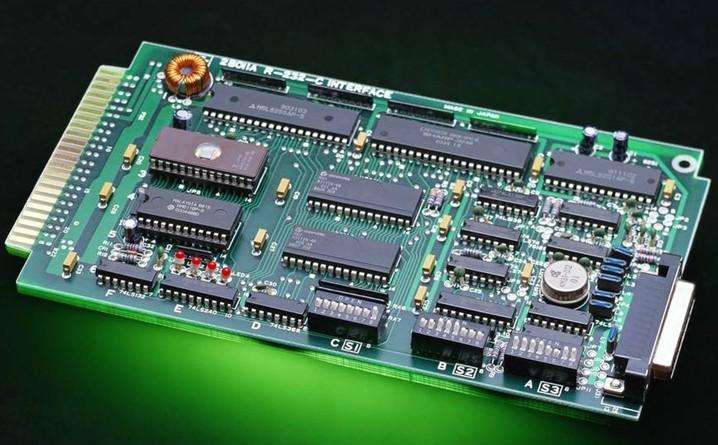


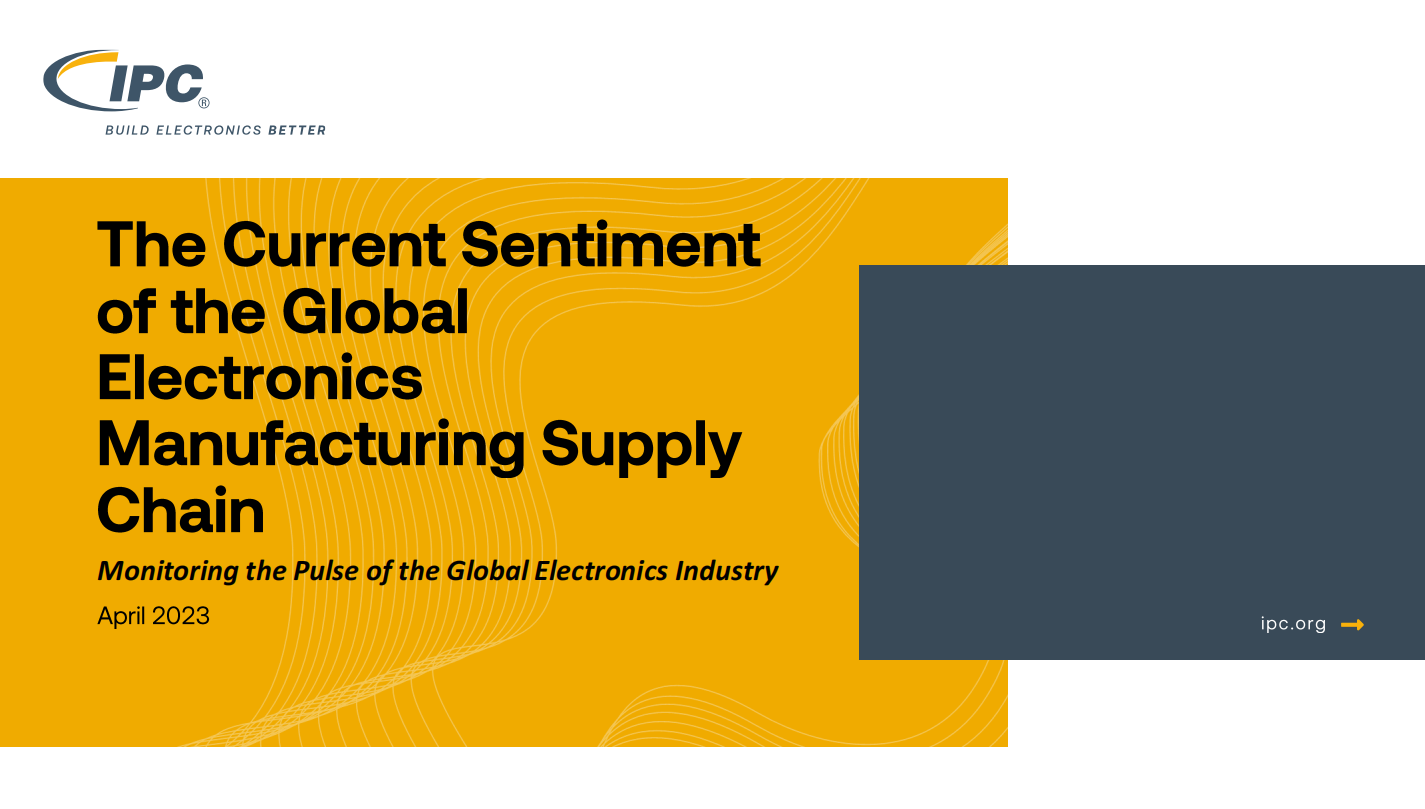
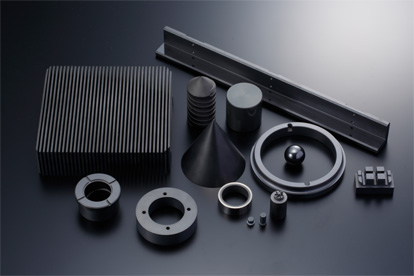

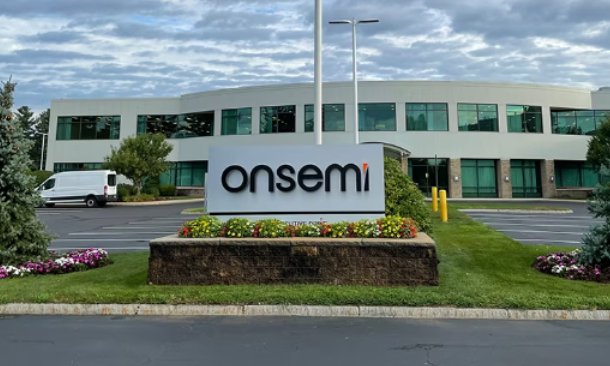




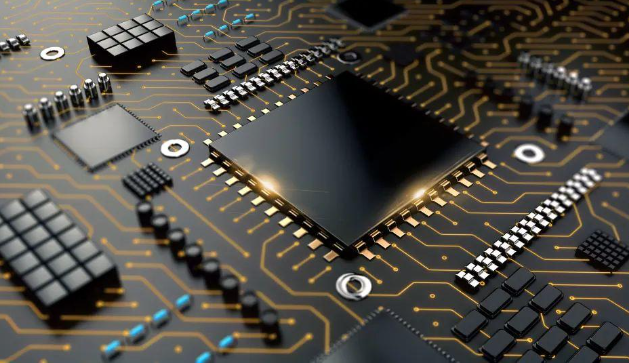
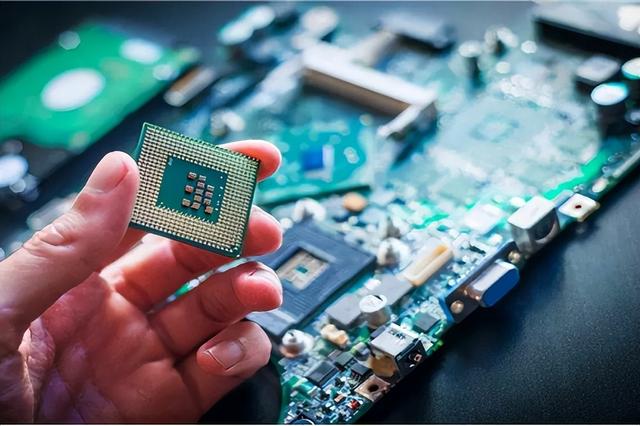


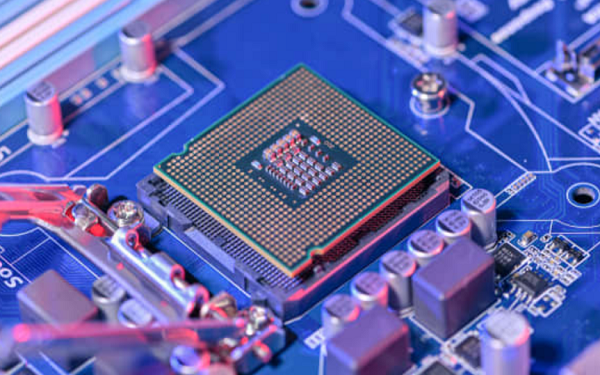
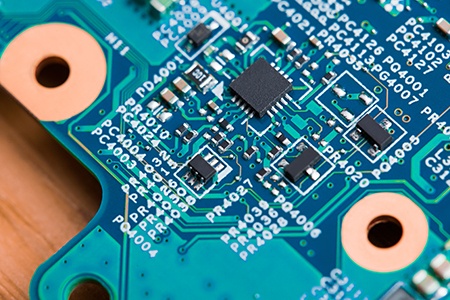

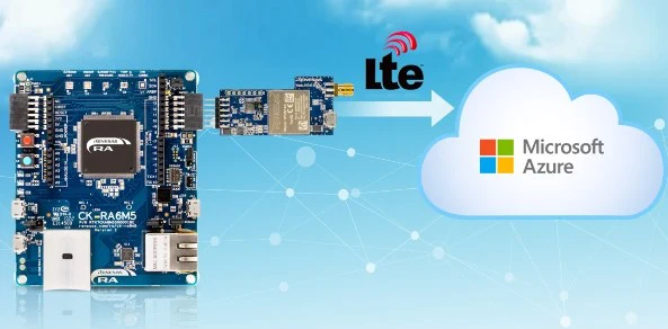

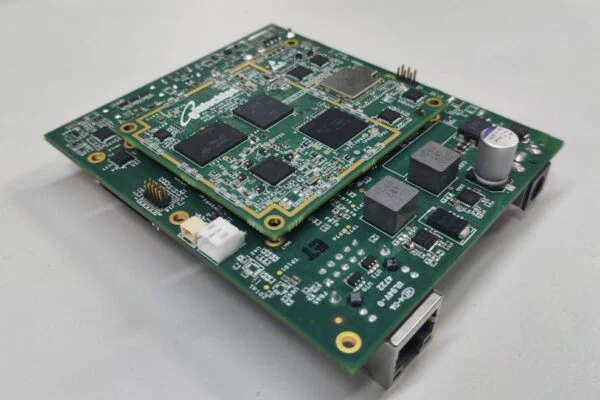

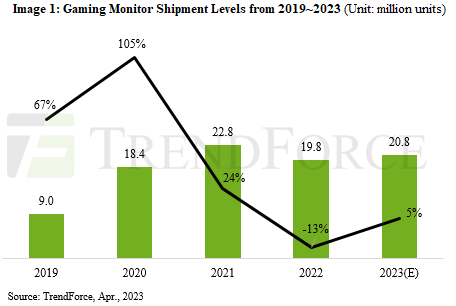
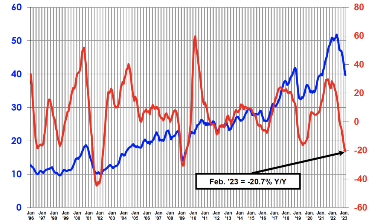
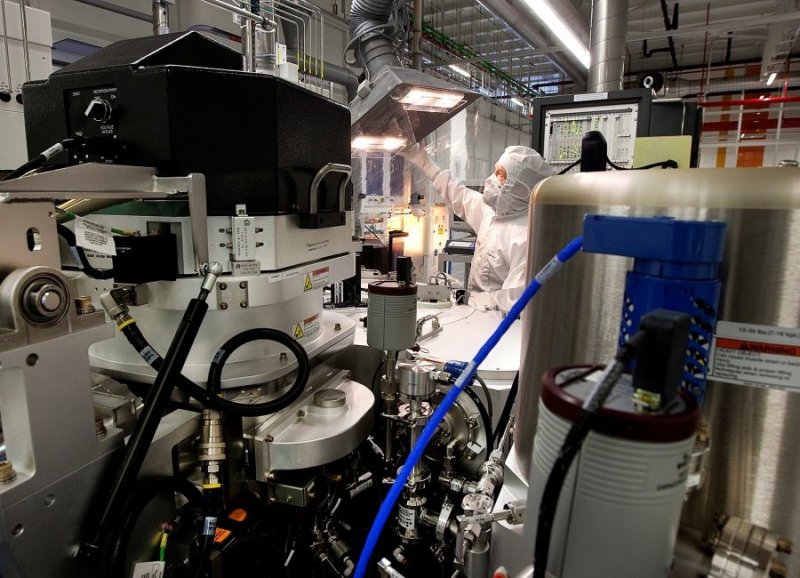
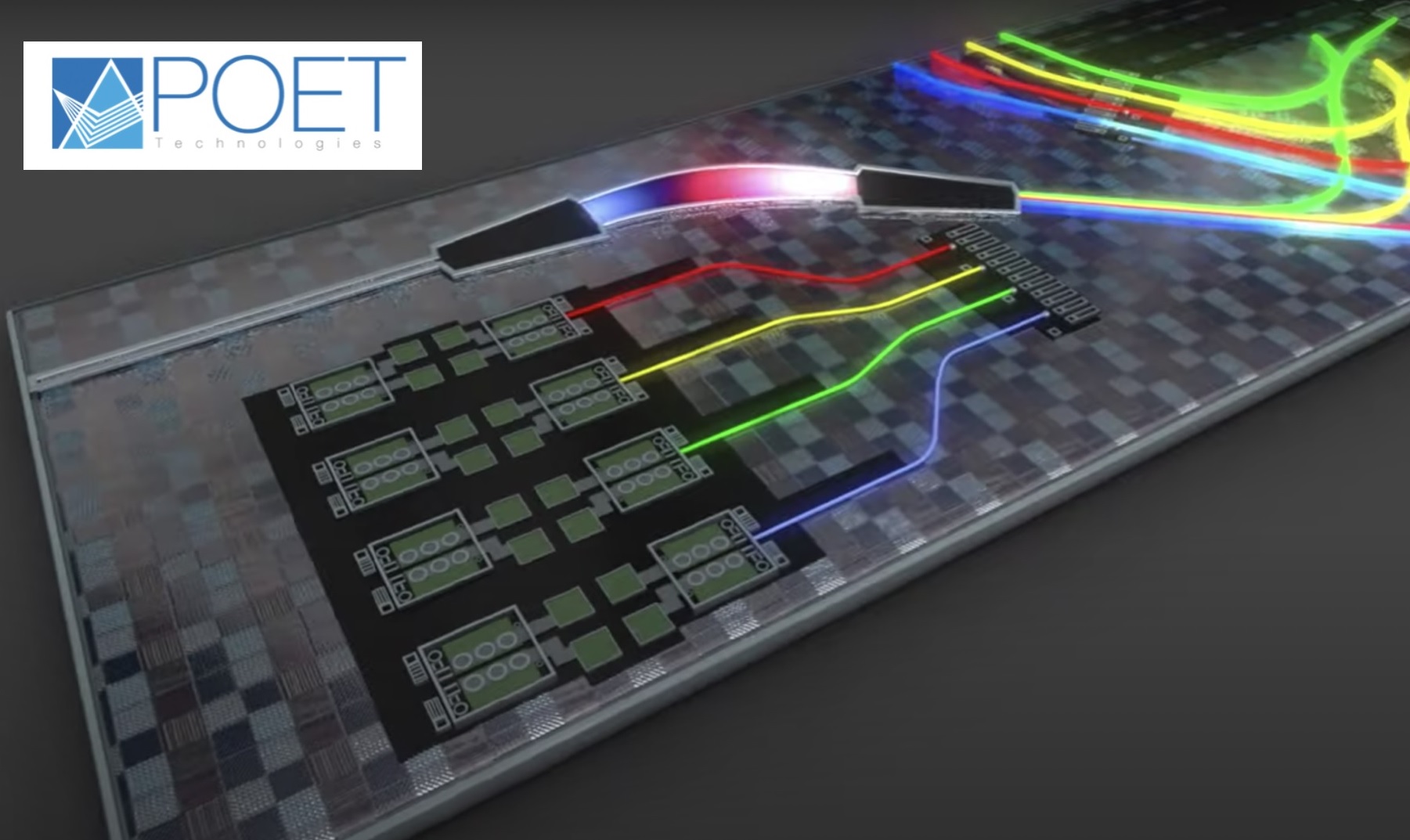
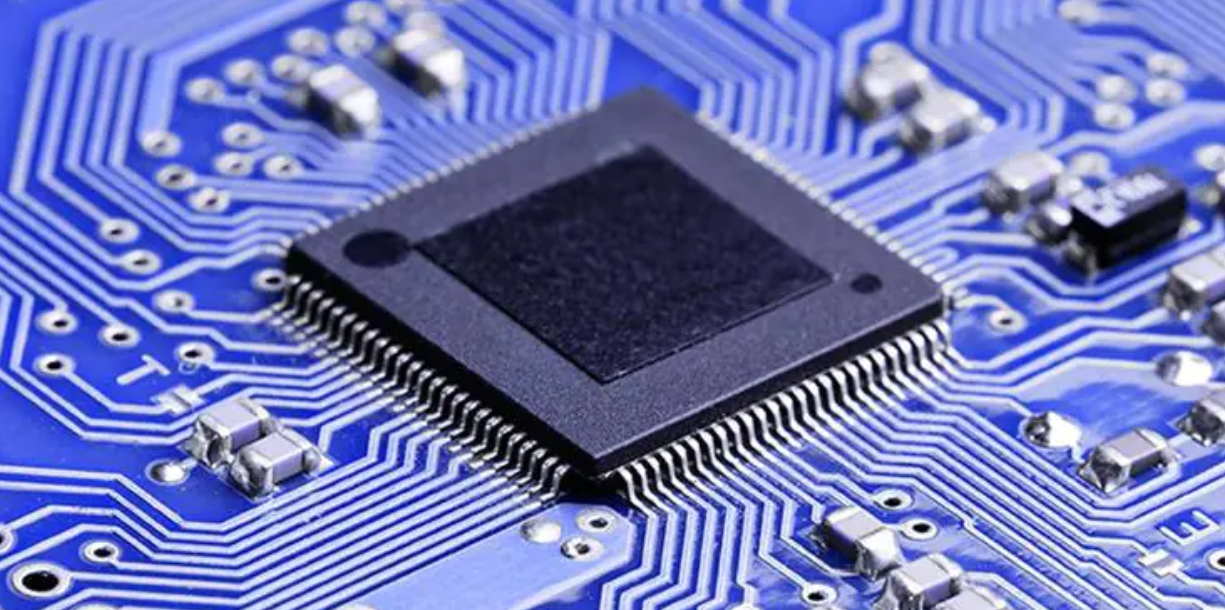

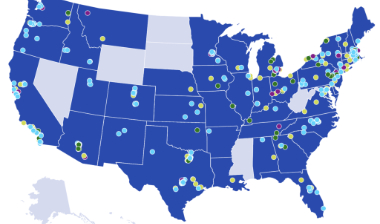

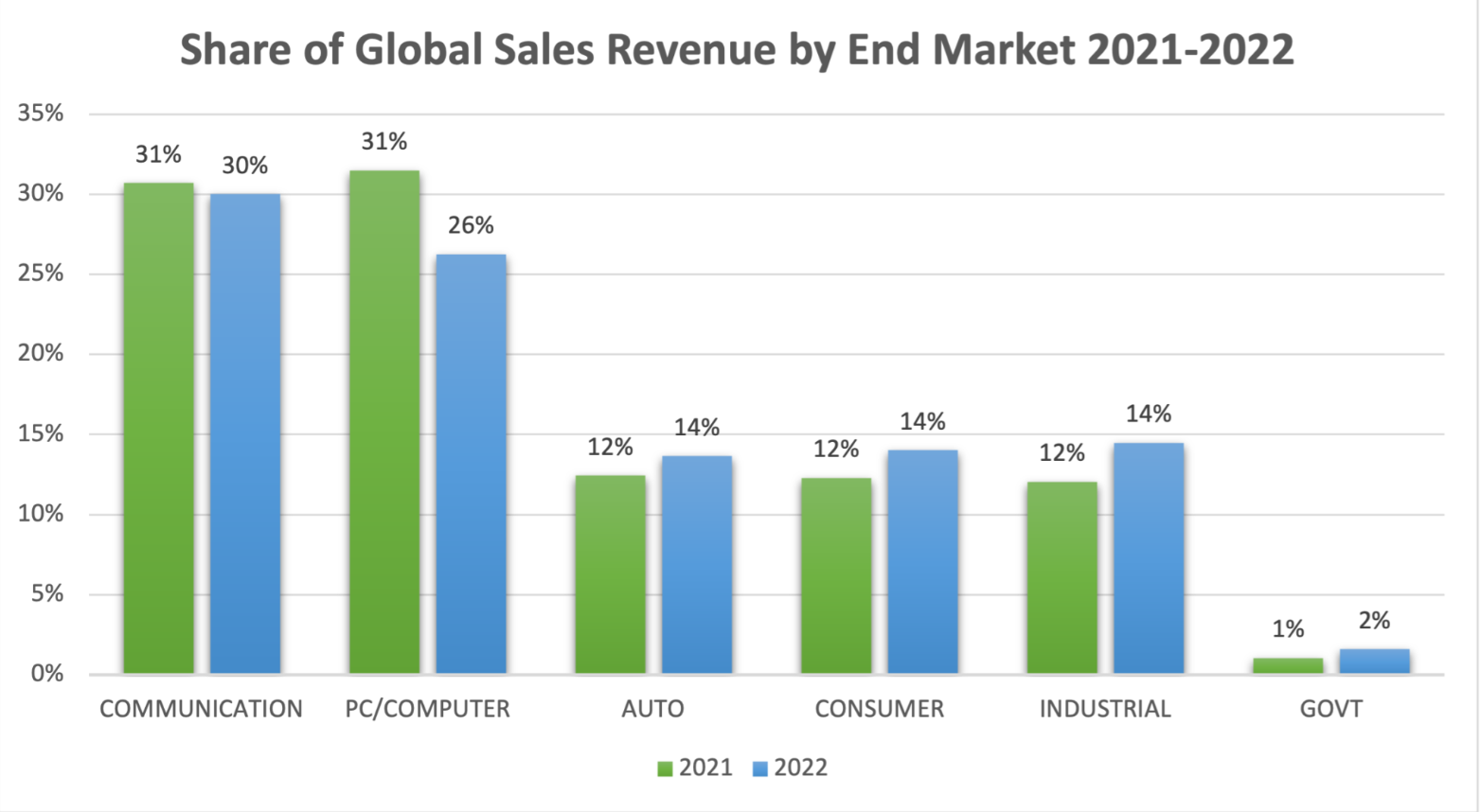
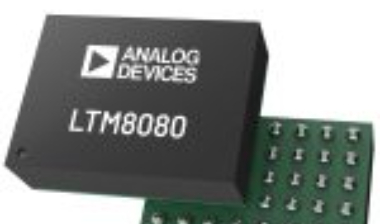
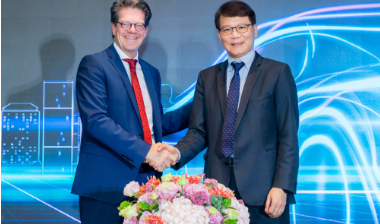

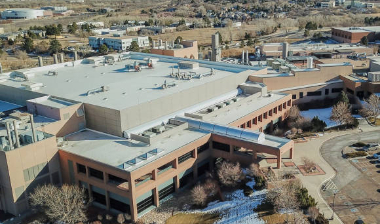
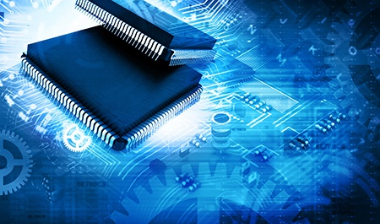





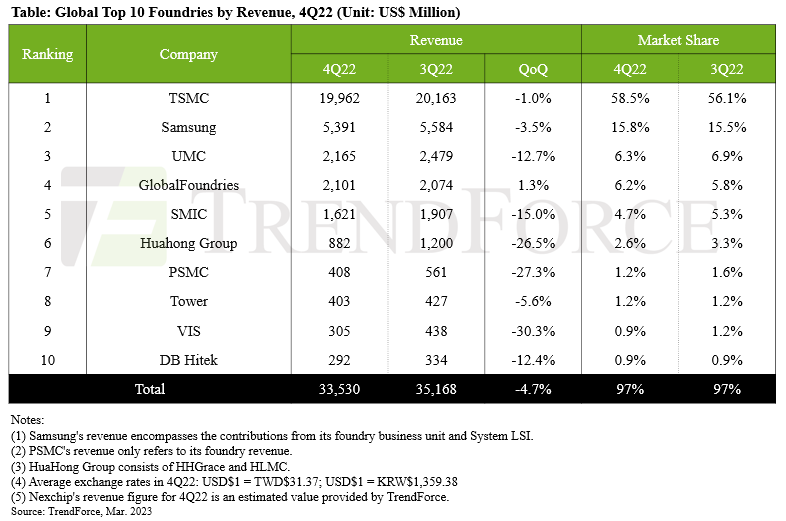
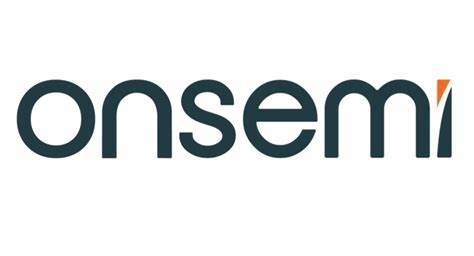


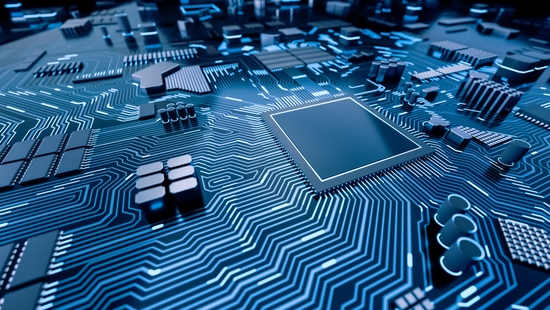
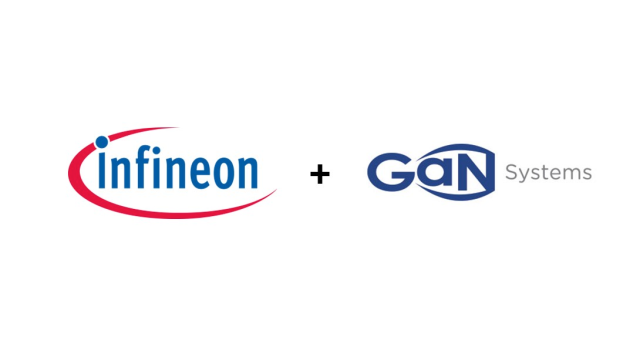





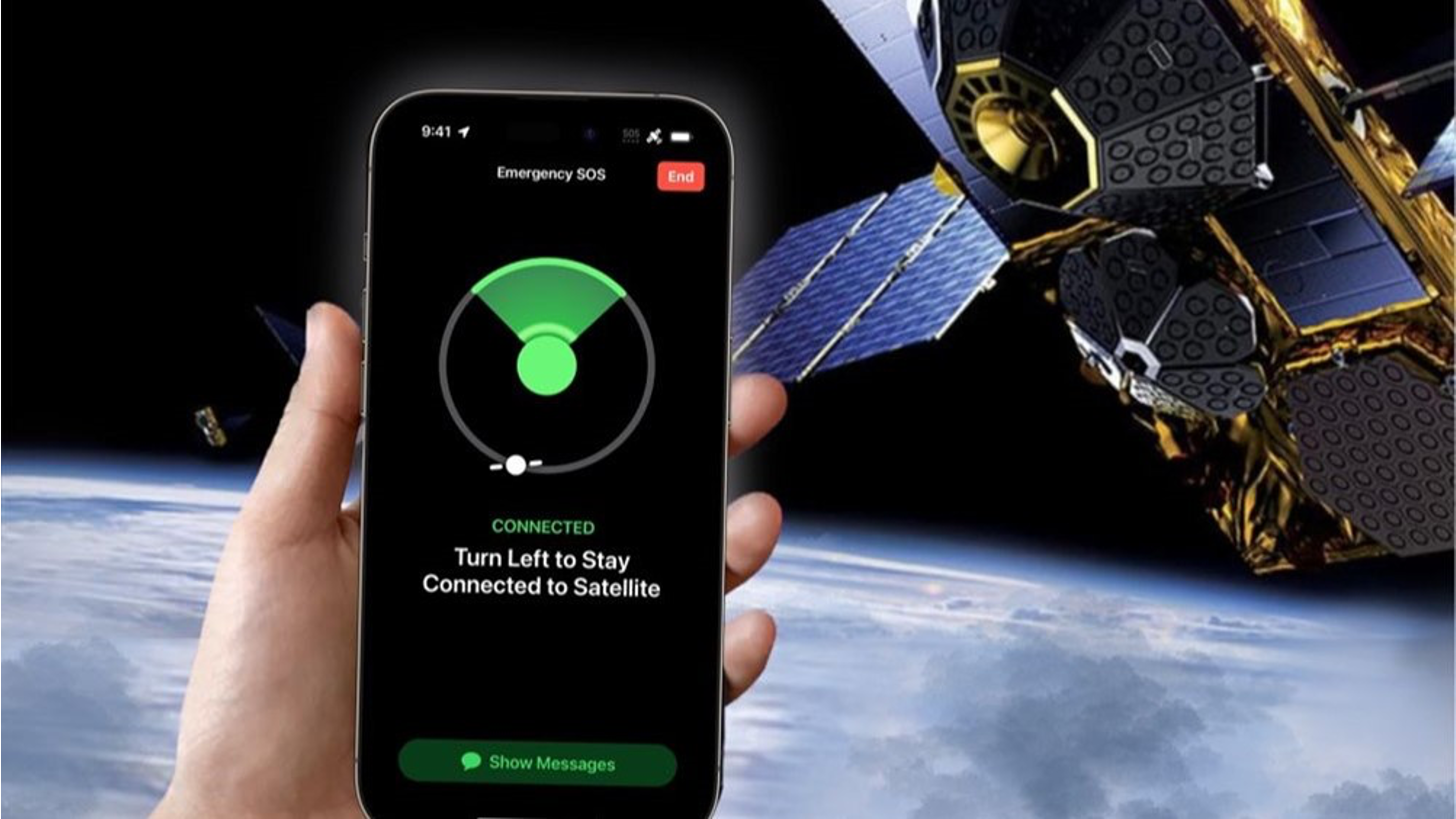
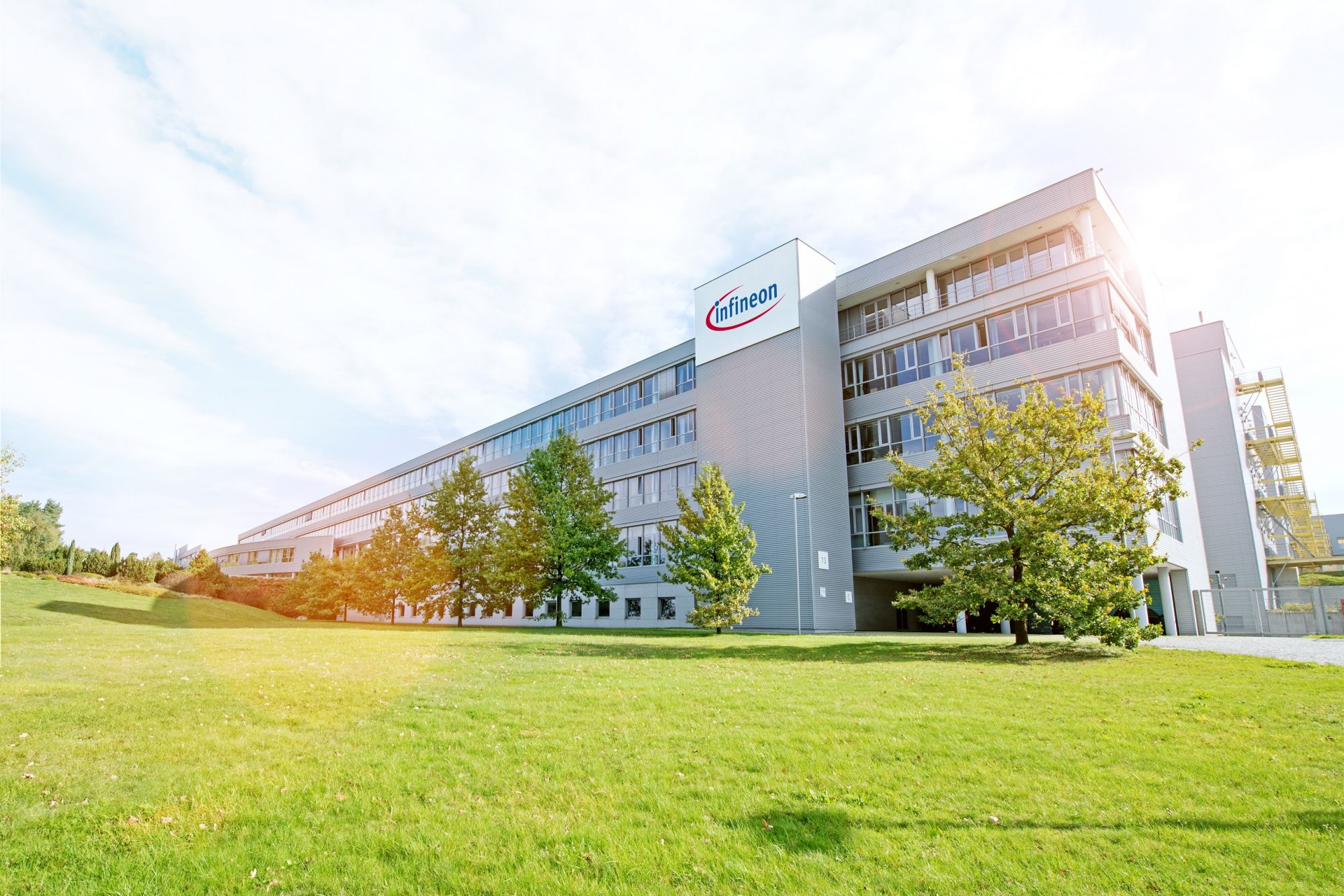
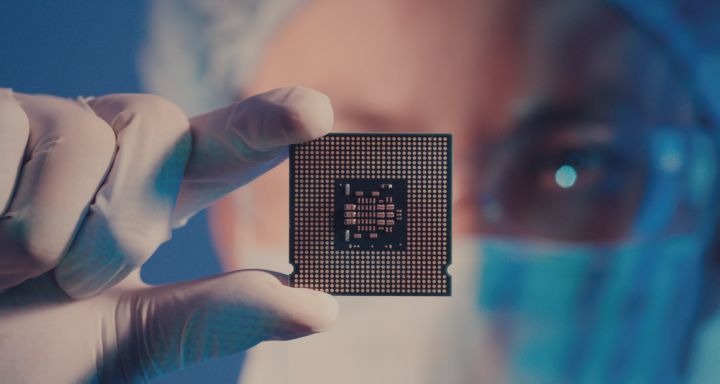
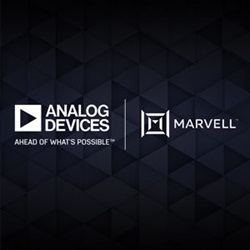

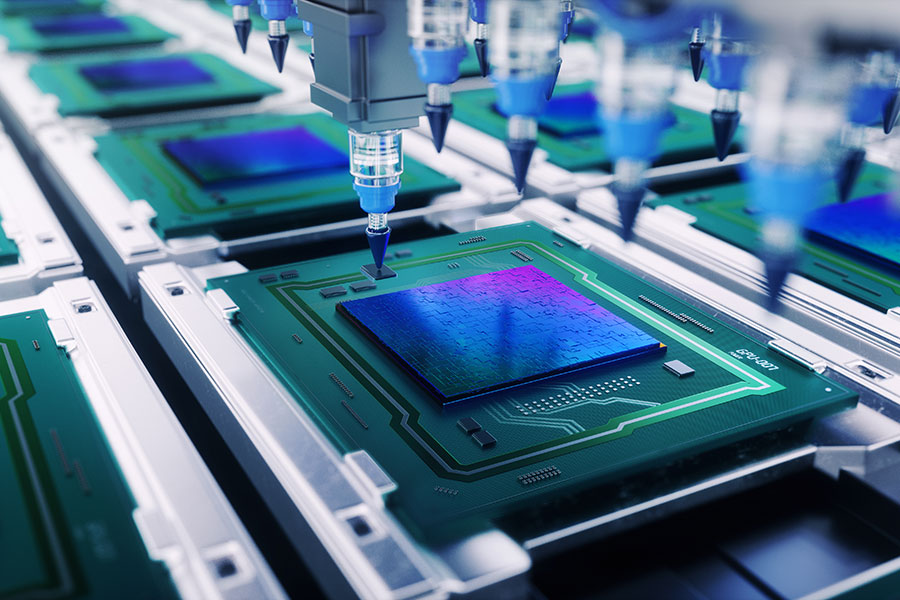
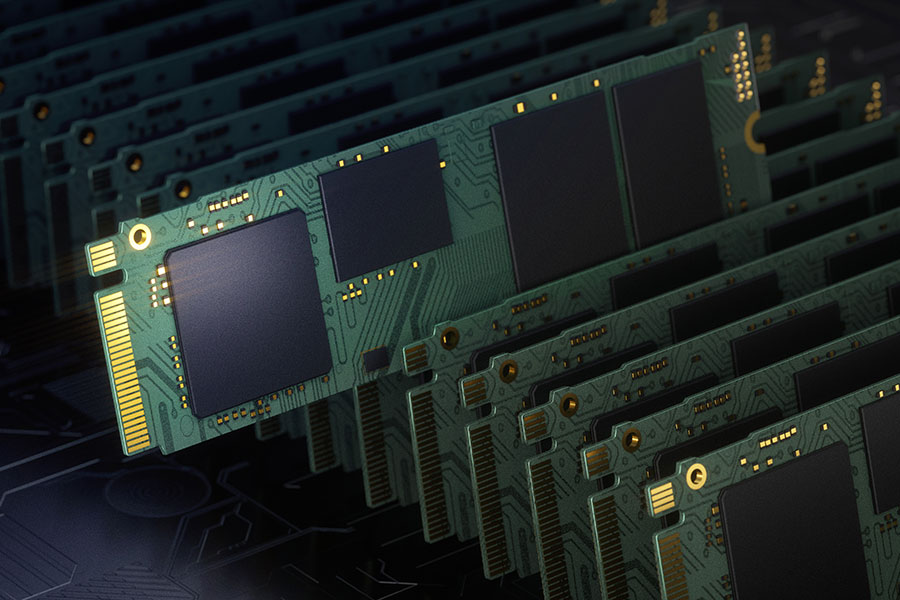

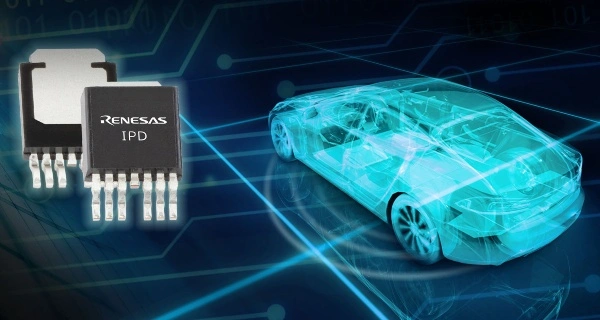
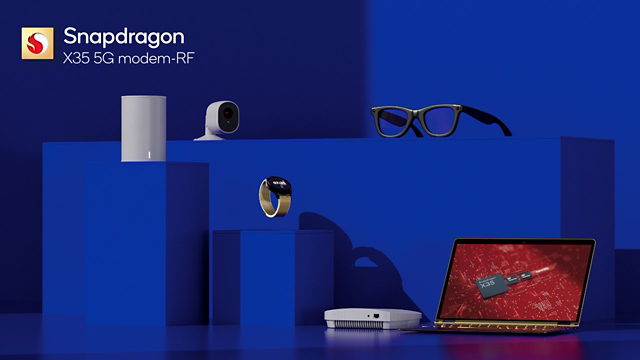
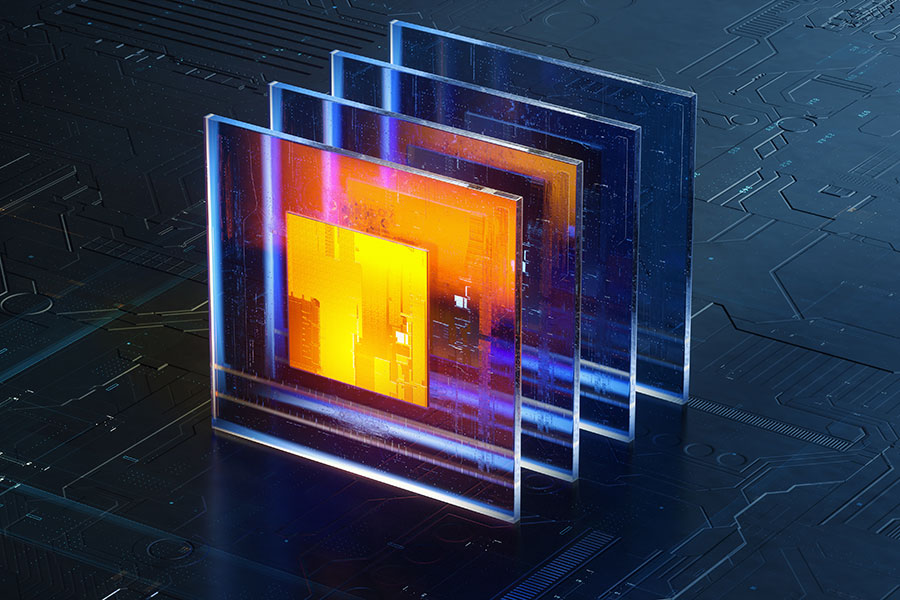
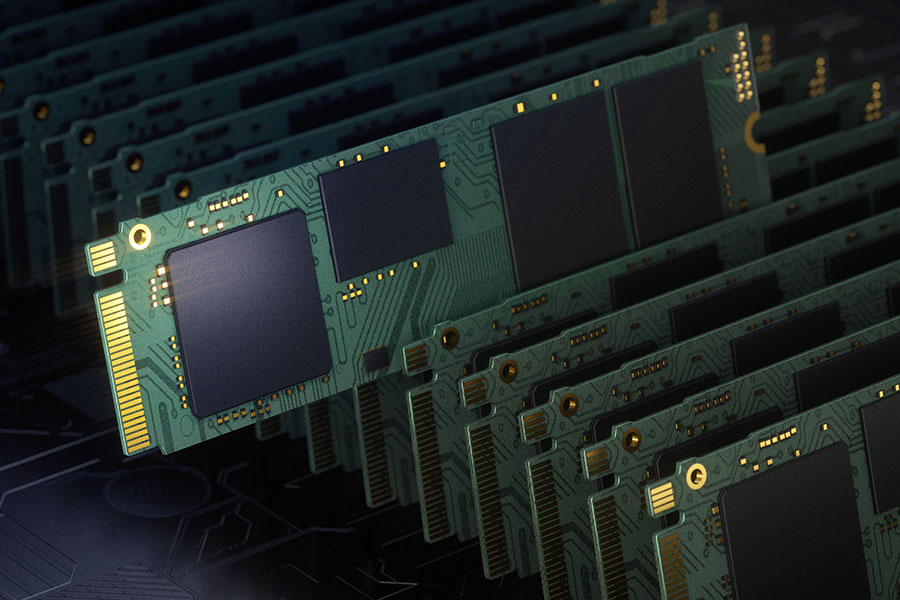

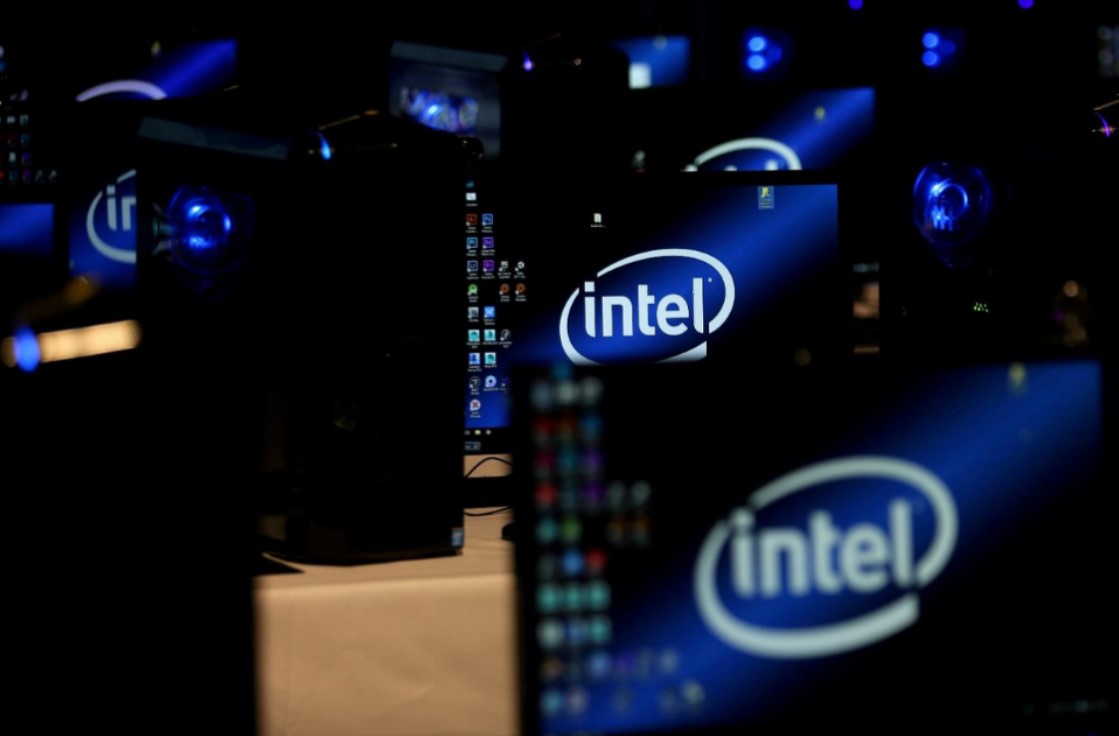
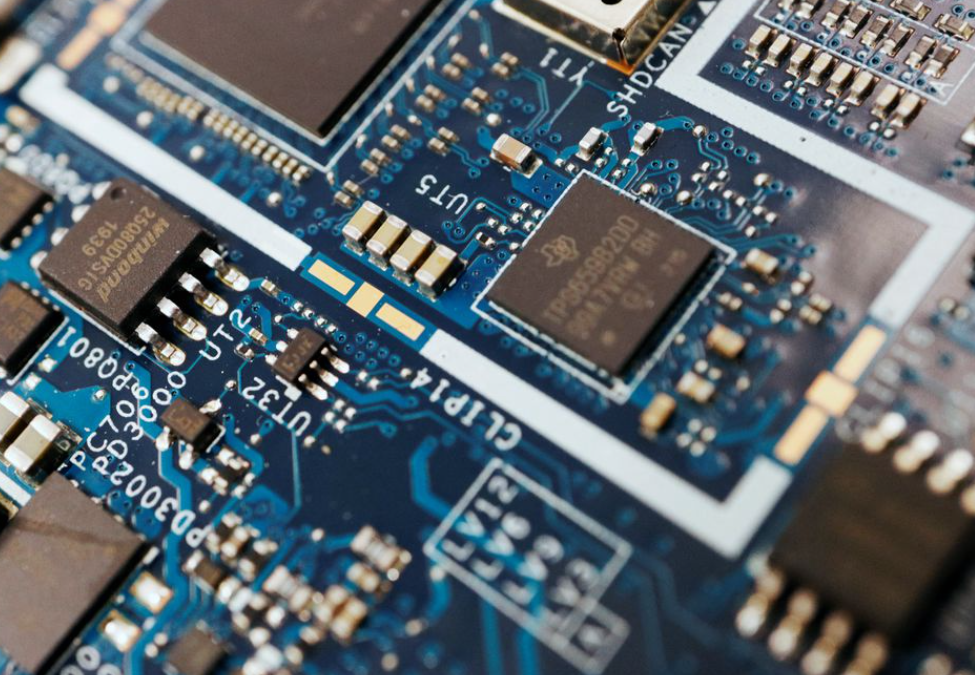
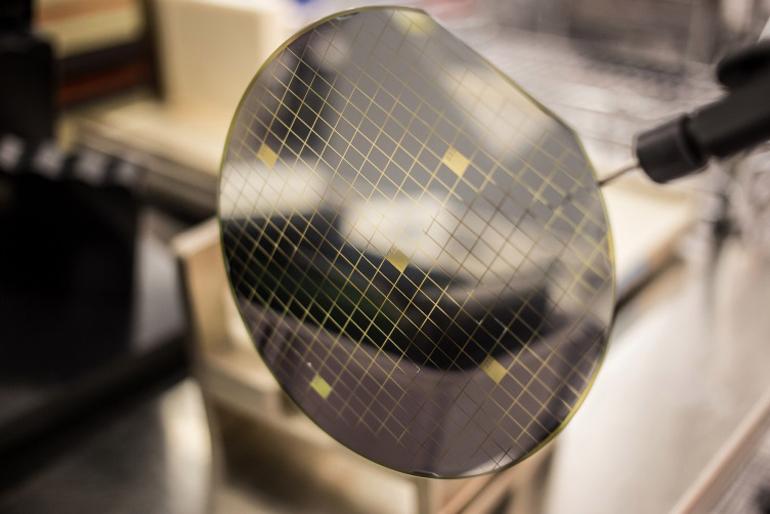

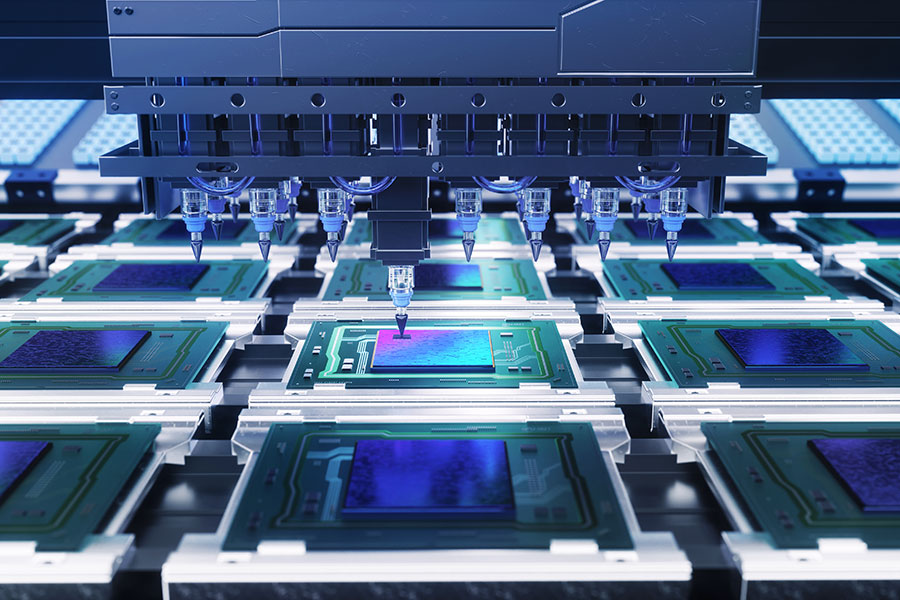






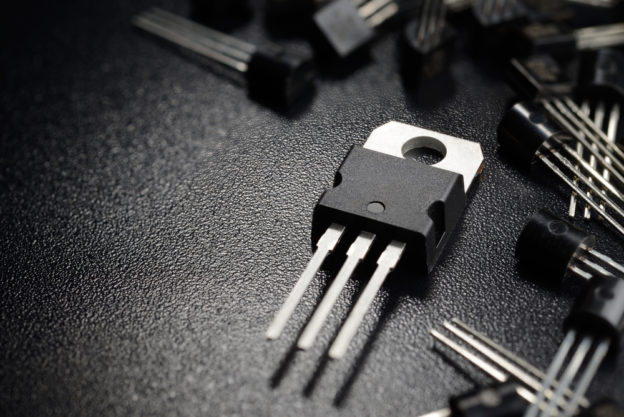

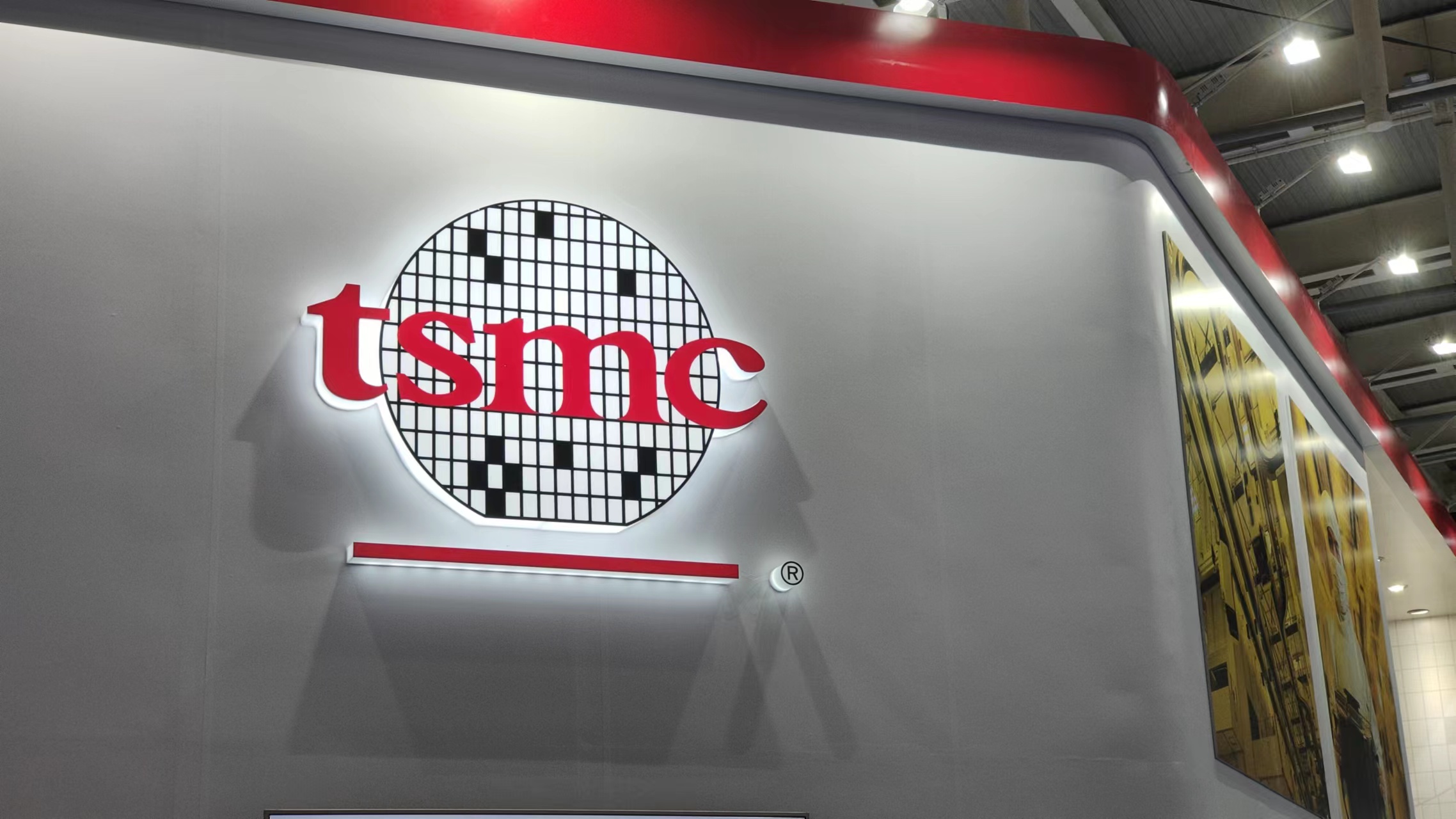
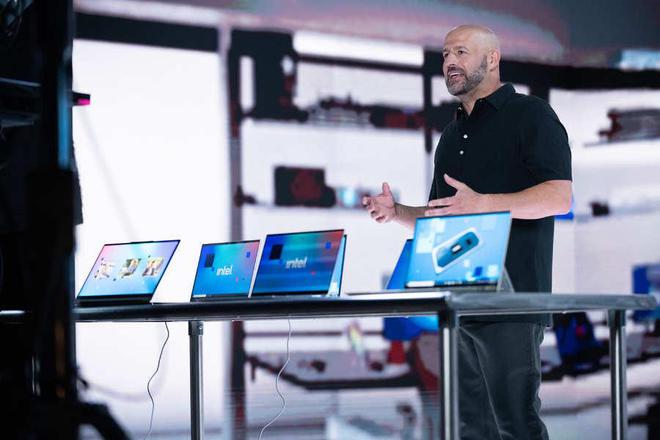
AEC-Q102 Qualified Device Combines Industry’s Fastest Switching Times and Highest Open Circuit Output Voltage of 8.5 V
MALVERN, Pa., June 07, 2023 (GLOBE NEWSWIRE) -- Vishay Intertechnology, Inc. (NYSE: VSH) today introduced a new Automotive Grade photovoltaic MOSFET driver that is the first such device to offer an integrated turn-off circuit in the space-saving SOP-4 package. Designed to deliver high performance for automotive applications — while increasing design flexibility and lowering costs — the Vishay Semiconductors VOMDA1271 features the industry’s fastest switching times and highest open circuit output voltage.
The integrated turn-off circuit of the optocoupler released today enables a turn-off time of 0.7 ms typical, which is the fastest for a MOSFET driver in the compact SOP-4 footprint. In addition, the VOMDA1271 provides a turn-on time of 0.05 ms — twice as fast as competing devices — and is the only driver in this package size to offer an isolation voltage of 3750 V and a typical open circuit output voltage of 8.5 V, which allows it to drive a variety of MOSFETs.
The AEC-Q102 qualified device is intended for use in pre-charge circuits, wall chargers, and battery management systems (BMS) for electric (EV) and hybrid electric (HEV) vehicles. To generate the higher voltages needed to drive IGBTs and SiC MOSFETs in these applications, two VOMDA1271 optocouplers can be used in series. In addition, the driver enables designers to create custom solid-state relays to replace legacy electromechanical relays in next-generation vehicles.
The optically isolated VOMDA1271 features an AIGaAs infrared LED (IRLED), which emits light that is absorbed by a photovoltaic gate array, generating the voltage used to turn on a MOSFET. This construction simplifies designs and lowers costs by eliminating the need for an external power supply. For even greater design flexibility, the device can be driven by a microcontroller’s GPIO pin. The optocoupler is RoHS-compliant, halogen-free, and Vishay Green.
Samples and production quantities of the VOMDA1271 are available now, with lead times of eight weeks.
TrendForce reports that May proved to be a turning point in the lithium salt market, highlighting a notable surge in prices. The price of battery-grade lithium carbonate and lithium hydroxide in China skyrocketed from less than CNY 200,000/ton (~USD 28,000) to over CNY 300,000/ton (~USD 43,000). Notably, the ASP of battery-grade lithium carbonate surged by more than 28%, hitting CNY 254,300/ton. In contrast, battery-grade lithium hydroxide, while slower to respond, saw a 4% drop, with its ASP at approximately CNY 254,900/ton in May. Interestingly, the price differential between these two types of lithium salts has now been significantly reduced.
Despite the sharp increase in lithium salt prices boosting battery cell costs, this hike hasn’t yet translated into an immediate rise in li-ion battery prices. Alongside this, the prices of other crucial li-ion battery materials, such as cathode precursor materials, anode materials, separators, electrolytes, and PVDF, continue to trend downwards. This combination of factors has led to a continued decline in li-ion battery prices throughout May.
May saw a 9% price drop in EV square ternary cells, LFP cells, and pouch ternary power cells, settling at CNY 0.75/Wh, CNY 0.67/Wh, and CNY 0.79/Wh, respectively, as EV markets gradually regained their footing. In the energy storage cell market, prices dropped by a significant 12.6% to CNY 0.65/Wh, with demand in the LFP storage cell market rebounding well, particularly due to the noticeable increase in orders from leading companies. In the consumer battery cell market, prices fell by 11.5%, with LCO cells pried at CNY 7.55/Ah. However, with consumer markets picking up and an expected surge in e-commerce sales in June owing to the 618 shopping day festival, LCO cells are likely to see a price rebound.
TrendForce posits that after a strong rebound in lithium salt prices in mid-May, the market started to stabilize towards the end of the month. While the Chinese EV battery market was slowly recuperating in May, the surge in lithium salt prices partly stemmed from the suppliers’ reluctance to lower prices. Another contributing factor was the increased demand from downstream battery manufacturers looking to replenish their stocks in anticipation of a price rebound.
TrendForce asserts that the Chinese EV battery industry is currently on a recovery path. In May, lithium salt prices began surging dramatically—at its peak rising by CNY 10,000/ton per day. Multiple factors contributed to this irrational price increase, which is not a result of a rapid surge in actual demand, but a steady recovery. June is expected to be a period of peak market demand. However, it’s important to monitor changes in actual downstream demand to prevent dramatic fluctuations in lithium salt prices due to market expectation psychology, which could potentially worsen market conditions.

EINDHOVEN, The Netherlands, June 06, 2023 (GLOBE NEWSWIRE) -- NXP Semiconductors (NASDAQ: NXPI) announced today a family of top-side cooled RF amplifier modules, based on a packaging innovation designed to enable thinner and lighter radios for 5G infrastructure. These smaller base stations can be more easily and cost-effectively installed, and blend more discretely into their environment. NXP’s GaN multi-chip module series, combined with the industry’s first top-side cooling solution for RF power, helps to reduce not only the thickness and weight of the radio by more than 20 percent, but also the carbon footprint for the manufacture and deployment of 5G base stations.
“Top-side cooling represents a significant opportunity for the wireless infrastructure industry, combining high power capabilities with advanced thermal performance to enable a smaller RF subsystem,” said Pierre Piel, Vice President and General Manager for Radio Power at NXP. “This innovation delivers a solution for the deployment of more environmentally friendly base stations, while also enabling the network density needed to realize the full performance benefits of 5G.”
NXP’s new top-side cooled devices deliver significant design and manufacturing benefits, including the removal of the dedicated RF shield, use of cost-effective and streamlined printed circuit board, and separation of thermal management from RF design. These features help networking solution providers create slimmer and lighter 5G radios for mobile network operators, while reducing their overall design cycle.
NXP’s first top-side cooled RF power module series is designed for 32T32R, 200 W radios covering 3.3 GHz to 3.8 GHz. The devices combine the company’s in-house LDMOS and GaN semiconductor technologies to enable high gain and efficiency with wideband performance, delivering 31 dB gain and 46 percent efficiency over 400 MHz of instantaneous bandwidth.
The A5M34TG140-TC, A5M35TG140-TC and A5M36TG140-TC products are available today. The A5M36TG140-TC will be supported by NXP’s RapidRF reference board series. For more information, see our fact sheet at NXP.com/TSCEVBFS or contact NXP Sales worldwide.

Per IPC’s May 2023 Economic Outlook report, the global economy continues to cool, but not quite as severely as expected at the start of the year. Stronger-than-expected growth in 2023 will come at the cost of weaker growth in 2024.
Labor markets remain extremely strong, despite the widely held view that recession is imminent. Both the United States and Europe are enjoying record low levels of unemployment. Strong labor markets and solid wage growth are likely to keep inflationary pressures stubbornly high.
“Consumer confidence fell sharply in the last month, erasing half of the gains since the all-time low levels of June 2022. Business confidence has also been weak. Manufacturers report a subdued outlook in both the U.S. and Europe,” said Shawn DuBravac, IPC chief economist. “Leading economic indicators continue to suggest a high risk of recession this year, even if the timing continues to push later into the year,” DuBravac added.
Additional data in the May 2023 IPC Economic Outlook show:
View May 2023 IPC Economic Outlook. For more information on IPC’s industry intelligence program including current research and reports, visit www.ipc.org/advocacy/industry-intelligence.
Source: EMS Now
The proposed IPEF Supply Chain Agreement would make our supply chains more resilient and competitive, and would establish a framework for lasting cooperation on issues like workforce development, supply chain monitoring, investment promotion, and crisis response.
Completing negotiations on the IPEF Supply Chain Agreement is a major achievement in support of the President’s Indo-Pacific Strategy and a win for consumers, workers, and businesses in the United States and throughout the region.
The IPEF partners will now take steps, including further domestic consultations and a comprehensive legal review, to prepare a final text for signature.
Today, the United States joined its IPEF partners – Australia, Brunei, Fiji, India, Indonesia, Japan, Republic of Korea, Malaysia, New Zealand, the Philippines, Singapore, Thailand, and Vietnam – in announcing the substantial conclusion of negotiations on a landmark IPEF Supply Chain Agreement.
The proposed IPEF Supply Chain Agreement seeks to ensure that American workers, consumers, and businesses benefit from resilient, reliable, and efficient supply chains. It would support the President’s effort to revitalize U.S. manufacturing, facilitating the steady supply of the materials, components, and inputs that U.S. companies rely on to compete effectively on the world stage.
The agreement would foster coordination to identify potential supply chain challenges before they become widespread disruptions. Moreover, through the Agreement, partners would work collaboratively to increase the resilience, efficiency, productivity, sustainability, transparency, diversification, security, fairness, and inclusivity of our supply chains.
The IPEF Supply Chain Agreement would create an IPEF Supply Chain Council to oversee the development of sector-specific action plans designed to build resilience and competitiveness in critical sectors, including by helping companies identify and address supply chain vulnerabilities before they become significant bottlenecks.
Through the proposed agreement, the IPEF partners would also create an IPEF Supply Chain Crisis Response Network that can serve as an emergency communications channel when one or more partners faces an acute supply chain crisis, facilitating more effective responses that can benefit American workers, businesses and consumers.
The proposed Agreement would also establish an innovative tripartite IPEF Labor Rights Advisory Board to help identify areas where labor rights concerns pose risks to the resilience and competitiveness of the partners’ supply chains. The proposed Agreement would also create a mechanism to cooperate with partners to address facility-specific allegations of labor rights inconsistencies.
The IPEF partners will now take steps, including further domestic consultations and a comprehensive legal review to prepare a final text for signature and then ratification, acceptance, or approval. However, the United States and its Partners will begin work immediately to realize the benefits of cooperation on supply chains, including through private sector engagement and the utilization of technical assistance and capacity building activities to increase investment in critical sectors, key goods, physical and digital infrastructure, transportation, and workforce projects.
“The proposed IPEF Supply Chain Agreement would be a win for American consumers, workers, and businesses. It shows that an innovative approach to economic policy that is focused on meeting the challenges of the 21st century in close coordination with partners can deliver meaningful results,” said Secretary of Commerce Gina Raimondo. “By having a network in place ahead of time, we can respond more effectively to supply chain challenges. That is what will make this agreement so unique and so important for the American people.”
In support the goals of the proposed Agreement:
As part of the Biden-Harris Administration’s Indo-Pacific Strategy, President Biden launched IPEF one year ago in Tokyo Japan. IPEF is a new platform for sustained economic cooperation with a group of like-minded countries that are aiming to address many of the unique challenges we have faced in recent years because of an increasingly global economy, rapidly changing technology, and an increase in competition. IPEF will help the United States and its partners shape the future of economic cooperation and trade in a region that is home to 40 percent of global gross domestic product (GDP) and a key source of inputs for American manufacturers – as well as a key export market for American-made goods.
President Biden has overseen a revitalization of the American manufacturing base. The Administration has made generational investments in new manufacturing capacity with a focus on industries of the future, with $400 billion of new private sector investment in major manufacturing projects in sectors like clean energy, semiconductor fabrication, and biotechnology, since President Biden took office. This has resulted in nearly 800,000 new manufacturing jobs and the most robust manufacturing growth since the 1950s.
Source: EMS Now
April factory shipments fell 33% while production was cut by 20%.
In March, Korea’s chip inventory rose 28% on February – the biggest m-o-m increase since February 1996,
March inventory was up 39.5% y-o-y.
Global Q4 DRAM revenue fell by 32.5% QoQ to $12.3 billion, says TrendForce.
The Q4 QoQ decline was larger than the QoQ decline of 28.8% for Q322 and comes close to the QoQ decline of 36% for the final quarter of 2008, when the global economy was in the middle of a major financial crisis
Source: Electronicsweekly
An enterprise establishes in society and benefits from society, then when it takes on its responsibility to feedback to the society that nourishes it, a positive cycle would be made between the enterprise and the society which helps both grow faster. Flyking believes in such a cycle and insists on doing charity every year.

At the beginning of this summer, from May 25th to 27th, Flyking assembled our executives and outstanding employees together as a 10 people team to go on an education-supporting charity tour.
This is the second year that Flyking brings our love to the students and families in Baise City, Guangxi Zhuang Autonomous Region. We were to visit families in need, donate our living supplies, and provide education grants. Moreover, we have prepared 250 sets of school uniforms for a local primary school named Naba, and books, art tools, stationeries, and sporting goods for four families which we visited last year. Through this charity tour, we hope we can help them to build up a well-resourced education not only to reduce education difficulties but also to enrich students’ extracurricular life.
On the 26th, Fred Wang, the VP of Flyking, Chen, the principal of Naba Primary School, and the other 9 Flyking colleagues, attended the donation ceremony together. During the ceremony, Flyking donated prepared 250 sets of school uniforms. We all regarded this donation as not only material assistance but also spiritual support, with the wish to study hard and fight for better lives.


After that, Flyking team visited Naba Primary School accompanied by Principal Chen. Chen introduced the curriculum of the school as well as the current environment of education and life situation. Flyking team brought our sincere greetings and blessings to all the teachers and also had a cordial conversation with the students, hoping that all the children there can grow up in a better environment and the teachers there can work wholeheartedly and happily.

The next day, the Flyking team visited 4 families we have been supporting and, brought them living and study supplies. We had serious and profound communications with each family, hoping that we could keep our enthusiasm for life in encouraging each other. In the course of our conversation, we also realized that what we were doing was of immense significance. This reinforces the idea that we want to help more people in the future.

With the perfect ending of our charity tour, Flyking Technology will continue to pay attention to the growth of students, and consistently build a bridge to link with young blood who are in need. We will better serve society and the public while practicing our company culture and core values.
SIA CEO John Neuffer today joined fellow members of the Task Force on American Innovation (TFAI)—an alliance of industry, scientific societies, and university organizations—in urging congressional appropriators to fund the investments in scientific research, innovation, and workforce authorized by the bipartisan CHIPS and Science Act. Signatories on the letter included SIA Board members Lisa Su (AMD), Dario Gil (IBM), and Pat Gelsinger (Intel), and SIA members Lawrence Loh (MediaTek), Jinman Han (Samsung), as well as corporate leaders and TFAI members Kent Walker (Google), Brad Smith (Microsoft), Mark Becker (APLU) and Barbara Snyder (AAU).
In the letter sent to Senate Appropriations Committee Chairwoman Patty Murray (D-Wash.) and Vice Chair Susan Collins (R-Maine), House Appropriations Committee Chairwoman Kay Granger (R-Texas) and Ranking Member Rosa DeLauro (D-Conn.), TFAI highlighted the importance of investments in innovation to America’s future:
Funding for critical research and education is an investment in our future competitiveness. Our country will reap the benefits of this investment for generations to come … Innovation has driven significant growth over the last 50 years with America’s GDP growing from $550 billion to more than $23 trillion. Federal research funding is a down payment on our nation’s future success.
The CHIPS and Science Act, landmark legislation enacted last year, provides $52 billion in government investments to reinvigorate domestic semiconductor production and innovation. The law also authorized a larger amount of federal funding for research and innovation, but these authorized amounts must still be appropriated by Congress. Failing to do so, the letter states, would “hamper our ability to meet global challenges and may result in the U.S. falling behind our competitors in critical technologies such as artificial intelligence and quantum computing.”
The letter also points out that the governments of global competitors are investing heavily in research, while U.S. government investments have fallen behind: “Between 2000 and 2022, U.S. funding for federal research actually fell as a percentage of GDP. Meanwhile, China is increasing its spending on research and development and is expected to continue this increase at an average yearly rate of 7% until 2025.”
SIA looks forward to continuing to work with U.S. policymakers to ensure consistent, ambitious investment in initiatives that strengthen U.S. scientific research and America’s future technology workforce.
Source: SIA

Micron was the only supplier to increase shipments. The Big Three all had ASP declines.

Q2 should see a rise in shipments, predicts TrendForce, but further declines in ASP won’t increase revenues.
The Big Three all reported a drop in quarterly revenue. Samsung saw a decline in both shipment volumes and ASP, resulting in a QoQ decrease in revenue of 24.7%, amounting to about $4.17 billion.
Micron climbed to the second position in Q1 but suffered a 3.8% revenue decline, taking its total down to $2.72 billion.
Hynix had a 15% drop in both units and ASP, leading to a 31.7% plunge in revenue, amounting to approximately $2.31 billion.
NEEDHAM, Mass. – Worldwide revenues for the 5G and 4G/LTE Enterprise Wireless WAN market (formerly referred to as the 4G/LTE and 5G Router & Gateway Forecast) will reach $5.5 billion in 2027, according to a new forecast from International Data Corporation (IDC). This represents a compound annual growth rate (CAGR) of 23.8% over the 2023–2027 forecast period. Worldwide market revenue in 2022 was just under $1.9 billion.
Enterprise Wireless WAN, the new naming convention of this market, has matured greatly over the last five years, with LTE evolving in its own right and 5G solutions bringing an enhanced set of reliability to wireless WAN offerings. Indeed, IDC has observed Enterprise Wireless WAN evolve beyond simply a fail-over for other access technologies to become a primary connectivity solution, in many cases.
“5G Enterprise Wireless WAN solutions scaled rapidly in 2022 across both the branch and mobile markets. Internet of Things (IoT) use lagged a bit in comparison but saw double-digit growth as well. Overall, Enterprise Wireless WAN has moved from not just a supporting technology, but to a critical capability in its own right,” said Patrick Filkins, research manager, IoT and Telecom Network Infrastructure at IDC. “Beyond simply connectivity, 4G/LTE and 5G solutions are playing an increasingly important role in SD-WAN and enterprise edge initiatives as well as being deployed en masse to connect public safety vehicles, public and private transportation, and across industrial environments where mobile solutions are required.”
The report, 5G and 4G/LTE Enterprise Wireless WAN Forecast, 2023-2027 (IDC #US50622523), presents IDC’s annual forecast for the 5G and 4G/LTE Enterprise Wireless WAN Market. Revenue is forecast for both routers and gateways. The report also provides a market overview, including drivers and challenges for technology suppliers.
Source: EMS Now
AR unit shipments will stay stable at 780,000 units.
The predicted fall for VR units is because of weaker-than-expected sales of newly released high-end devices.

Consequently, manufacturers are likely to pivot their sales strategies, shifting their focus to more cost-effective offerings.
While Apple’s latest offerings could stimulate some demand, the high price tags attached to these units continue to pose a significant barrier to broader market growth.
MetaQuest 2 continues to maintain its status as this year’s market-leading VR product as the release of Meta Quest 3 has been pushed back to 2024.
Although Apple is projected to launch a new product in 2023, this release is primarily targeted at developers, signifying an accompanying escalation in specifications, features, and, most importantly, cost.
TrendForce anticipates that a significant rise in the VR and AR market, potentially nearing a 40% annual increase in shipments, might not be realized until 2025
IDC reckons the 2023 European AR/VR market will be worth $1.1 billion and $3.4 billion respectively rising, by 2027, to a collective $10.5 billion, with a 2022-6 CAGR of 24.9%.
Source: Electronics Weekly
The CHIPS and Science Act, landmark legislation enacted last year to reinvigorate domestic semiconductor production and innovation, has already sparked substantial company investment announcements that will create jobs and strengthen America’s economy, national security, and global competitiveness. As part of our ongoing effort to provide input to government leaders during the implementation of this critical new law, SIA today submitted comments on the proposed rule of the Internal Revenue Service (IRS) and the Treasury Department to implement the CHIPS Act “advanced manufacturing investment credit.” In the filing, SIA commends Treasury for adopting a holistic approach to implementing the tax credit, while seeking clarifications or technical changes to provide taxpayers with more certainty and flexibility.
The tax credit, an integral part of the CHIPS Act incentives to strengthen the semiconductor ecosystem in the U.S., complements the grant program implemented by the Commerce Department to promote semiconductor manufacturing. The complex, technologically advanced processes of designing and manufacturing semiconductors and semiconductor manufacturing equipment require high levels of investment in facilities and equipment due to the complexity of the technology and the rigorous and exacting standards needed for construction, equipment, and infrastructure. Congress adopted the advanced manufacturing investment credit as part of the CHIPS Act to act as a powerful incentive to advance the goal of making the U.S. a competitive place for semiconductor manufacturing. The proposed regulations from Treasury and the IRS set forth the parameters of eligible investments for companies seeking to claim the credit.
The proposed regulations generally adopt a sound approach to implement the credit. Consistent with congressional intent to provide a credit for qualified investments “integral to the operation” of the facility, Treasury proposes to provide taxpayers with a credit for a wide range of investments necessary to manufacture semiconductors and semiconductor manufacturing equipment. In other words, the credit applies not only to the clean room where fabrication is conducted, but accompanying equipment and infrastructure needed to make the process work. However, SIA calls on Treasury to clarify that the qualified investments listed in the proposal are illustrative and not an exhaustive list. Treasury also sets forth reasonable rules governing the eligibility for the credit for projects that commence construction prior to December 31, 2026, but continue after that date. This is important since many projects will take years to complete.
SIA’s comments provide feedback on various technical aspects of the proposal, such as clarifying the definition of the term “semiconductor” to include semiconductor grade polysilicon, semiconductor silicon wafers, and compound semiconductors. Similarly, the comments seek clarification on the application of the credit for leased property, refurbished equipment, and other issues. SIA also comments on the “recapture” provision – a part of the CHIPS Act that restricts tax beneficiaries from engaging in certain transactions in China or another foreign country of concern. The Commerce Department proposed largely similar regulations to implement “guardrails” applicable to funding recipients of CHIPS grants. SIA also filed comments today on that proposal. In that filing, SIA urges Commerce and Treasury to align the rules, where applicable, in order to facilitate compliance with the grant program and credit recapture requirements and reduce administrative burdens, particularly for companies who participate in both the direct funding program and the tax credit.
The advanced manufacturing investment credit will be a driving force of investments in semiconductor manufacturing and equipment manufacturing facilities in the U.S., and SIA looks forward to the prompt implementation of final regulations to provide certainty and flexibility to the semiconductor industry.
Source: SIA

For first-quarter 2023, AmpliTech Group Inc of Hauppauge, NY, USA – which designs and makes signal-processing radio frequency (RF) microwave components for satellite communications, telecoms (5G & IoT), space, defense and quantum computing markets – has reported revenue of $4.1m, down on $5.1m a year ago. Core low-noise amplifier (LNA) sales continued to grow, but semiconductor distribution sales fell due to softer international demand.
Gross margin was 44%, down only slightly from 45.6% a year ago despite inflationary pressures.
Compared with net income of $3.63m a year ago, net loss was $619,000, attributed largely to a combination of corporate expenses, continuing R&D efforts in new product development, and a temporary downturn in sales in the Spectrum Division.
As of end-March, cash, cash equivalents and marketable securities totaled $10.6m (down from $16m a year ago). Working capital was $18m. AmpliTech says that this still gives it ample capital to finance all of its strategic growth initiatives.
With the AmpliTech MMIC Design Center (AGMDC) division completing design releases and ready to manufacture monolithic microwave integrated circuit (MMIC) products, in Q2/2023 an intense marketing campaign has begun, with expected bookings to occur during Q2 and shipments of MMIC-related products expected to contribute to sales in Q3/2023.
AmpliTech says that, by utilizing its Customer Relationship Management (CRM) engine, implementing artificial intelligence (AI)-powered sales prospecting techniques and leveraging increased attendance at trade shows, it achieved a 70% surge in request for quotes (RFQs) for its low-noise amplifier and 5G systems. CRM currently has $66m in the opportunity funnel, some of which the firm expects to turn into sales over the next Q3 and Q4 quarters.
AmpliTech is participating as a gold sponsor at the IEEE International Microwave Symposium (IMS 2023) in San Diego, CA, USA (11–16 June).
“Our team has been working relentlessly to develop the lowest-noise, lowest-power-dissipating amplifiers on the market and these are included in our new 5G and wireless infrastructure products and MMIC designs for the satellite, wireless and 5G markets, including the advanced military and commercial markets,” says CEO Fawad Maqbool.
“We have also recently expanded into the design of full-service, true5G Open Radio Access Network (O-RAN) front ends. These offerings are cutting-edge, end-to-end solutions and also backwards-compatible and retrofittable with existing obsolete 3G, and 4G systems,” he adds.
The 5G infrastructure market will rise at a compound annual growth rate (CAGR) of 37% to $99bn by 2030, forecasts Precedence Research. “This tremendous growth outlook reaffirms our belief in the significant potential of our product line to serve this market,” continues Maqbool.
“Despite weakening economic trends and the expected 11% decline in the semiconductor market for 2023, as reported by Gartner, we remain optimistic about semiconductors, which are integral to modern technology, and why we have invested heavily in our AGMDC semiconductor division in Texas. We anticipate that global demand will bounce back as market conditions improve,” says Maqbool.
“The second-quarter launch of the MMIC line under the AmpliTech Inc division, coupled with our recent distribution deal with NGK, are important developments that are expected to drive future growth, in addition to our diversified portfolio, strategic investments, and the unwavering commitment of our team,” concludes Maqbool.
Source: Semiconductor today
TrendForce reveals that alongside the four major CSPs reducing their procurement volumes, OEMs like Dell and HPE have also scaled back their annual shipment volume forecasts at some point between February and April, predicting YoY declines of 15% and 12%, respectively. Furthermore, server demand in China is facing headwinds due to geopolitical and economic challenges. Consequently, TrendForce projects a downward revision in global server shipment volumes for this year—a 2.85% YoY decrease at 13.835 million units.
TrendForce emphasizes that the server market in 1H23 remains pessimistic, with 1Q23 shipments experiencing a 15.9% QoQ decrease due to off-season factors and end-user inventory adjustments. The expected industry boom in 2Q23 failed to materialize, leading to a modest QoQ growth estimate of only 9.23%. Persistent influences on server shipments include OEMs lowering shipment volumes, subdued domestic demand in China, and continuous supply chain inventory adjustments. ESG issues have also led CSPs to prolong server lifecycles and reduce procurement volume. Moreover, OEMs are lengthening supports period for older platforms as businesses seek to control capital expenditures, further contributing to market strain.
Concurrently, with the growing excitement surrounding ChatBOTs this year, AI server shipments have witnessed a significant boost, driven by the proactive investments of industry giants such as Microsoft and Google. TrendForce anticipates a remarkable 2023 growth rate surpassing 10% for AI server shipments. However, as AI servers currently account for a relatively small portion (<10%) of total server shipments, their impact on revitalizing the sluggish server market remains fairly restricted.
Whether the server market can rebound this year hinges upon the rate of inventory reduction. Given current estimates, this turnaround could materialize as early as late 2023 or extend into the first half of 2024. Meanwhile, the rate of inventory depletion will also affect the schedule for introducing new platforms and may temper suppliers’ eagerness to transition to DDR5 and lower prices. Taking into account present market conditions, TrendForce does not rule out the possibility of further downward revisions to annual server shipment forecasts.
Source: EMS Now
Power semiconductor IC supplier onsemi of Phoenix, AZ, USA has signed a memorandum of understanding (MOU) for an $8m strategic collaboration that includes the establishment of the onsemi Silicon Carbide Crystal Center (SiC3) at Penn State University’s Materials Research Institute (MRI). onsemi will fund SiC3 with $800,000 per year over the next 10 years.
In addition to conducting SiC research at SiC3, Penn State and onsemi aim to raise awareness about the increasing demand for tech jobs in the semiconductor industry as part of their efforts to enhance the USA’s share of global semiconductor manufacturing. They will also partner on workforce development initiatives such as internship and cooperative programs and include SiC and wide-bandgap crystal studies in Penn State’s curriculum. The relationship with Penn State is part of onsemi’s commitment to promoting STEAM (Science, Technology, Engineering, Arts and Mathematics) education, ranging from helping K-12 students in underserved communities to university collaborations that support the development of the workforce.
“onsemi is a proven innovator, delivering a comprehensive portfolio of intelligent power and sensing technologies to enable and accelerate sustainable solutions across multiple markets,” comments Lora Weiss, Penn State senior VP of research. “At the same time, as per the National Science Foundation’s research expenditure rankings, Penn State is ranked first in materials science and second in materials engineering. We have world-class nanofab and characterization facilities that support research on thin films, silicon carbide and other materials used in semiconductors and other technologies. These complementary capabilities between onsemi and Penn State will have a strong impact on research and development, economic growth, and workforce development,” she believes.

Picture: Catherine C?té, VP & chief of staff to onsemi’s CEO, and Penn State executive VP & provost Justin Schwartz, after signing the MOU.
“Penn State is uniquely positioned to rapidly establish a silicon carbide crystal growth research program,” comments Pavel Freundlich, chief technology officer of onsemi’s Power Solutions Group. “The university offers a wide breadth of capability based on its current materials research, wafer processing capabilities in its nanofab facility, and a comprehensive, world-class suite of metrology instrumentation,” he adds.
“Over the next decade, this collaboration will enable Penn State to become the nation’s leading resource for semiconductor crystal science and workforce development,” believes Justin Schwartz, Penn State executive VP & provost. “This would not be possible without the relationship-building efforts of Priya Baboo, senior director of corporate and industry engagement, and the technical expertise of Joshua Robinson, professor of materials science and engineering, and their counterparts at onsemi,” he adds.
“Penn State’s expansion of its curriculum to offer specialty courses in SiC and wide-bandgap technology will play a key role in meeting onsemi’s strategic workforce development goals and help to meet American semiconductor workforce goals as outlined in the recently signed CHIPS and Science Act,” concludes Scott Allen, vice president, University Relations, at onsemi.
Source: Semiconductor Today
EINDHOVEN, The Netherlands, May 01, 2023 (GLOBE NEWSWIRE) -- NXP Semiconductors N.V. (NASDAQ: NXPI) today reported financial results for the first quarter, ended April 2, 2023.
“NXP delivered quarterly revenue of $3.12 billion, with all our focus end-markets performing better than anticipated, which resulted in total company revenue above the high end of guidance. Solid first-quarter results, guidance for the second quarter, and our early views into the second half of the year underpin a cautious optimism that NXP is successfully navigating through the cyclical downturn in our consumer-exposed businesses, while we see continued strength in our automotive and core-industrial businesses,” said Kurt Sievers, NXP President and Chief Executive Officer.
Key Highlights for the First Quarter 2023:
●Revenue was $3.12 billion, down 0.5 percent year-on-year;GAAP gross margin was 56.7 percent,
●GAAP operating margin was 26.4 percent and GAAP diluted Net Income per Share was $2.35;
●Non-GAAP gross margin was 58.2 percent, non-GAAP operating margin was 34.8 percent, and non-GAAP diluted Net Income per Share was $3.19;
●Cash flow from operations was $632 million, with net capex investments of $251 million, resulting in non-GAAP free cash flow of $381 million;
●During the first quarter of 2023, NXP paid cash dividends of $219 million. The interim dividend for the first quarter 2023 was paid in cash on April 5, 2023 to shareholders of record as of March 15, 2023;
●Beginning with the first quarter 2023 financial guidance, NXP began to apply an estimated annual tax rate to its GAAP and non-GAAP income before tax;
●On January 4, 2023, NXP announced the i.MX 95 family of applications processors, which delivers high performance safety and security features, developed in compliance with automotive ASIL-B and industrial SIL-2 functional safety standards and including an integrated EdgeLock? secure enclave;
●On January 5, 2023, NXP announced the SAF85xx, the automotive industries first 28nm, single chip RFCMOS radar family for next generation ADAS and autonomous driving systems. The SAF85xx radar family reinforces NXP’s leading radar portfolio, built on more than 15 years of technology leadership;
●On February 17, 2023, NXP was named one of the Top 100 Global Innovators? 2023 by Clarivate? for the sixth time. The award identifies organizations at the pinnacle of the global innovation landscape by measuring excellence focused on exceptional consistency and scale in innovativeness;
●On February 22, 2023, NXP announced the EdgeLock SE051H, a single chip secure element designed for Matter, adding to the industry’s broadest portfolio of Matter devices; and
●On March 29, 2023, NXP announced the UCODE? 9xm family of RFID tag solutions, providing high-capacity, flexible memory and industry-leading read/write performance. The UCODE? 9xm family, enables smaller tag antennas, supporting the tagging of smaller objects in supply chain tracking applications.
For the full Semiconductors Reports, please visit: https://media.nxp.com/news-releases/news-release-details/nxp-semiconductors-reports-first-quarter-2023-results
Source: NXP

The bipartisan Protecting Circuit Boards and Substrates Act of 2023 introduced by Representatives Blake Moore (R-UT-1) and Anna Eshoo (D-CA-16) finishes the job the CHIPS Act began by incentivizing investment in the domestic printed circuit board (PCB) industry.
This bill is a necessary follow-on to the CHIPS Act: without a trusted, reliable domestic source of PCBs and substrates, computer chips don’t connect to end use electronic devices.
Domestic PCB production shrunk over the past 20 years, falling from 30% to barely 4%of the world’s supply.
Ninety percent of the world’s supply now comes from Asia…56% in China alone.
Major provisions of the bill:
· $3 billion to fund factory construction, workforce development and R&D
· A 25% tax credit for purchasers of American-made PCBs and substrates
“Now is the moment for Congress to take decisive action by furthering robust legislation to reshore our manufacturing, strengthen our supply chains, and prioritize national security,” said Congressman Blake Moore. “The Protecting Circuit Boards and Substrates Act provides a tried and true approach to incentivizing American companies to produce printed circuit boards here at home, which will maintain the integrity of military and national security commercial materials, boost our economy and workforce, and usher in a new era of American manufacturing. The progress we have made on semiconductors is a significant step in the right direction, but congressional support for the entire microelectronics ecosystem is needed to reduce reliance on China. I am grateful to reintroduce this bill with Congresswoman Eshoo and am hopeful this bipartisan effort will successfully move through the legislative process.”
“Printed circuit boards (PCBs) are critical components of almost every piece of electronics used today. However, over the past two decades, a vast majority of PCB manufacturing has moved offshore, making PCBs vulnerable to tampering by foreign adversaries, and only 4% of PCBs are manufactured in the United States. If we want to ensure technological superiority across the global stage and strengthen national security, we need to bring PCB production back to America, which is exactly what my bipartisan bill does,” said Rep. Eshoo.
“Remember, chips don’t float. They need PCBs to connect to any electronic device. With production of American-made semiconductors ramping up, PCBs are a key ingredient in revitalizing the nation’s microelectronics ecosystem. Without a robust domestic supply chain, we have become almost entirely reliant on foreign suppliers for the PCBs we need,” said Travis Kelly, Chairman of the Printed Circuit Board Association of America.
PCBAA President Will Marsh said, “Our industry is grateful for this bipartisan support for American-made microelectronics. This is the right response to years of offshoring and a dangerous dependence on foreign sourcing.”
PCBAA Executive Director David Schild said, “From F-35s to F-150s, the modern world is built on printed circuit boards, and we need to make more of them in America. This bill will lead to new factories, high paying jobs and an ecosystem to support the work being done by our colleagues in the semiconductor industry.”
Source: EMS Now
JASPER, Ind. — Kimball Electronics, Inc. (Nasdaq: KE) announced financial results for the third quarter ended March 31, 2023.
·Net sales in the third quarter of fiscal 2023 totaled $484.7 million, an all-time quarterly high and up 32% year-over-year; foreign currency had a 2% unfavorable impact on net sales compared to the third quarter of fiscal 2022.
·Operating income of $25.2 million, or 5.2% of net sales, compared to $20.3 million, or 5.5% of net sales, in the same period last year
·Adjusted operating income of $25.6 million, or 5.3% of net sales, compared to $19.6 million, or 5.3% of net sales, in the same period last year
Net income of $16.4 million, or $0.65 per diluted share, compared to net income of $13.6 million, or $0.54 per diluted share, in the third quarter of fiscal 2022“I am very pleased with my first quarter as CEO of Kimball Electronics, and the opportunity to share strong results for Q3,” said Richard D. Phillips Chief Executive Officer. “The Company has been on a path of unprecedented growth, and for the fifth consecutive quarter, revenue reached an all-time record high. Throughout this journey, operating margin has improved as we ramp-up new and existing programs, and leverage our recent facility expansions in Thailand and Mexico. While the macro environment remains challenging, we are forecasting a solid finish in the fourth quarter, and we are updating our outlook for fiscal year 2023, with sales expected at the high-end and adjusted operating margin in the mid-to-low end of our guidance range. We also have been updating our Strategic Plan, which includes review of the positioning, and growth opportunities, within the vertical markets we support. The learnings from this review are encouraging and the path to $2 billion in annual revenue is within our sights. After a fast-paced onboarding, I’m even more excited about our future.”

Source: EMS Now
A preferred partnership between NuCurrent and Infineon aims to achieve more use cases for near-field communication (NFC), with cellphones powering contactless, wireless smart locks, Tim Tumilty, executive VP of business development at NuCurrent, said.
This is the same technology at work when using a cellphone to open a hotel room door or Tap to Pay. The key difference: Infineon’s energy-harvesting actuator collects the phone’s energy to power the transaction—minimizing or even eliminating the need for batteries and the costs associated with those batteries, Tumilty said.
“One of the challenges of deploying smart locks is the batteries,” he said. “Home-lock manufacturers put 9-V battery terminals on the outside of the lock. If the battery goes dead, the homeowner has to find a 9-V battery. Many companies and industries—schools, hospitals and manufacturers—want to replace traditional keyed locks with smart locks. But batteries cost time and money to replace. Eliminating the dead battery problem is driving the demand.”
Infineon was looking for a wireless-charging expert to complement its single-chip technology on the system side, said Qi Zhu, Infineon’s director of marketing and business development.
“Infineon and NuCurrent are bringing together complementary capabilities that are paving the way for new solutions eliminating batteries in locks, sensors and other applications via contactless energy transfer,” Doris Keitel-Schultz, VP of contactless power and sensing at Infineon, said in a press release. “We are providing a reliable, low-maintenance and secure replacement for batteries that significantly reduces e-waste. Our energy-harvesting technology via a mobile phone NFC field enables the digitization of the passive world and connects [that world] to the mobile phone ecosystem.”The companies, which announced their partnership this year, expect to see the technology deployed to customers ahead of next year, with scaling afterward, Tumilty said.
“We’ve shipped evaluation kits to some customers,” he said. “The technology is ready to go for certain applications.”
The energy-harvesting technology comes from Infineon. NuCurrent is using its optimization tools and intellectual property around magnetics, circuit design and system integration to speed up the energy-harvesting process and to improve user experience, especially in highly metallic environments, such as locks, Tumilty said.
In the meantime, Infineon’s NFC tag-side controllers with integrated H-bridge and energy harvesting enable a way to develop more cost-effective, miniaturized actuation and sensing applications that operate in both passive and active mode, the companies said.
In the past, companies have used microcontrollers, but that required more components and was difficult to manage, Zhu said. “We’re the only company to provide single-chip solutions for this use case,” he added.
New potential use cases include locked cabinets to store power tools, locked storage units for delivered packages and drug delivery carts, Tumilty said. The application can also work with sensors and could eliminate batteries on the medical patches that some people wear.
Others include employee lockers, outdoor locks where frigid temperatures will damage batteries and medical wound care, Zhu said.
Zhu said he expected that new use cases would come from the traditional lock market finally making a switch to wireless locks. Meantime, Tumilty said the greatest interest is from lock manufacturers for both consumer and industrial applications whose users complain about dead batteries.
Remote access sites, such as cellphone towers and industrial maintenance areas, are another big potential market, Tumilty said: “Being able to manage locks and credentials for that industrial infrastructure through a cellphone is huge. Keys can get lost. Then you have to replace those remote locks. All of those kinds of costs can be eliminated.”
Improving sustainability by avoiding or limiting battery disposal is a factor for decision-makers at many companies, he said.
Improving response/unlocking time and user experience remain major hurdles.
The energy harvesting already takes less than a minute, Tumilty said. But most users are not patient enough to wait that long.
“Our goal is to at least double the performance time,” he added. “It takes three to five seconds to open a [standard] padlock. Reducing time is huge.”
Improving the antenna to harvest energy as fast as possible is important, Zhu said. Besides improving the antenna performance, optimizing the mechanical design to reduce the energy demand is also important for a better user experience.
“We also need to inform customers that this is a battery-free, green product, and they may need to wait a little longer,” Zhu said.
Another goal is to improve spatial freedom, enabling the technology to work with less precise placement of the cellphone, Tumilty said.
“We want to get the same experience as Tap to Pay,” he said. “That gives you more flexibility to the types of other products you can add.”
“NFC wireless energy harvesting and charging are game-changing technologies from various perspectives: product design, environmental sustainability and user experience,” NuCurrent CEO Jacob Babcock said in prepared remarks. “NFC is in billions of devices today, but the capabilities of energy harvesting are expanding such that it’ll deliver entirely new features to product developers.”
Source: EE Times
Per IPC’s April 2023 Global Sentiment of the Electronics Supply Chain Report, last month delivered a mixed bag of industry sentiment: cost pressures are receding; industry demand appears to be slowing; and industry expects growth in some sectors.
Survey results show:
54 percent of respondents reported that labor and material costs are rising, but the number of companies experiencing rising costs continues to decline.
The Orders Index slipped to 105. While this is still in expansionary territory, it is the lowest it has been since the start of the survey.
Industry believes the military sector will grow 16 percent on average this year, followed by the aerospace sector and the communications sector which are both expected to grow by roughly 11 percent. The medical sector is expected to rise 10 percent.
The automotive sector and industrial electronics sector are both expected to rise 5.6 percent. The consumer electronics sector is expected to decline 3 percent and the computer sector is expected to decline 7 percent in 2023.
“Over the next six months, electronics manufacturers expect to see continued increase in both labor and material costs,” said Shawn DuBravac, IPC chief economist. “Meanwhile, backlogs, ease of recruitment, and profit margins are expected to contract.”
For the report, IPC surveyed hundreds of companies from around the world, including a wide range of company sizes representing the full electronics manufacturing value chain.
Source: EMS Now
Silicon carbide (SiC) technology is well into the power electronics mainstream, and it’s been apparent at the APEC 2023 show in Orlando, California. SiC semiconductors, which complement silicon in many applications, are now enabling new solutions by facilitating high power and high switching frequency in the 650 V to 3.3 kV range.
Keynote speakers and seminar presenters at APEC 2023 explained how SiC devices are uniquely positioned to serve the next-generation power electronics. They emphasized that know-how and learning cycles need to be developed and that there is a growing need for a trained workforce to skillfully insert SiC devices into power electronics systems.
There has also been a consensus that cost is a major issue for SiC components. At the same time, however, there is a broad agreement that cost is application-specific, and it can be reduced at the system level via clever engineering. “Meanwhile, SiC technology will continue to decrease cost at the component level,” said Peter Friedrichs, senior director for wide bandgap at Infineon Technologies.
Source: EE Times
First quarter 2023 results:
“Our first quarter results include double-digit year-over-year product shipment growth despite the pause in Semi-Cap spending, demonstrating the power of our sector diversification,” said Jeff Benck, Benchmark’s President and CEO.
Benck continued “While 2023 has already been a dynamic year, we are encouraged by the demand trends we are experiencing across the majority of our sectors. Coupled with our continued execution, we remain confident in our outlook for the current year as well as our ability to execute to our long-term targets.”
Source: EMS Now
Volkswagen is working with onsemi, a developer of intelligent power and sensing technologies, to produce a next-generation front and rear traction inverter for electric-vehicle powertrains. Execs at the companies say the inverters are part of a system optimization that will improve range, reliability and performance.
Onsemi has developed a power module around its EliteSiC 1200, Pietro Scalia, senior director of automotive traction solutions at onsemi, told EE Times. The module is designed with high levels of integration, scalability and flexibility. A 3D design structure enables a family of products with a common interface, he said.
The modules scale in terms of current and voltage ratings, with minimum changes for electrical, thermal and mounting interfaces, Scalia said. Flexibility comes from providing a half-bridge circuit; scalability comes from the ability of the same package to accommodate different chip quantities and sizes.onsemi’s Pietro Scalia“This makes our modules very scalable and modular for different customer platforms,” Scalia said. “Reliability and high-efficiency performance make it a top performer in the market, enabling the extra miles in the EV, which our customers value. Scalability and flexibility are essential because OEMs typically don’t just design one powertrain for an EV. They develop platforms that scale to cover multiple types of vehicles with different performance and price points.
“Drivers don’t necessarily care about the chip technology or module package, but they do experience the benefits, but drivers do notice vehicle response and the excitement that comes with it, a lack of range anxiety, as well as reliability and a good value for their money,” he added.VW’s electric sports utility vehicle, the ID.4, has an estimated range per charge for 2023 of 275 miles, according to VW.
For customers who prefer to minimize the use of rare Earth metals and avoid permanent magnet motors, onsemi also offers exciter modules as an accompanying module to accommodate externally excited motors, Scalia said.
While the current strategic collaboration was announced this year, teams from the two companies have collaborated for more than a year on optimization of the power modules, the companies told the press. Teams are now developing and evaluating prototypes for a new inverter. As part of the agreement, onsemi will deliver its EliteSiC 1,200-V traction inverter power modules, which are pin-to-pin–compatible to easily scale to different power levels and types of motors, the companies said.
“The superior performance and quality of onsemi’s traction inverter modules, together with our joint efforts to create the best system solution, enable us to deliver the outstanding driving experience and quality that customers expect from a VW Group vehicle,” Karsten Schnake, head of the operative and strategic semiconductor taskforce Compass at Volkswagen, told the press. “Onsemi’s broad portfolio of intelligent power and sensing solutions further allows us to offer cutting-edge technologies and features in our EVs, from the traction inverter and beyond. Besides this milestone, onsemi, with its balanced production-facility layout in the U.S., Asia and Europe, including the plant in the Czech Republic, is the perfect match to support our strategic markets with all high-voltage solutions and more.”
VW declined to comment further for this story.
With 19 wafer fabrication and packaging manufacturing sites, onsemi provides VW with more than 500 devices, including insulated-gate bipolar transistors, metal-oxide–semiconductor field-effect transistors, image sensors and power-management integrated circuits, the company told the press.
“Our broad manufacturing footprint, including a resilient end-to-send SiC supply chain, empowers onsemi to deliver the supply assurance that OEMs demand,” Simon Keeton, executive VP and general manager of onsemi’s power solutions group, said in prepared remarks. “Our investments in ramping production globally, especially in silicon carbide, further allow us to support VW’s rapidly scaling EV production.”
Source: EE Times
WASHINGTON—May 1, 2023—The Semiconductor Industry Association (SIA) today announced worldwide sales of semiconductors totaled $119.5 billion during the first quarter of 2023, a decrease of 8.7% compared to the fourth quarter of 2022 and 21.3% less than the first quarter of 2022. Sales for the month of March 2023 increased 0.3% compared to February 2023. Monthly sales are compiled by the World Semiconductor Trade Statistics (WSTS) organization and represent a three-month moving average. SIA represents 99% of the U.S. semiconductor industry by revenue and nearly two-thirds of non-U.S. chip firms.
“Semiconductor sales continued to slip during the first quarter of 2023 due to market cyclicality and macroeconomic headwinds, but month-to-month sales were up in March for the first time in nearly a year, providing optimism for a rebound in the months ahead,” said John Neuffer, SIA president and CEO.

Regionally, month-to-month sales increased in Europe (2.7%), Asia Pacific/All Other (2.6%), and China (1.2%), but decreased in Japan (-1.1%) and the Americas (-3.5%). Year-to-year sales decreased across all regions: Europe (-0.7%), Japan (-1.3%), the Americas (-16.4%), Asia Pacific/All Other (-22.2%), and China (-34.1%).
Source: SIA


Worldwide smartphone shipments declined 14.6% year over year to 268.6 million units in the first quarter of 2023 (1Q23), according to preliminary data from the International Data Corporation (IDC) Worldwide Quarterly Mobile Phone Tracker. This marks the seventh consecutive quarter of decline as the market continues to struggle with lukewarm demand, inflation, and macro uncertainties. While the decline is more than the 12.7% IDC previously forecasted, the results aren’t surprising. Inventory has remained elevated across regions, however it is in significantly better shape compared to six months ago thanks to reduced shipments and heavy promotional activities.
“The industry is going through a period of inventory clearing and adjustment. Market players remain cautious deploying a conservative approach rather than dumping more stock into channel to chase temporary gains in share. I think is the smart thing to do if we want to avoid an unhealthy situation like 2022,” said Nabila Popal, research director with IDC’s Worldwide Tracker team. “While we are optimistic about recovery by the end of the year, we still have a tough 3-6 months ahead. Everyone is anxious about exactly when the tide will turn and wants to be first to ride the wave of recovery. However, it’s a tricky situation. Anyone who jumps in too soon will drown in excess inventory. Now more than ever, it’s important to keep a close pulse of market. Barring unforeseen elements, IDC expects the market to cross into positive territory in the third quarter and see healthy double-digit growth by the holiday quarter.”
Almost all the regions suffered double digit decline in 1Q23. China witnessed close to 12% drop, which was slightly more than expected despite the recent reopening of the market. Consumers are prioritizing travel and entertainment over smartphone purchases and uncertainty still lingers, which is dampening consumer sentiment. Developed markets like the USA and Western Europe fared better than others with declines of 11.5% and 9.4% respectively. Emerging markets like APeJC, CEE and MEA saw larger 17- 20% declines.
“On a positive note, based on recent discussions we’ve had with OEMs and supply chain it appears the smartphone industry is collectively gaining confidence that we’ll see return to growth late this year, and into 2024,” said Ryan Reith, Group VP with IDC’s Worldwide Tracker team . “The largest supply side pullback in recent months was primarily those brands that serve the mid to low end of the market. This is usually where competition is high, and margins are low. Typically, these players are more hesitant to ramp back up again, and while this may still be the case, we are starting to see signs that optimism is growing amongst this crowd.”

Source: EMS Now
STMicroelectronics has released its annual sustainability report detailing 2022 performance, strategy, and ongoing action plans.
“We provide our customers with the key enabling products and technologies for decarbonization and a more sustainable society through digitalization and electrification. We are committed to doing so through a secure and responsible supply chain that prioritizes our people and the planet,” said Jean Marc Chery, President and CEO, STMicroelectronics. “Our strong commitment to sustainability is clear from the important progress we are making in all areas and from our ambition to drive further improvement to achieve all our sustainability goals, including our goal to be carbon neutral by 2027.”
The identification of ST’s priority sustainability topics is formalized through a regular multistakeholder materiality exercise and the company’s reporting is aligned with Global Reporting Initiative (GRI) Standards for stakeholder inclusiveness, sustainability context, materiality, and completeness.
ST’s performance across many areas was recognized again by multiple ESG rankings, indices and international certifications including, among others, Dow Jones Sustainability Index World and Europe, EuroNext VIGEO Europe 120, FTSE4Good, ISS ESG Corporate Rating and MSCI.
ST’s 2022 ESG achievements and progress include:
Sustainable Technology
ST technologies and products enable its customers to boost sustainability and seize opportunities with continued improvement of the Company’s social and environmental footprint at every stage of the product lifecycle (Sustainable technology). In 2022: 77% of new products were identified as responsible (responsible sourcing, eco-design, advanced EHS standards of manufacturing, responsible products, and applications) (vs 69% in 2021); and 23% of total revenue derived from responsible products (vs 20% in 2021).
Sustainable Way
ST is on track to become carbon neutral by 2027 (Energy and climate change) and, while continuing to expand manufacturing capacity, actively worked in 2022 to further reduce its environmental footprint, including the following achievements: a 40% decrease in GHG emissions for scopes 1 and 2 since 2018 in absolute terms (vs a 34% decrease in 2021); an increased sourcing of electricity coming from renewable sources to 62% (from 51% in 2021); and the reuse, recovery, or recycling of 95% of the Company’s waste (vs 90% in 2021), reaching the 2025 target ahead of time.
ST also continued to put people first, with actions and training to support a more diverse and inclusive culture, along with continued progress on health and safety, and talent attraction and engagement, including the following achievements:
? Sustainability performance is now part of the incentive program for over 21,000 employees.
? Over 19,000 employees trained in 2022 on the new leadership model designed to support the transformation journey of the company.
? 86% of employees recommend ST as a great place to work (+3 points vs 2021) (Talent attraction and engagement).
? A further decrease in the recordable case rate for employees (work-related injuries per 100 employees per year) to 0.10 (from 0.12 in 2021), a best-in-class performance.
? Reached the target of hiring 30% women for exempt positions for the second year in a row.
Sustainable Company
Innovation is the driving force that fuels ST’s growth and helps achieve the Company’s business objectives. ST has a collaborative approach for profitable growth, working across ecosystems and communities and with academic, private, and public partners, to create market-leading products and solutions that enable the Company’s customers to tackle tomorrow’s challenges and fuel their future growth:
? 12% of net revenues (US$1.9 billion) invested in R&D to support innovation.
? Involved in 186 active R&D partnerships worldwide.
? More than 450 STEM (Science, Technology, Engineering, and Mathematics) events and initiatives reaching over 100,000 students and teachers (Community and education).
The 26th annual report contains highlights and details of ST’s sustainability performance in 2022 and presents the Company’s ambitions and longer-term goals in alignment with both the United Nations Global Compact Ten Principles and Sustainable Development Goals and the Science Based Targets initiative (SBTi). It is aligned with Global Reporting Standards (GRI), Sustainability Accounting Standards Boards (SASB), and Task Force on Climate-Related Financial Disclosures (TCFD). A third party has verified this report.
More information on ST’s sustainability efforts can be found at https://www.st.com/content/st_com/en/about/sustainability.html.
Source: EE Times
The European Institutions recently reached provisional agreement on the European Chips Act, paving the way for the region’s introduction of an important framework to build out innovation in the European semiconductor ecosystem and security of supply for Europe’s industries.
The European Chips Act, proposed by the European Commission in February 2022, has been the subject of negotiation with the European Parliament and the EU Council (Member States). While this week’s agreement must still be finalized, endorsed and formally adopted by both institutions, it sets the wheels in motion for the roll-out of Europe’s own Chips Act. Formally, following adoption, the EU Council will pass an amendment for the establishment of the Chips Joint Undertaking under Horizon Europe. Both legal texts will be published at that time.
IPC welcomes the European Chips Act as an important step towards strengthening European leadership in innovation and secure and resilient supply chains. In the negotiation process, IPC strongly welcomed fresh emphasis brought by the European Parliament to strengthening European semiconductor packaging capability and enabling a more robust electronics ecosystem. Throughout the process, IPC has urged the adoption of a final package that reflects the strategic role of advanced packaging in driving semiconductor innovation and ensures needed funding is allocated accordingly (see our position on the initial draft legislation).
In an executive meeting with European Government officials organized by IPC and iMAPS on April 13th, industry leaders welcomed the imminent adoption of the Chips Act and its inclusion of packaging in scope. They discussed next steps needed to enable European leadership in back-end segments of the value chain, including IC substrate fabrication and semiconductor assembly & test. The meeting also included leading European EMS and Printed Circuit Board companies that underscored the next steps needed to support a more resilient European electronics manufacturing ecosystem “silicon-to-systems.”
A silicon-to-system strategy would enhance the region’s capabilities and capacities to package semiconductors into advanced components but also include the assembly of those components onto printed circuit boards. This entire silicon to systems ecosystem is necessary to support Europe’s digital and green transitions.
IPC applauds the dedicated work of the European institutions in their negotiation process on the Chips Act. We remain committed to working with the EU Institutions, the industry and other key stakeholders in the Chips Act implementation, as well as the region’s broader initiatives to realign industrial policies to address vital vulnerabilities and ensure a more competitive, resilient and sustainable electronics industry.
Source: EMS Now
The world’s fastest-growing industry, Electronics System Design and Manufacturing (ESDM) continues to transform lives, businesses, and economies across the globe. The global electronic devices market is estimated to be $ 2.9 Tn in 2020. India’s share in the global electronic systems manufacturing industry has grown from 1.3% in 2012 to 3.6% in 2019.SOURCE: Invest India
Technology transitions such as the rollout of 5G networks and IoT are driving the accelerated adoption of electronics products. Initiatives such as ‘Digital India’ and ‘Smart City’ projects have raised the demand for IoT in the electronics devices market and will undoubtedly usher in a new era for electronic products.India is expected to have a digital economy of $1 Tn by 2025.India committed to reach $300 Bn worth of electronics manufacturing and exports by 2025-26.One of the largest electronic devices industries in the world anticipated reaching $ 300 Bn by FY 2025-26.India’s exports are set to increase rapidly from $10 Bn in FY21 to $120 Bn in FY26.India’s domestic production in electronics has increased $ 29 Bn in 2014-15 to $ 67 Bn in 2020-21.Production of mobile handsets is further slated to increase in value from $30 Mn in FY 21 to $ 126 Mn in FY 26.India produces roughly 10 mobile phones per second which amounts to ~$950 worth of production every second.India’s semiconductor market is expected to increase from ~$15 Bn in FY20 to ~$110 Bn in FY30, growing at a CAGR of 22%.100% FDI is allowed under the automatic route. In the case of electronics items for defence, FDI up to 49% is allowed under automatic route and beyond 49% through government approval.
SOURCE: Invest India, EMS Now


The SEMPER X1 LPDDR Flash provides safer, more reliable, and real-time code execution which is deemed critical for automotive domain and zone controllers. According to Infineon, the device delivers 8 times the performance of current NOR Flash memories and achieves 20 times faster random read transactions for real-time applications, enabling software-defined vehicles to deliver advanced features with enhanced safety and architectural flexibility.
Intelligence, connectivity, and complexity, along with safety and dependability requirements means that next-generation vehicles are increasingly reliant on state-of-the-art multi-core processors developed on advanced manufacturing processes.
Consequently, higher density embedded non-volatile memories are no longer seen as a viable cost option at these advanced nodes, and system architects need to consider using external NOR for code storage. These complex automotive real-time processors, however, demand more performance than current memories available on the market.
To address this, Infineon developed the SEMPER X1 with an LPDDR4 interface operating at 3.2 GBytes/sec and a multi-bank architecture to meet the performance and density requirements of domain and zone controllers.
“With the drive towards semi-autonomous vehicles and more sophisticated engine control, real-time decisions are critical to the dependability and safety of the vehicle and driver,” said Jim Handy, General Director of the semiconductor market research firm Objective Analysis. “Infineon’s LPDDR Flash memory should address these needs well in next-generation vehicles, providing real-time execute-in-place (XiP) memory and enabling it to scale independently of the processor.”
Source: New Electronic
The European Council and the European Parliament has reached an agreement on a deal that will invest $3.6 billion in EU funds — with the aim of attracting a further $43.7 billion in private investment — to build out the continent’s semiconductor manufacturing capabilities.
Europe, like the U.S., is grappling with a fast-changing semiconductor marketplace, as governments around the world increasingly adopt more restrictive policies on the import and use of chips from overseas.
The EU’s Chips Act is broadly similar in its goals to the US CHIPS and Science Act, which was signed into law by President Joe Biden in August 2022. Both the US and EU measures are meant as a response to post-pandemic supply chain issues that the semiconductor market has faced in recent years and to the US’ ongoing “chip war” with China, over security concerns posed by close governmental oversight of major silicon manufacturers in that country.
Meanwhile, the new EU deal reached between the Parliament and the Council of Ministers, announced Tuesday, has three central “pillars.” The first is the “Chips for Europe Initiative,” which centers on building out manufacturing capacity through knowledge transfer and the establishment of “competence centers” around Europe. These centers will be designed to provide access to experimental data and technical expertise, letting subject-matter experts improve their skills and help create new designs.
The second policy pillar centers on attempts to attract new investment by granting fast-track permitting to “first-of-its-kind” facilities in Europe and designating additional centers of excellence.EU Chips Act Call For Monitoring Supply ChainFinally, the Chips Act provides for a monitoring and crisis response system for the supply chain, which is designed to alleviate the supply shortages that resulted from the COVID pandemic and the war in Ukraine. The European Commission welcomed the news that an agreement had been reached in an official statement, saying that semiconductors are a critical geostrategic concern and that the Chips Act would buttress both Europe’s economic competitiveness in the area and its strategic position, by increasing the share of chips produced in the EU.
“Recent shortages of semiconductors have highlighted Europe’s dependency on a limited number of suppliers outside of the EU, in particular Taiwan and South-East Asia for manufacturing of chips, and the United States for their design,” the Commission statement said.Margrethe Vestager, executive vice president of the EC, tweeted her own approval, as well, saying that boosting Europe’s ability to produce chips domestically makes it a bigger partner in the global supply chain, and helps enable societal advances.
“We need chips to power digital and green transitions or healthcare systems,” she said.
The Chips Act dates back to a European Commission proposal first issued in February 2022, and adopted by the European Council in December of that year. The European Parliament approved it this February, and the measure will now go back to the Council and the Parliament for formal ratification and adoption.
Source: EMS Now
WASHINGTON—April 18, 2023—The Semiconductor Industry Association (SIA) today released the following statement from SIA President and CEO John Neuffer commending the introduction in the House of Representatives of bipartisan legislation to restore full tax deductibility of R&D investments. The legislation, the American Innovation and R&D Competitiveness Act, was introduced in the House today by Reps. Ron Estes (R-Kan.) and John Larson (D-Conn.), along with more than 60 bipartisan supporters. A similar bill to restore R&D expensing was introduced in the Senate on March 16 by Sens. Maggie Hassan (D-N.H.) and Todd Young (R-Ind.) and has garnered 20 bipartisan cosponsors.
“R&D is the driving force behind semiconductor innovations that have advanced modern technology and made the world smarter, more efficient, and better connected. U.S. semiconductor companies invest an average of one-fifth of their revenues in R&D annually, among the largest shares of any sector. Restoring the longstanding policy of allowing the immediate, full deduction of R&D investments would help expand U.S.-based R&D and innovation, spur economic growth and job creation, and strengthen America’s tech workforce.
“We commend Reps. Estes and Larson for introducing the American Innovation and R&D Competitiveness Act and look forward to working with bipartisan leaders in Congress to swiftly pass this critical legislation.”
Since 1954, R&D expenditures were treated as an immediate deduction. For decades, the immediate deduction for U.S. R&D expenditures provided a longstanding incentive for chip companies to make those investments, helping to maintain U.S. leadership in this vital technology. As of 2022, however, U.S. R&D expenses must now be amortized over five years, making it less attractive to perform R&D in the U.S. and harming competitiveness of the domestic semiconductor industry.
Even prior to the amortization requirement, the U.S. R&D incentive trailed those offered by global competitors, and without action to restore immediate deductibility of R&D expenses, the U.S. ranking for incentivizing research is projected to fall to the bottom quarter of OECD countries.
In addition, R&D costs are rising exponentially, with the most advanced semiconductor node costing more than $500 million to design, double the cost to design the previous leading-edge chips. Full and immediate expensing is necessary to spur R&D investments in the U.S. semiconductor industry and allow companies to further innovate and expand the domestic R&D workforce.
Source: SIA
Incap estimates that its revenue and operating profit (EBIT) for 2023 will be lower than in 2022. The decrease in the revenue and operating profit estimate is related to Incap’s largest customer, who has decided to reduce inventory levels and is therefore postponing some orders from 2023 to 2024.
With the current change in the market dynamics including improved component availability as well as a recession in some key markets, the customer has built up too high inventory levels, as growth is smaller than they initially projected.
Incap has a long-term relationship with the customer and is working closely with them by adjusting the production volumes to help them reduce their inventory levels. The inventory adjustment period is expected to be temporary. The customer is in a strong financial position, and the outlook for their business remains good.
Incap expects growing revenue from most of its other customers, but the growth is not enough to compensate for the decreased sales to the largest customer.
Previously Incap estimated that its revenue, operating profit (EBIT) and adjusted operating profit (EBIT) for 2023 would be higher than in 2022.
Incap’s business review for January–March 2023 will be published on 26 April 2023.
Source: EMS Now
Renesas Electronics Corp.’s cellular-to-cloud development kits powered by its 32-bit microcontrollers (MCUs) now fully support Microsoft’s Azure cloud services. The two Cloud Kits—the CK-RA6M5 and CK-RX65N—enable users to readily connect and manage wireless IoT devices via the cloud.
With these latest updates, IoT device developers can now take advantage of unique features and services available through Azure, an open and flexible cloud computing platform used by billions of devices worldwide.
Both cloud development kits incorporate Renesas’ LTE CAT-M1 module, which wirelessly connects MCUs to cloud services without a gateway. The kits are equipped with Microsoft’s new Embedded Wireless Framework, providing a simplified link to the Azure cloud platform. The Embedded Wireless Framework lets any network adapter securely connect to the cloud, providing greater flexibility and better lifecycle management of cloud-based products. Asset tracking, building automation, medical data management, voice command and industrial control are some of the embedded applications that can benefit from the Renesas Cloud Kits.
To ensure reliable functionality and interoperability, both CK-RA6M5 and CK-RX65N kits have been certified by Microsoft Azure. This means that the devices are validated to connect with Azure IoT Hub and can be securely provisioned through the Device Provisioning Service. Additionally, both devices are IoT Plug and Play-certified, enabling developers to integrate the devices into their solutions using pre-defined device models. This eliminates the need to manually configure hardware.
The Renesas Cloud Kits include a high-performance MCU, the RYZ014A Cat-M1 Pmod, six on-board sensors, and extensive peripherals, including a USB FS connector, USB-to-UART serial converter, two PMOD connectors, and a battery connector. For additional layers of security, Renesas collaborated with its partner, Crypto Quantique to implement a software-based IoT cryptography platform that securely connects IoT devices to server-hosted applications on-premises or in the cloud. Hardware-based security such as the Renesas Secure Crypto Engine 9 (SCE9) and Trusted Secure IP (TSIP) driver has been incorporated on the RA6M5 and RX65N MCUs respectively.
“The opportunities that the Azure cloud platform brings to IoT developers are limitless,” said Roger Wendelken, Senior Vice President and Head of MCU Business in Renesas’ IoT and Infrastructure Business Unit. “Our Azure-enabled Cloud Kits provide engineers with a powerful development environment to create, evaluate and deploy cloud-based IoT solutions with confidence. With real-time data analytics and easy integration with other Azure services, developers can focus on building best-in-class IoT applications.”
“Bringing the Renesas Cloud Kits into the Azure cloud ecosystem is a natural step forward,” said Stefan Wick, Product Lead IoT Edge and RTOS at Microsoft Azure. “By customizing the Embedded Wireless Framework for Renesas’ MCUs, engineers can reuse application code across different IoT products and leverage a flexible abstraction interface for seamlessly connecting IoT systems to the Azure cloud services. Using the pre-configured development platform, system developers can leverage the power of Azure IoT and create reliable and scalable IoT solutions, while saving time and cost for development.”
“We are proud to have been involved in the implementation of enhanced security measures for the Renesas Cloud Kits, as well as providing seamless and speedy connectivity to the Azure cloud,” said Chris Jones, Director of Applications at Crypto Quantique. “Our QuarkLink IoT platform provides industry-leading security, giving customers peace of mind knowing that their data and devices are secure.”
Renesas’ Cloud Kits make it easy to collect data from onboard sensors, upload them to the cloud for AI/Machine Learning processing and tools, and download the model back to the end point. Simplified development software is available out-of-the-box, including Reality AI Tools and Edge Impulse Studio. Reality AI Tools provide a true endpoint AI for a range of applications, including anomaly detection and voice recognition. The Edge Impulse Studio integrated cloud environment enables end-to-end AI/ML development using the kits’ accelerometer for asset and package tracking use cases.
Source: EE Times
Apple is exploring ways to reduce its reliance on China as tensions between Washington and Beijing continue to escalate.
Its longtime partners, who make most of the world’s iPhones in sprawling factories in China, have added assembly lines in other countries at a rapid pace over the past year, the people said on the condition of anonymity.
The world’s most valuable company struggled last year with chaos at Foxconn’s main “iPhone City” complex in Zhengzhou, which drove home vulnerabilities in Apple’s supply chain and forced it to cut output estimates.
Of the total production, Apple exported US$5 billion of iPhones in the fiscal year ended last month, nearly four times as much as the previous period, the people said.
Apple is likely to manufacture the next iPhones in India at the same time as in China, sometime in the fall of this year. If so, that would be the first time that iPhone assembly begins concurrently in the two countries.
If the aggressive expansion of its suppliers continues, Apple could assemble one-quarter of all its iPhones in India by 2025.
Even before last year’s iPhone City difficulty, Apple had recognized the need to diversify its supply chain. It successfully lobbied for incentives in India and pushed suppliers Foxconn, Pegatron and Wistron Corp (緯創) to ramp up locally. The trio, which together employ about 60,000 workers in India, make models ranging from the aging iPhone 11 to the latest iPhone 14.
That has helped place Apple at the heart of India’s ambitions to become a major manufacturing alternative to China.
Apple is among the world’s most exacting when it comes to manufacturing. Its production chain encompasses hundreds of companies across the world and employs millions, much of that now in China.
The migration of iPhone production represents an economic triumph for India that could have implications for how other US brands plan their futures. For Apple, the country itself represents a fount of future growth as the Chinese economy sputters.
Apple is scheduled to open its first two retail stores in India next week, one in the financial hub of Mumbai and another in the capital New Delhi.
Apple CEO Tim Cook is scheduled to fly in to inaugurate the two stores, underscoring the domestic market’s rising importance.
Apple has also sought changes in India’s labor laws as part of its effort to expand local production and create mega factories.
Its largest contract manufacturer, Foxconn, plans to invest about US$700 million in a southern state to make phone components and possibly iPhones.
The tech industry’s reliance on China could be reduced by 20 to 40 percent by 2030, Bloomberg analysts said, adding that it could take years of investment to untangle from China’s complex, efficient and skilled supply chain.
EInfochips, a leading provider of product engineering and digital transformation services, has announced the launch of a Reference Development Platform (RDP) based on the NXP? Semiconductors i.MX 93 applications processors, designated EIC-i.MX93-210.“
As an early access partner for the NXP i.MX 93 platform, eInfochips offering a cutting-edge reference development platform. This platform enables customers across smart home, smart city and industrial verticals to quickly prototype their ideas and bring them to reality”, says Parag Mehta, chief sales, and business development officer at eInfochips.
The i.MX 93 applications processor includes the scalable Arm? Cortex?-A55 Core, which enables efficient machine learning acceleration and advanced security with an integrated EdgeLock? secure enclave to support edge computing.
This RDP enables developers to kick-start the development of creating more capable high-performance, cost-effective, and energy-efficient machine learning applications. As engineers progress in their product development journey, eInfochips can support them in accelerating time to market with its 25-plus years of ER&D experience. Further, eInfochips’ expertise spans across hardware development, firmware, edge-AI enablement, end-to-end design and manufacturing.
The next-generation NXP i.MX 93 processor is a robust innovation that provides new use cases and opens a new gateway to a faster, more secure, powerful, and advanced edge-based system for industrial automation, smart home and intelligent appliances, smart buildings and automotive applications.
“NXP’s i.MX 93 applications processor combines both a level of performance and low power that will enable a wide range of innovative edge devices,” said Jeff Steinheider, vice president and general manager, Industrial Edge, NXP. “The eInfochips RDP will enable a wide range of customers to rapidly prototype and move into production.”
Worldwide PC shipments totaled 55.2 million units in the first quarter of 2023, a 30% decrease from the first quarter of 2022, according to preliminary results by Gartner, Inc. An unfavorable combination of oversupply and continued low PC demand due to economic uncertainties and a lack of purchase motivation led to the second consecutive quarter of historic year-over-year decline.
“PC pricing pressures intensified during the quarter as vendors offered considerable discounts to clear inventory,” said Mikako Kitagawa, Director Analyst at Gartner. “To drive demand, vendors temporarily reduced average selling prices (ASPs) of PCs already in the channels, but ASPs of new PCs shipping into the channels remained elevated due to inflation-driven supply chain cost increases.”
“Essentially, PC vendors pursued a strategy to protect margins rather than to pursue market share by lowering prices,” added Kitagawa. “ASPs will increase moderately in 2023 as vendors pass the cost increases for new PCs entering the channel to end users.”
The top vendors in the worldwide PC market remained unchanged in the first quarter of 2023, with Lenovo maintaining the No. 1 spot in shipments with 23.3% market share (see Table 1).
Table 1. Preliminary Worldwide PC Vendor Unit Shipment Estimates for 1Q23 (Thousands of Units)

Notes: Data includes desktop and laptop PCs that are equipped with Windows, macOS and Chrome OS. All data is estimated based on a preliminary study. Final estimates will be subject to change. The statistics are based on shipments selling into channels. Numbers may not add up to totals shown due to rounding.
Source: Gartner (April 2023)
Lenovo recorded the steepest annual shipment decline in its corporate history over two quarters. While the U.S. was a particularly challenging market for Lenovo, the company had modest growth in Japan driven by end of fiscal year PC purchases.
This was the seventh consecutive quarter of double-digit shipment decline for HP. HP shipments in EMEA dropped by 37% compared to a year ago but declined less steeply in the U.S. market.
Dell saw its fourth consecutive quarter of year-over-year decline. Asia Pacific was its hardest-hit market, with shipments down by over 40%. Dell’s decline was largely driven by the weak business PC market.
“Business PC demand was slow overall this quarter, but the small and midsize business (SMB) market was especially weak due to economic uncertainties,” said Kitagawa. “IT has remained a top area for SMB spending as organizations recognize the importance of leveraging technology for growth, but PCs are often the first area to face budget cuts as the product life can be extended. In contrast, spending in other technology segments such as software and IT services is expected to grow in 2023.”
Regional Overview
The U.S. PC market declined 25.8% in the first quarter of 2023. While the US economic outlook in the first quarter of 2023 was better than initially anticipated, particularly for consumer spending, it did not significantly impact PC sales as consumers opted to spend their money elsewhere.
Dell secured the top spot in the U.S. PC market based on shipments with 26.4% market share, while HP followed with 25.7% share (see Table 2).
Table 2. Preliminary U.S. PC Vendor Unit Shipment Estimates for 1Q23 (Thousands of Units)

Notes: Data includes desktop and laptop PCs that are equipped with Windows, macOS and Chrome OS. All data is estimated based on a preliminary study. Final estimates will be subject to change. The statistics are based on shipments selling into channels. Numbers may not add up to totals shown due to rounding.
Source: Gartner (April 2023)
The EMEA PC market experienced a significant decline of 35.9% compared with a year ago, with shipment volumes for the whole region falling below the total U.S. shipment volume.
“The continued impact of political unrest, inflationary pressures, interest rate increases and a pending recession has culminated in another massive decline in the EMEA PC market,” said Kitagawa. “None of the top six vendors were immune from the collapse, all losing more than a third of their shipment volumes year-over-year.”
The Asia Pacific PC market also had a significant decline, with China suffering the most due to high inventory in the channel and weak demand. Outside of China, the PC market was also weak due to inflation, increasing interest rates and local currency depreciation. However, countries including India and Vietnam fared slightly better due to the shift of manufacturing sites and business operations out of China, as enterprises tried to diversify to reduce over-reliance on China as a single production source. The Japanese market saw a relatively moderate decline at 9.8% compared to other regions.
These results are preliminary. Final statistics will be available soon to clients of Gartner’s PC Quarterly Statistics Worldwide by Region program. This program offers a comprehensive and timely picture of the worldwide PC market, allowing product planning, distribution, marketing, and sales organizations to keep abreast of key issues and their future implications around the globe.
TrendForce’s latest research revealed that shipments of gaming monitors have seen their first decline since 2016 due to high inflation, resulting in only 19.8 million units being shipped in 2022 for a 13% YoY decline. TrendForce predicts that demand should recover in 2023 however, jumping back up to 20.8 million units—an increase of 5% YoY. This recovery will mostly be driven by three factors: First, a number of brands are replacing their 75Hz models with 100Hz models. Second, the 2023 Hangzhou Asian Games is scheduled to take place in the third quarter, where Esports is set to be one of the competing categories. This will help drive up demand for gaming products. Lastly, China has finally begun lifting COVID restrictions, which means demand for Internet cafes should gradually recover.

TrendForce reveals that vertical alignment (VA) LCD monitors took the lion’s share of the market in 2022 at 51%. This was followed by in-plane switching (IPS) LCD monitors at 43.4%, and finally twisted nematic (TN) LCD monitors accounted for 5%. However, it’s worth noting that OLED gaming monitors have grown in popularity, taking 0.6% of the market share in 2022. Thanks to the diversification of OLED products, that market share is expected to grow to 1.6% in 2023. Furthermore, TrendForce predicts that IPS monitors may begin competing with VA monitors given that not only are IPS products increasing their market share but many IPS gaming monitors are seeing a continuous price reduction.

In 2022, 165–180Hz gaming monitors had the highest market share at 51.9%, followed by 120–160Hz monitors at 32.5%, 200Hz and above at 11.7%, and finally 100Hz at 3.9%. TrendForce predicts that the market share of 165–180Hz and 100Hz monitors will increase significantly in 2023. It is believed that 165–180Hz monitors will eventually absorb the market share of 120–160Hz monitors as the price difference between the two ranges is not large. Furthermore, it is expected that 100Hz monitors will come to mostly replace 75Hz gaming monitors, and TrendForce predicts that their market share will increase 5.1 percentage points to 9% in 2023 (the market share of 100Hz monitors mentioned in this article only accounts for gaming monitors).


WASHINGTON—April 6, 2023—The Semiconductor Industry Association (SIA) today announced global semiconductor industry sales totaled $39.7 billion during the month of February 2023, a decrease of 4.0% compared to the January 2023 total of $41.3 billion and 20.7% less than the February 2022 total of $50.0 billion. Monthly sales are compiled by the World Semiconductor Trade Statistics (WSTS) organization and represent a three-month moving average. SIA represents 99% of the U.S. semiconductor industry by revenue and nearly two-thirds of non-U.S. chip firms.
“Global semiconductor sales continued to slow in February, decreasing year-to-year and month-to-month for the sixth consecutive month,” said John Neuffer, SIA president and CEO. “Short-term market cyclicality and macroeconomic headwinds have led to cooling sales, but the market’s medium- and long-term prospects remain bright, thanks to growing demand across a range of end markets.”
Regionally, year-to-year sales increased slightly in February in Japan (1.2%), but decreased in Europe (-0.9%), the Americas (-14.8%), Asia Pacific/All Other (-22.1%), and China (-34.2%). Month-to-month sales were down across all regions: Europe (-0.3%), Japan (-0.3%), Asia Pacific/All Other (-3.6%), the Americas (-5.3%), and China (-5.9%).
Source: SIA
China has gone to the World Trade Organisation (WTO) to try and get it to intervene in the denial of chip-making equipment exports to China by the US, Japan and the Netherlands.
The three countries have agreed to ban exports to China of any equipment which could allow them to run processes capable of 14nm and below.
Yesterday the Chinese commerce ministry said the government was concerned about Japan’s export ban and said it should correct its “wrong practice”.
Last weekend, China’s foreign minister Qin Gang, met Japan’s foreign minister Yoshimasa Hayashi and tried to persuade him to that Japan should not back the ban. Qin argued that the US had ‘brutally suppressed’ Japan’s chip industry and was now trying to do the same thing to China.
Last December, China filed a complaint with the WTO about the US restrictions on chip-making technology but the US said that this was a matter of US national security because the technology could be used to make chips for military purposes and so fell outside the remit of the WTO.
Source: Electronics Weekly
For fourth-quarter 2022, POET Technologies Inc of Toronto, Ontario, Canada — designer and developer of the POET Optical Interposer, photonic integrated circuits (PICs) and light sources for the data-center, telecom and artificial intelligence (AI) markets — has reported non-recurring engineering revenue (NRE) of $200,000 compared with $233,000 last quarter and $nil a year ago. In 2022, POET provided NRE contract services to multiple customers, one of which continued to contract services from the prior year. The revenue relates to unique projects that are being addressed utilizing the capabilities of the POET Optical Interposer.
Net loss has risen further, from $3.7m ($0.10 per share) a year ago and $4m ($0.11 per share) last quarter to $6.3m ($0.17 per share). This included R&D costs of $2.7m, up from $2m a year ago and $1.9m last quarter. The firm notes that fluctuations in R&D costs for a company of this size and this stage of growth is expected on a period-over-period basis as it transitions from technology development to product development.
Cash flow from operating activities was –$2.7m, compared with –$3.2m a year ago and –$2.5m last quarter.
During the quarter, POET:
· Completed a non-brokered private placement of 1,126,635 units of the corporation at a price of C$3.81 (US$2.78) per unit for gross proceeds of C$4,292,479 (US$3,184,332).
· Released to production four optical engine products, further advancing the firm’s commercialization goals. The products included transmit and receive optical engines for 100G CWDM4 as well as receive optical engines for 200G FR4 and 400G FR4.
· Developed multi-engine 100G CWDM4 and 100G LR4 chip-on-board solutions for lead customer ADVA Optical Networking SE. ADVA will use POET’s multi-engine transmit & receive chips in a pluggable solution that packs the functionality of four independent 100Gb/s interfaces into a single QSFP-DD housing that is scalable to high volume as well as higher data rates.
· Began sampling 400G FR4 and 800G 2xFR4 receive optical engines in partnership with Luxshare Technology Co Ltd., a global technology provider for data-communication facilities and enterprise-level products, to enable the sale of power-efficient and cost-optimized 400G and 800G transceiver solutions.
· Amended the terms of 1,764,720 common share purchase warrants with an expiry date of 11 February and an exercise price of C$11.50 to expire on 11 May at an exercise price of C$4.25. By 10 March, the firm had received US$5,475,102 from the exercise of 1,758,716 of these warrants.
· Demonstrated 800G optical engines and light source products at the Optical Fiber Communications (OFC 2023) Conference & Exhibition, where the firm also hosted meetings with potential customers, partners and media. Additionally, it introduced and showcased a live demonstration of ‘POET Infinity’, a new chiplet-based transmitter platform for 400G, 800G and 1.6T pluggable transceivers and co-packaged optics solutions.
· Entered into an agreement with Beijing FeiYunYi Technology Ltd (BFYY) to design optical engines for deployment of optical modules in the telecom market globally, beginning in China. Valued at up to $1m over a two-year period, the agreement includes NRE for POET and an initial purchase order for 10,000 units that will be used to sample customers. BFYY has forecasted optical engine purchases from POET’s joint venture Super Photonics Xiamen (SPX) at over $30m over a three-year period.
· Announced a collaboration with Vanguard Automation GmbH, the developer of 3D-nanoprinted Photonic Wire Bond and Micro-Lens technology and manufacturer of software-defined equipment for photonic integration and packaging, to enable the integration of Micro-Lenses on the Optical Interposer platform to maximize coupling efficiency while maintaining POET’s wafer-level passive assembly process.
· Several current and former directors holding warrants that expire on 3 April have exercised their warrants.
“The company’s effort during the fourth quarter has been well rewarded in the form of several pivotal announcements in early 2023,” notes chairman & CEO Dr Suresh Venkatesan. “In January, we released to production four optical engines, marking a significant commercialization milestone for both POET and Super Photonics. Having recently completed product design verification and reliability testing on these optical engines, we are now working closely with multiple customers on the internal qualifications for their end customers,” he adds.
“We were also pleased to announce POET’s optical engines enabling ADVA’s unique MicroMux Quattro pluggable device. The opportunity to work with ADVA serves to further validate the company’s optical engines. As additional evidence of our progress, in February we announced our partnership with Luxshare Technology, which is focused on leveraging POET’s highly integrated Infinity chiplet platform to expand its 400G and 800G pluggable transceiver solutions for the data-center market. Also notable was the signing of key supplier arrangements in the fourth quarter with Lumentum Holdings for its directly modulated lasers,” he adds.
“In conjunction with OFC, we also showcased our POET Infinity chiplet-based transmitter platform for 400G, 800G and 1.6T pluggable transceivers and co-packaged optics solutions. Our team was extremely pleased with the high level of interest and engagement at OFC, which we anticipate to lead to expanded product sampling and customer qualifications in the coming quarters,” continues Venkatesan. “POET is increasingly in a predominant position to become a leading optical engine supplier at advanced data rates, as we continue preparations to ramp volume production in second-half 2023,” he believes. “Additionally, we are making important advancements on our targeted products for AI-ML applications at an ideal time as market demand rapidly expands for new scalable, cost-effective solutions.”
Source: Semiconductor Today
In a bid to make India a ‘product developer and manufacturing nation’, the Ministry of Electronics and Information Technology (MeitY) has set up a nine-member task force. The move marks as a step in country’s efforts to position itself as an alternative to China and Vietnam.The task force will be chaired by additional secretary (MeitY), Bhuvnesh Kumar with joint secretary (electronics), Amitesh Kumar Sinha as the member convenor. The task force will be submitting their recommendations in two months.
The task force includes veterans of the electronics industry in India such as Ajai Chowdhry, founder, HCL; Sunil Vachani, chairman, Dixon Technologies; Hari Om Rai, chairman, Lava International; Vivek Bansal, President Engineering, VVDN; Aman Gupta, co-founder, Boat Lifestyle; Sanjay Nayak, managing director, Tejas Networks; and Vivek Tyagi, Chairperson, IESA (India Electronics and Semiconductor Association).
The circular though does not go into the details of the mission, it says that the task force will be deliberating on how to propel India to be a product developer and manufacturer nation.
Industry executives in the know said the task force will look at deepening the domestic value addition in electronics manufacturing and charting the local production story beyond the ambitious production-linked incentive (PLI) scheme.
The government has been running a Rs 36,000-crore PLI scheme for smartphone manufacturing since 2020. The scheme, now in its third year, has attracted global manufacturing companies including Apple contact manufacturer Foxconn, Wistron and Pegatron, and Korea’s Samsung, along with Indian companies such as Dixon Technologies, Lava International and more. Later the Union Cabinet had given approval to the Production-Linked Incentive (PLI) Scheme for White Goods (Air Conditioners and LED lights) on 7th April 2021, to be implemented from FY 2021-22 to FY 2028-29 with an outlay of Rs 6,238 Crore.
The PLI Scheme on White Goods is designed to create complete component ecosystem for Air Conditioners and LED Lights Industry in India and make India an integral part of the global supply chains. The Scheme extends an incentive of 6% to 4% on reducing basis on incremental sales for a period of five (5) years subsequent to the base year and one year of gestation period.
Smartphone shipments from original design manufacturers/independent design houses (ODMs/IDHs) declined by 5% year-on-year (YoY) in 2022, according to Counterpoint Technology Market Research’s latest Global Smartphone ODM Tracker and Report.
According to Senior Research Analyst Shenghao Bai, the YoY decline in ODM/IDH companies’ shipments in 2022 was driven by weak performance from OPPO Group, Transsion Group, Lenovo Group and HONOR.
“These smartphone OEMs were hurt by economic headwinds during the year and the negative effects were passed directly to their ODM partners,” said Bai. “However, the contribution of ODMs toward smartphone shipments has been increasing. For instance, the proportion of ODM shipments in vivo rose rapidly in 2022 after the brand kicked off its cooperation with Huaqin and Longcheer.”
Longcheer, Huaqin and Wingtech continued to dominate the competitive landscape of the global smartphone ODM/IDH industry in 2022. The companies, also known as the ‘Big Three’, accounted for 76% of the global ODM/IDH smartphone market in 2022 compared with 70% in 2021.
Global Smartphone ODM/IDH Vendors Shipment Share, 2022

Source: Counterpoint Research’s Global Smartphone ODM/IDH Tracker, 2022
“Longcheer’s shipments surged in 2022 due to strong orders from Xiaomi and Samsung, helping the company rank first in terms of shipment share. Meanwhile, Huaqin managed to remain one of the leaders among ODMs due to its diversified client portfolio and an increase in orders from vivo, the top smartphone OEM in China. In contrast, Wingtech saw only a modest YoY increase in shipments, as it continues to view smartphone ODMs as only one component of its overall ODM business,” Senior Research Analyst Ivan Lam said. “In Tier 2, Tinno’s shipments continued to grow steadily after the spin-off of the WIKO brand, due to successful marketing with major carriers in the US, Japan and Africa. Its partnerships with Lenovo and Transsion also contributed to an increase in shipments. MobiWire experienced a significant rise in shipments after winning Transsion’s projects. Additionally, its recent collaboration with TCL is expected to serve as an alternative revenue source as TCL shifts its focus to the below $300 segment.”
“The leading ODM players are actively expanding their ODM and EMS services to other smart device categories, with Huaqin ranking first in shipments in broader smart devices categories. To enrich their portfolios, ODMs are actively exploring sectors such as components, semiconductors, automotive and XR products. They are trying to put more helmsmen in place to ensure their company sails more steadily in the face of global headwinds,” Lam said.
China’s manufacturing sector has been recovering after COVID-19 restrictions in the country were lifted. China’s capacity is expected to return to normal by 2023. Meanwhile, the global electronic industry’s manufacturing diversification continues to grow.
Bai said, “Smartphone OEMs are investing heavily in India. Meanwhile, EMS companies are expanding their assembly lines to India, Southeast Asia, LATAM and other regions. India’s local manufacturing will be able to fulfill the domestic demand and will also be sufficient for exports.”
The semiconductor ecosystem in the United States is broad and diverse, as illustrated by SIA’s new U.S. Semiconductor Ecosystem Map, a first-of-its-kind tool that allows users to explore industry activities across the country, including nearly 500 locations in 42 states. This expansive ecosystem is comprised of semiconductor manufacturing, chip design, intellectual property and chip design software providers, semiconductor materials and manufacturing equipment, and research and development, including university R&D partners of the Semiconductor Research Corporation (SRC) and the National Nanotechnology Coordinated Infrastructure (NNCI).
Of particular note, the U.S. Semiconductor Ecosystem Map highlights announced company investments for new and expansion semiconductor ecosystem projects. These projects cover a range of activities needed to bolster the U.S. chip ecosystem, including new, expanded, or upgraded fabs in various semiconductor segments (e.g., advanced logic, memory, analog, and legacy chips), semiconductor equipment facilities, and facilities to produce key materials used in the chip manufacturing process. From the time the CHIPS Act was introduced in the Spring of 2020 through the months following its enactment in August 2022, companies in the semiconductor ecosystem announced dozens of projects to increase manufacturing capacity in the U.S. As of March 2023, some highlights of announcements spurred by the CHIPS Act include:
·Over $210 billion in new private investments announced across 19 states to increase domestic manufacturing capacity.
·Over 50 new semiconductor ecosystem projects announced across the U.S., including the construction of new fabs, expansions of existing sites, and facilities that supply the materials and equipment used in chip manufacturing.
·44,000 new high-quality jobs announced in the semiconductor ecosystem as part of the new projects, which will support many more jobs throughout the broader U.S. economy.
As the CHIPS Act incentives and R&D programs continue to be implemented, SIA’s U.S. Semiconductor Ecosystem Map will be updated to reflect the ever-growing domestic semiconductor footprint.
Source: SIA
The report draws up ten key recommendations for Government if it is to achieve its ambitions of becoming a science and technology superpower. The report, ‘How can the UK turbocharge its ambition to become a science and technology superpower?’, has been published following a parliamentary roundtable which Pragmatic convened last month.
The roundtable brought together policy makers, business leaders, industry bodies and think tanks from across the science and technology sector.
The report was also based on research commissioned by Pragmatic earlier this year, which revealed that 40% of UK business leaders surveyed do not agree the Government is providing enough support for this sector to help them compete on a global scale and reach superpower status by 2030.
According to the report the UK has a rich background in science and technology, but while the Department for Science, Innovation and Technology is driving further investment and world-leading work in five ‘critical technologies’ - AI, engineering biology, semiconductors, quantum computing and telecoms – in order to become a true global ‘superpower’, stronger foundations are needed to maximise the potential of the UK’s tech and science business ecosystem.
Pragmatic’s report lays out ten key recommendations for the government:
Levelling the playing field – the Government must create a level playing field for UK-based science and technology companies in comparison with other global markets. More than half (53%) of business leaders surveyed by Pragmatic thought the Government didn’t provide enough incentives for companies to keep their manufacturing operations and headquarters in the UK.
Strategy – the Government should publish the promised white papers and strategies to support the five ‘critical technologies’ as soon as possible, including the long-awaited semiconductor strategy.
Leveraging domestic demand – the Government must look into how it uses public sector procurement as a tool to support domestic demand for cutting-edge science and technology companies. Over a third (37%) of business leaders surveyed felt that more government procurement opportunities would be helpful for securing UK-based investment to grow their businesses.
Supply chain security – the Government must consider how new innovative models for delivering technologies could assist in a more secure supply chain in the UK.
Cultivate an investor ecosystem – the Government should cultivate a more dynamic and confident approach from British investors towards innovative science and technology businesses.
Capitalise on existing networks – working with the existing Catapult network and other expert bodies, the Government must examine how to better marry tech investors and experts to guide investment decisions.
Global communications campaigns – the Government should prioritise global communications campaigns to promote British success stories.
Streamlining visas – the Government should streamline the current visa process and reduce costs for the sector to recruit talent from abroad.
Training the next generation – the Government should create more opportunities for British post-graduates to undertake secondments in science and innovation hubs abroad.
Promoting STEM in schools – the Government should better promote better STEM careers in schools, fostering links between innovative businesses and local educational institutions.
The Government recently published the Science and Technology Framework, with a clear intention to publish strategies and white papers to support the five 'critical technologies', including semiconductors.
To achieve ‘Superpower’ status the Government must take concrete action to capitalise on the UK's strong foundations and help the sector grow and prosper. Failure to do so, will see the country losing out on a thriving science and technology business ecosystem.
“As an innovative British business, we want to help this country achieve its goal of becoming a science and technology superpower,” said Scott White, CEO and founder of Pragmatic Semiconductor. “To begin to grapple with these questions, we brought together experts and decisionmakers from across the science and technology sector for a parliamentary roundtable, and undertook research to underpin our understanding of the challenge we face. We hope it will make a practical contribution to the Government’s work to turn scientific and technological ambition into a reality.”
Chair of the roundtable, Paul Howell, MP for Sedgefield, said, “I know that in the UK, we have the ingredients that we need to succeed in becoming a science and technology superpower. We have a tradition of innovation and a hunger to succeed. We have some of the world’s finest universities, employing and teaching the brightest minds. And we have some of the most exciting, ground-breaking science and technology companies in the world.
“The UK’s ambition to become a science and technology superpower is crucial to driving economic growth and prosperity. Pragmatic’s report is a welcome addition to the public discussion about how we can best realise that ambition, and I look forward to the debate it will provoke.”
Source: New Electronics
Semiconductors are the key enabling technology in a broad range of products across virtually all segments of our economy. Despite a cyclical market downturn that took hold during the second half of 2022, global semiconductor sales reached an all-time high of $574 billion for the year, an increase of 3.3% over 2021 sales. Newly released data on 2022 semiconductor sales by broad product category, known as “end use,” reveal which types of products saw the largest sales increases in 2022.
Historically, the PC/computer and communication end markets have accounted for approximately two-thirds of overall sales, with sectors such as automotive, industrial, and consumer electronics accounting for the remainder. But sales by end-market in 2022 showed a marked shift, according the 2022 Semiconductor End-Use Survey from the World Semiconductor Trade Statistics (WSTS) organization. While the PC/computer and communication end markets still accounted for the largest share of semiconductor sales in 2022, their lead shrunk. Meanwhile, the automotive and industrial applications experienced the largest growth for the year.
The table below presents the change in market share.

Source: WSTS and SIA analysis
Illustrating the growing demand for chips in these industries, the automotive and industrial sectors will represent 14% and 12% of the average growth in chip sales by 2030, respectively, driving demand growth through the decade, according to a McKinsey analysis (see table below). Despite the current short-term downturn in the global semiconductor market, demand for chips in the long-term is expected to show vibrant growth. And, to meet this growing demand, our industry has recently committed to expanding manufacturing capacity in the U.S. through private investments of over $200 billion thus far.

Note: Per Annum (p.a.)
Source: SIA
ADI has introduced a dual output DC/DC μModule regulator with patented silicon, layout, and packaging innovations. Operating from up to 40V input, the LTM8080’s front-end is a high efficiency synchronous Silent Switcher step-down regulator followed by two separate low noise, low dropout (LDO) regulators. To further suppress switching noise, the LTM8080’s packaging integrates an EMI barrier wall or shield. The result is low noise values of <1μVRMS (10Hz to 100kHz), 2nV/√Hz (10kHz) spot noise, and 80dB PSRR (100kHz). Compared to discrete solutions without an EMI shield, the LTM8080 reduces output ripple voltage by up to 70% for a simplified and quiet design. The LTM8080 is specifically designed to power digital loads that are susceptible to switching regulator noise such as data converters, RF transmitters, FPGA I/O and clock, op amps, transceivers, and medical scanners.
The LTM8080 μModule regulator’s integrated Silent Switcher architecture minimises EMI emissions and enables the device to pass CISPR22 Class B and CISPR25 Class 5 without an input filter. The adjustable switching frequency (200kHz to 2MHz) and selectable operation modes minimise the risk of frequency interference for very low noise instrumentation and high speed/high precision signal chain applications.
LTM8080 Additional Features:
· Dual 500mA or Single 1A Output Current
· Output Voltages: 0V to 8V
· Voltage Tracking Function to Minimise Power Loss
· 100μA SET Pin Current with ±1% Initial Accuracy
· Parallelable for Lower Noise and Higher Current
Pricing and Availability
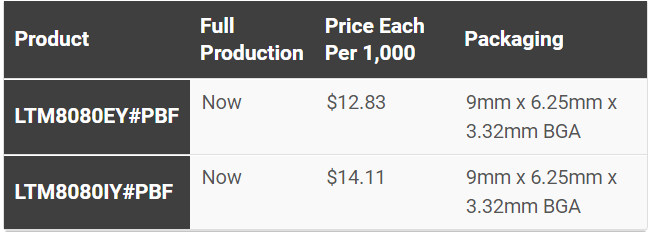
Source: Electronics Weekly
Infineon Technologies and Delta Electronics are expanding their long-term cooperation from industrial to automotive applications to provide more efficient and higher-density solutions for the fast-growing market of electric vehicles (EV).
The agreement covers a wide range of components such as high-voltage and low-voltage discretes and modules as well as microcontrollers to be used in EV drivetrain applications such as traction inverters, DC-DC converters and on-board chargers.
In addition, both parties agreed to set up a joint innovation lab for automotive applications. The Delta-Infineon Automotive Innovation Centre will be co-managed by both companies. It is scheduled to be set up in Pingzhen, Taiwan in the second half of 2023.
“Infineon and Delta share the common goal of developing increasingly energy-efficient and CO2-saving solutions that support global decarbonisation efforts,” said Peter Schiefer, president of Infineon’s Automotive division. “We want to further advance the energy efficiency of electromobility together by combining Infineon’s comprehensive automotive product portfolio and application know-how with Delta’s expertise in integration and system optimisation. Ensuring the energy efficiency of automotive applications is of paramount importance in our time and we are committed to further improving it.”
“Infineon is a trusted partner of Delta. Over the past 25 years we have successfully collaborated in the area of industrial products. We are now looking forward to extending this partnership to electromobility,” said James Tang, corporate VP of Delta Electronics. “We see a growing demand in the automotive industry for innovative, clean and energy-efficient solutions. Together with Infineon, we are committed to support the global transition to electromobility with our products and solutions and to bring electromobility to a whole new level.”
Source: PEW
Huawei had to redesign more than 4,000 boards and replace over 13,000 components to circumvent U.S. sanctions and restrictions, according to Huawei founder Ren Zhengfei.
Ren delivered the speech during a February 24 seminar to thank the public and academics who participated in the company’s search for solutions to its technology predicament. The transcript was also posted by Peking University and Shanghai Jiao Tong University, among others.
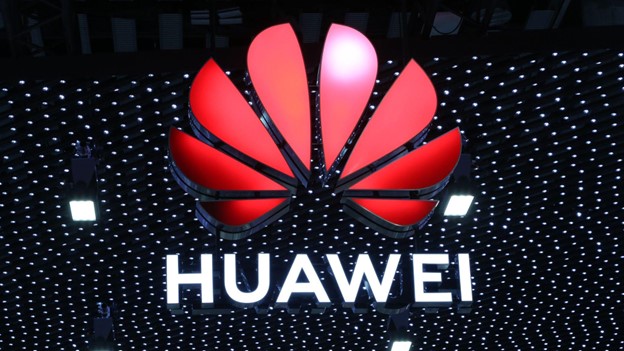
Huawei claims to be out of what rotating chairman Eric Xu described at the turn of 2023 as “crisis mode.” In his new year message, Xu noted the company would keep R&D investments high and cited growth areas, including its cloud division, and other products and services aiding the digital transformation of industries.
Xu said Huawei’s core business of selling telecom infrastructure grew in 2022 and the decline in the company’s once-dominant consumer device business has stabilized. The privately held Chinese company didn’t release annual profit figures or provide a complete breakdown of its business lines.
As part of a continued push to develop its own products, the company spent around $23.8 billion on R&D in 2022.
Chinese firms like Huawei have been stockpiling chips since 2019 in preparation for potential U.S. sanctions. Additionally, Chinese fabs were purchasing as much manufacturing equipment as possible in case the west tightened export restrictions on semiconductor manufacturing tools.
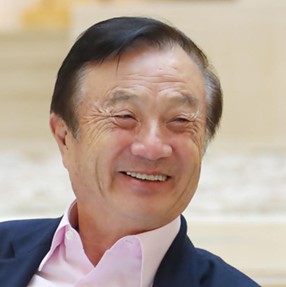
In 2019, because of the new restrictions, Ren Zhengfei forecasted a hit to revenue of about $30 billion that year and in 2020.
In 2020, the U.S. Commerce Department issued new rules prohibiting non-U.S. companies from selling any chips made using U.S. technology to Huawei without a special license. The rule covers even widely available, off-the-shelf chips made by overseas firms, placing potentially severe new limits on Huawei’s ability to source parts.
Earlier this month, the German government launched a review of the country’s 5G high-speed mobile telecommunications networks as part of a broader revamp of its relationship with China, suggesting Berlin is moving closer to banning Chinese suppliers from German networks. Unlike other European countries, Germany has stopped short of explicitly prohibiting the use of Huawei or other Chinese equipment by German operators.
Under legislation passed two years ago, the German government has broad authority to review the country’s telecommunications infrastructure for security flaws.
Despite the rhetoric and bold moves, Huawei can’t function without foreign-made semiconductors and components. Even a non-U.S. supply chain is not possible today, and probably never.
Most of the investment in new semiconductor manufacturing in China is happening on lagging-edge nodes, where volume is needed. While Taiwan’s TSMC is the only company manufacturing leading-edge chips for mobile devices and high-performance applications, China’s HSMC can produce the millions of chips required for their automotive industry and many components Huawei uses in their communications equipment and other consumer products.
Chinese companies are also investing heavily in emerging semiconductor materials like silicon carbide (SiC) and gallium nitride (GaN), which will likely play a more significant role in managing the power systems in many applications, including in electric vehicles. Here, too, China has the necessary technology and materials, and government subsidies may help it win business on price.
For the most advanced products, such as smartphones, tablets, and laptops, Huawei must purchase components from companies such as Qualcomm, Broadcom, Intel, AMD, Sony, and many others.
The real issue is that Huawei, a company in the People’s Republic of China, evolved from manufacturing simple phone switches in the 1980s to build the most advanced telecom and networking gear.
“China is giving a handful of its most successful chip companies easier access to subsidies and more control over state-backed research, as tightening U.S. controls on access to advanced technology force a major rethink in Beijing’s approach to supporting the sector,” reports Qianer Liu for the Financial Times.
According to the author, SMIC, Hua Hong Semiconductor, Huawei, Naura, and AMEC will have access to additional government funding without having to achieve performance goals that were previously required.
While it would be difficult, almost impossible, for SMIC or any other Chinese chip manufacturer to start producing leading-edge semiconductors soon, China can increase its chip output and become one of the most significant players in lagging-edge chips.
“It is projected that during the next decade, China will add about 40 percent of the new capacity and become the largest semiconductor manufacturer location in the world.” said a report by Boston Consulting Group in September 2020.
Now that component and semiconductor supplies are approaching normal, China’s real supply chain problem will be about profits and power.
Source: EPS News
“One significant phase of the expansion is for increased SiC manufacturing for use in automotive, e-mobility, grid infrastructure, aerospace and defence applications,” according to the company.
The 850 person Colorado Springs campus currently runs six inch wafers, and is to get eight inch capability as part of the upgrade. 400 more staff are also anticipated, said Microchip.
“Our Colorado Springs fab is part of our dual-fab strategy using both internal and external capacity to increase the resiliency of the supply chain for SiC,” Microchip silicon carbide v-p Clayton Pillion told Electronics Weekly. “The expansion includes equipment that can handle both 6in and 8in silicon carbide wafer fabrication, and we will transition to 8in when it’s prudent to do so.”
“This campus is an integral part of producing our SiC technology to assure our customers with supply certainty as they transition to SiC solutions,” said Microchip v-p of analogue Rich Simoncic.
“The Chips and Science Act is already making a positive impact on our business through the Investment Tax Credit and we are seeking capacity expansion grants for several of our semiconductor factories, including our Colorado Springs factory,” explained Microchip president and CEO Ganesh Moorthy.
Source: Electronicsweekly.com
WASHINGTON—March 17, 2023—The Semiconductor Industry Association (SIA) today released the following statement from SIA President and CEO John Neuffer commending the introduction in Congress of bipartisan legislation to restore full tax deductibility of R&D investments. The legislation, the American Innovation and Jobs Act, was introduced in the Senate by Sens. Maggie Hassan (D-N.H.) and Todd Young (R-Ind.) along with 10 other cosponsors.
“We applaud the bipartisan group of senators—led by Sens. Hassan and Young—for introducing this legislation, and we urge its swift approval.
“R&D investments are the lifeblood of innovation in the semiconductor industry, giving rise to technologies that reinforce our economy, national security, and high-tech workforce. The U.S. chip industry plows an average of one-fifth of its revenues back into R&D annually, one of the largest shares of any sector. Those investments propel rapid innovation in semiconductor technologies and seismic advancements in computing, 5G, health care, energy, AI, and more.
“Restoring the decades-long policy of allowing the immediate, full deduction of R&D investments would help make the U.S. a more competitive place for R&D and innovation, boost economic growth and job creation, and attract and retain talented workers. We look forward to working with leaders in Congress to get this bipartisan, commonsense initiative across the finish line in short order.”
Since 1954, R&D expenditures were treated as an immediate deduction. For decades, the immediate deduction for U.S. R&D expenditures provided a longstanding incentive for chip companies to make those investments, helping maintain U.S. leadership in this vital technology. As of 2022, however, U.S. R&D expenses must now be amortized over five years, making it less attractive to perform R&D in America and harming U.S. competitiveness in the semiconductor industry.
Even prior to the amortization requirement, the U.S. R&D incentive trailed those offered by global competitors, and without action to restore immediate deductibility of R&D expenses, the U.S. ranking for incentivizing research is projected to fall to the bottom quarter of OECD countries.
In addition, R&D costs are rising exponentially, with the most advanced semiconductor node costing more than $500 million to design, double the cost to design the previous leading-edge chips. Full and immediate expensing is necessary to spur R&D investments in the U.S. semiconductor industry and allow companies to further innovate and expand the domestic R&D workforce.
Source: SIA
On March 10, Secretary Gina Raimondo joined Indian Minister of Commerce and Industry Piyush Goyal and announced a U.S.-India Memorandum of Understanding (MOU) that will establish a Semiconductor Supply Chain and Innovation Partnership. The MOU was announced at the relaunch of the U.S.-India Commercial Dialogue and will focus on clean energy as well as semiconductor supply chains. The Secretary was in New Delhi from March 5-10 where she met with Prime Minister of India Narendra Modi, attended the U.S.-India CEO Forum, and held several important bilateral meetings with Indian officials. “As both of our great nations seek to create stronger and more secure supply chains, particularly in the field of semiconductors, this MOU will establish a collaborative mechanism between our two countries on semiconductor supply chain resiliency and diversification and will aim to create economic opportunity in the U.S. and India,” said Secretary Raimondo in a statement. “This is a significant step in the coordination of both our countries’ semiconductor incentive programs and will strengthen mutual priorities, including promoting commercial opportunities, R&D, and talent and skill development.”
To begin her trip, India’s Defense Minister Rajnath Singh hosted Secretary Raimondo at his home in honor of the annual Hindu festival Holi. Several other Indian officials also joined the festivities.
“A day filled with color, joy, and light,” said Raimondo. “May we carry it with us as we continue to strengthen the bonds between India and the United States.”
Later in the week, Secretary Raimondo met with Prime Minister of India Narendra Modi where they discussed the U.S.-India CEO Forum and U.S.-India Commercial Dialogue as well as the new Strategic Trade Dialogue and U.S.-India MOU on Semiconductor Supply Chain and Innovation Partnership.
At the U.S.-India CEO Forum, Raimondo stressed the importance that the Biden Administration places on U.S.-India relations and emphasized the significant opportunity to deepen commercial ties between the two countries.
The U.S.-India CEO Forum was soft-launched by Secretary Raimondo and Indian Commerce & Industry Minister Goyal in November 2022 during a meeting between the two leaders. During the meeting, they identified key priorities as increasing supply chain resilience; enhancing energy security & reducing overall greenhouse gas emissions; advancing inclusive digital trade; and facilitating post-pandemic economic recovery, especially for small businesses.
Throughout her visit, Secretary Raimondo also held several bilateral meetings with ministers from India including Minister of Electronics and Information Technology Ashwini Vaishnaw, Minster of External Affairs Dr. S. Jaishankar, Minister of Finance Nirmala Sitharaman, Minister of Education and Skill Development and Entrepreneurship Dharmendra Pradhan, and Indian National Security Advisor Ajit Doval. During these meetings, the Secretary discussed key areas of shared interest, including the Indo-Pacific Economic Framework for Prosperity, semiconductors, and supply chain resilience.
The trip comes on the heels of last month’s successful special negotiating round for the Indo-Pacific Economic Framework in New Delhi, which was attended by senior U.S. Department of Commerce officials.
British Chancellor of the Exchequer, Jeremy Hunt, announced the government’s plan to solidify Britain’s position in the global tech landscape. Among his 4 E’s – Enterprise, Education, Employment and Everywhere – to boost growth, the chancellor has announced the launch of an AI sandbox – committing £900 million to implementing recommendations for an exascale computer. Investment of £2.5 billion in a Research and Innovation Program towards the development of a quantum-enabled economy by 2033 was also announced.
However, this comes following the second and third biggest bank failures in US history (Silicon Valley Bank and Signature Bank), which have caused anxiety among investors worldwide, causing a FTSE 100 wipe off of over £50 billion on Monday. On Tuesday, the FTSE 100 remained down as major US banks experienced around $90 billion in stock market value loss on Wall Street.
The collapse of Silicon Valley Bank (SVB) sent shockwaves across the global tech sector, with the British government grappling over the weekend to limit the repercussions on the UK’s SME arena. Undoubtedly, the effects of the collapse will have a significant fallout on some of the UK’s most promising companies, mitigated to some extent by HSBC’s intervention. However, Claire Trachet, tech industry expert and CEO and founder of leading business advisory, Trachet, explains the need for stronger support for UK tech startups outside the lines of institutional funding.
Whilst Trachet explains that it’s welcome news to see HSBC step in, she also warns that this marks a turning point for the UK tech ecosystem, particularly for companies without the luxury to fall into the safety net of institutional investors. With some VC firms additionally feeling the impacts of cashflow following the demise of SVB, private equity houses now bear a significant responsibility to buffer the fallout.
Tech industry and M&A expert, Claire Trachet, comments on the Spring statement and its implications on startups, tech and M&A:
“Although the UK economy has shown signs of rebounding, it is imperative that the government continues to prioritize the tech sector. While the Science and Technology Framework is a positive step, sustained investment and attention are needed to maintain Britain’s status as a leading country for tech innovation and growth. With technology solving significant problems and investor interest growing, now is the time to be competitive and create incentives that will incite investment into the UK tech sector – something the chancellor’s spring statement has successfully addressed.
“Following the recent collapse of the UK arm of the Silicon Valley Bank, government intervention was reactive, effective, and demonstrates the speed and togetherness which will create market confidence in the UK.
“The government’s commitment to strengthening the country’s position in artificial intelligence through the AI sandbox and the clarity on IP rules for generative AI companies will enable us to bring cutting-edge products to market faster. Additionally, the £900 million funding for an exascale computer and the £2.5 billion Research and Innovation Program for quantum computing will position the UK as a world leader in this field. Introducing funds such as “The Manchester Prize” also offers an incredible opportunity for groundbreaking AI research to be recognized and incentivized in the country. “
Source:EMSNOW
Interior sensing technology from Smart Eye and TI enables automakers to deliver safer and more engaging in-cabin experiences for the driver and vehicle occupants.
GOTHENBURG, SWEDEN and BOSTON, MA / ACCESSWIRE / March 15, 2023 / Smart Eye, (STO:SEYE)(OTC PINK:SMTEF)(FRA:SE9) the global leader in Human Insight AI, today announced a collaboration with Texas Instruments (TI) (Nasdaq: TXN). The companies' technologies work together to provide automakers with an innovative interior sensing solution that improves driver safety, and enables in-cabin experiences that enhance comfort, wellness, and entertainment. Running on TI's new AM62A7-Q1 automotive qualified vision processor, Smart Eye's award-winning Automotive Interior Sensing AI provides critical safety features to upcoming car models going into production in 2023 and 2024. Fully compliant with new General Safety Regulations (GSR) and European New Car Assessment Programme (Euro NCAP) requirements, the solution enables higher performance and more cost-effective implementations in vehicles, to realize a collision-free future.
As GSR and Euro NCAP requirements make advanced sensing features mandatory in new vehicles in Europe, automakers now require advanced processing chips that deliver the right performance without sacrificing critical system resources, such as power, size, weight, and cost. Smart Eye's Automotive Interior Sensing AI combines its industry-leading Driver Monitoring System (DMS) software with Cabin Monitoring System (CMS) software to bring deep, human-centric insight into what is happening with all occupants inside of a vehicle.
Smart Eye's software solution supports the new AM62A7-Q1 vision processor and family of devices as well as the TDA4VM-Q1 automotive processor and family of devices for different use cases. Automakers are able to easily scale their designs and optimize performance from one car model to the next by reusing TI's device IP and single software development kit across their vehicle line up.
The AM62A7-Q1 device offers integrated ISP that can handle 5 MP at 30 frames per second, support for up to two RGB-IR cameras and a highly efficient 2 TOPS deep learning accelerator. With a high level of system integration, the TI systems on chip (SoCs) enable scalability and lower costs for advanced automotive platforms supporting multiple sensor modalities in centralized ECUs or stand-alone sensors, such as infrared cameras. Using these cameras, Smart Eye's AI-based software detects various levels of driver distraction and drowsiness as well as the attention, emotions, and activities of all occupants in the vehicle, including the objects they use. This data lets automakers adapt safety measures and advanced driver assistance systems (ADAS) in real-time - improving road safety and enhancing the mobility experience for the driver and all other occupants in a vehicle.
"Smart Eye's Interior Sensing AI is designed to run on a large variety of automotive SoCs," said Martin Krantz, Founder and CEO of Smart Eye. "We are especially excited to collaborate with TI to combine their state-of-the-art chipsets with our deep learning expertise and deliver advanced safety and mobility features that run with the highest power efficiency and performance accuracy."
"The collaboration of TI with Smart Eye allows automakers to design best-in-class driver and occupant monitoring systems, increasing the overall safety of the vehicle," said Sameer Wasson, vice president and general manager of Processors at TI. "By leveraging our new family of vision processors-coupled with Smart Eye's advanced AI software-automakers are able to create a powerful interior sensing solution that supports multiple modalities and runs at the highest levels of reliability and efficiency."
The global electric vehicle component market is valued at USD 148.32 Billion in 2022. The market is further expected to gain size of USD 1001.95 Billion by the year 2032. The market is expected to grow with a CAGR of 21.05% in the forecast period.
Batteries used in electric vehicles come in three types, out of which lithium-ion batteries are quite expensive yet have good performance, lead-acid batteries are the cheapest in price, and nickel metal hydride batteries are moderately priced and have a higher output than lead-acid batteries. Motors used in electric vehicles are DC motors, AC induction motors switched reluctance motors and permanent magnet synchronous motors.
Electric vehicles originated in the late 18th century. Since then there have been numerous developments in the electric vehicle including the evolution of batteries, no noise pollution at all, and adaption of the technology in cars after bicycles and motorcycles. The use of lightweight material in the manufacturing of e-vehicles gives a new dimension to e-motor racing.
Which region holds the major share of this market?
Asia Pacific leads in the sales of e-vehicles because of countries like India and China owing to benefits such as government subsidies and large-scale domestic production hence increasing the electric vehicle component market. North America, Latin America, and Europe are also estimated to drive the global electric vehicle component market owing to a significant focus on minimizing vehicular emissions leading to the growing use of e-vehicles over the coming ten years. The governments in this region are actively taking steps to improve infrastructure and components. Countries like China and India are set to be dominant market space for EVM components owing to the rise in sales of electric cars.
Recent development
The market is characterized by key players which are offering a wide range of EV components that are particularly dedicatedly to the production of passenger cars and electric buses.
Companies focused on innovation and technologically driven change. These companies are opting for strategic collaboration and mergers in order to increase business reach. These players are focused on the research and development into electric vehicle components that make these firms stay competitive in the market.In 2022 March the Panasonic Corporation announced the setting up of a plant to boost the manufacturing of lithium batteries. Tesla increased their benefits due to Panasonic corporation.In 2021 February The introduction of Hyundai in the development of electric vehicle parts enhanced cost effectivity. The collaboration of Kia and Hyundai have been working on EV components in India and are likely to get a major market share in the forecast period.
Source:semiconductor digest

Tokyo-based Mitsubishi Electric Corp is to double the investment plan (that it announced in 2021) from 130bn yen to about 260bn yen in the five-year period to March 2026, mainly for constructing a new wafer plant to increase production of silicon carbide (SiC) power semiconductors.
Under the plan, Mitsubishi Electric expects to respond to the rapidly increasing demand for SiC power semiconductors for electric vehicles (EVs) as well as expanding markets for new applications that require, for example, low energy loss, high-temperature operation or high-speed switching.
About 100bn yen of the 130bn yen increased investment will be used to construct a new 8-inch SiC wafer plant and to enhance related production facilities. The new factory, which will incorporate an owned facility in the Shisui area of Kumamoto Prefecture, will produce large-diameter 8-inch SiC wafers. The firm will also enhance its production facilities for 6-inch SiC wafers to meet the growing demand in this sector.
In addition, Mitsubishi Electric will newly invest about 10bn yen in a new factory that will consolidate existing operations (currently dispersed throughout the Fukuoka area) for the assembly and inspection of power semiconductors. The integration of design, development and production technology verification is expected to greatly enhance the company’s development capabilities and facilitate timely mass production in response to market demand.
The remaining 20bn yen of the new investment will be targeted at equipment enhancements, environmental arrangements and related operations.

TSMC and GlobalFoundries raised their market shares in Q4 while the top five saw big reductions in orders.
Although TSMC had a QoQ drop of 1.0% in revenue to $20 billion, its revenue market share climbed to almost 60% mainly because tier-2 and -3 foundries took a heavier hit from customers’ inventory corrections.
TSMC’s decline in revenues from the 7/6nm nodes was mostly offset by the rise in the revenues from the 5/4nm nodes. The share of the ≤7nm nodes in TSMC’s overall revenue remained stable at 54%.
Samsung had a Q4 QoQ drop of 3.5% in foundry revenue to reach $5,391 million.
Samsung has lost a significant amount of demand for its ≤7nm nodes as Qualcomm and NVIDIA made the decision to reallocate orders for chips used in flagship hardware products.
The utilization rates of Samsung’s advanced processes are projected to remain at a low level of around 60% through 2023. Samsung lacks the momentum to achieve a positive YoY revenue growth for this year.
UMC saw a drop in both capacity utilisation rate and wafer shipments in 4Q22, so its revenue fell by 12.7% QoQ to $2,2 billion.
UMC saw a QoQ revenue decline for both 12- and 8-inch wafer foundry services, and its 0.35/0.25μm nodes had the worse revenue performance with a QoQ decline coming to 47%.
GlobalFoundries’ revenue actually rose by 1.3% QoQ to $2,101 million thanks to the optimisation in its ASP and product mixes, as well as an increase in revenue from its non-wafer business.
GlobalFoundries was the only one among the top 10 to record a positive QoQ growth, and its revenue market share also climbed to 6.2%.
SMIC saw a drop in both wafer shipments and wafer ASP. As a result, its revenue slid by 15.0% QoQ to $1.6 billion.
The sharpest falls in SMIC’s revenue for consumer ICs. To get its customers to raise wafer input, SMIC has been offering price concessions. However, this aggressive pricing strategy has not been particularly effective as customers are concerned about the risks associated with the US-China trade dispute.
Therefore, SMIC’s capacity utilisation rate and revenue are expected to shrink further in 1Q23.
VIS and Nexchip suffered from a downturn in the display panel industry and Nexchip dropped out of the top ten.
DB Hitek took Nexchip’s tenth place. Tower, which was in ninth place in the 3Q22 ranking, rose to 8th place with a 5.6% revenue decline.
VIS slipped to ninth place in the ranking.
HuaHong’s Q4 revenue for fell by 26.5% QoQ to €882 million. PSMC’s capacity utilization rate slid significantly for both 8- and 12-inch wafer foundry and suffered a 27.3% revenue drop to $408 million.
Onsemi successfully acquired GlobalFoundries’ (GF) 300-mm East Fishkill (EFK), NY, site and fabrication facility, helping onsemi manufacture products with high gross margins in high-growth and sustainable applications like electric vehicles (EVs) and energy infrastructure, CEO Hassane El-Khoury said in an exclusive interview with EE Times.
With the acquisition, onsemi added more than 1,000 engineers and technologists. U.S. Senator Chuck Schumer (D-NY) and J.D. Grom, senior advisor to the U.S. Secretary of Commerce on CHIPS Act implementation, were on hand for the event celebrating the acquisition, emphasizing the significance of domestic semiconductor manufacturing.
“EFK offers an improved manufacturing cost structure due to the economics of scale of a 300-mm wafer compared to smaller wafer sizes,” El-Khoury told EE Times. “While the highly automated wafer fab equipped with advanced toolsets enables us to produce superior quality chips that meet automotive standards, it is the skilled and experienced engineers that will improve our ability to ramp products to volume and reduce our time to market. With the EFK site, onsemi is adding complex CMOS capabilities [including 65-nm technology nodes] that are required for image sensor production to its manufacturing footprint.”
Automotive OEMs, renewable energy companies and industrial manufacturers are some of the customers that require these advanced products, he added.Ribbon-cutting ceremony for onsemi’s EFK fab acquisition. (Source: onsemi)Workforce and marketsThe purchase plan was in the works for a long while: In the last three years, onsemi has focused on securing a long-term future for the EFK fab and its employees, making substantial investments in its 300-mm capabilities to accelerate growth in the company’s power, analog and sensing products, and enable a more cost-effective manufacturing structure.The EFK fab is the largest onsemi manufacturing facility in the U.S., according to the company. It adds advanced CMOS capabilities to the company’s manufacturing profile, including 65-nm technology nodes with specialized processing capabilities required for image-sensor production.
The transaction entails an exclusive agreement to provide differentiated semiconductor solutions to GF, as well as investments in research and development, as the parties collaborate to build future growth.
“Short term, the ramp at our EFK site helps onsemi to ensure continuous supply to customers of our intelligent power technologies, especially in the automotive sector,” El-Khoury said. “As a highly automated fab with advanced toolsets, EFK is also able to meet the most stringent quality requirements as, for example, demanded by the automotive industry.
“Long term, moving production from less efficient fabs to EFK and making significant investments in the site’s 300-mm capabilities gives onsemi a key competitive advantage by improving its manufacturing cost structure. It also enables high growth and differentiation in onsemi’s power, analog and sensing technologies, which are instrumental in accelerating onsemi’s growth in key applications such as 5G, EVs, ADAS, solar, energy infrastructure and factory automation.”
The ability to run such a diverse portfolio of technologies using shared tools with different requirements and specifications is one of the challenges, according to El-Khoury. The specifications and requirements for discrete production processes and tools are distinct from those for image sensor products and must be carefully managed.
“Another challenge is that this being the only 300-mm fab, there is no exact copy for bringing in new technologies. Instead, processes need to be developed and scaled to 300mm from smaller wafer size fabs,” he added.
Recruiting a highly skilled workforce in this geographic location is difficult compared with other locations where a robust ecosystem of technologists and engineers already exists. This is one of the reasons onsemi is supporting regional and local institutions, such as high schools and community colleges, El Khoury said.
“Upcoming community programs will include cultivating educational ecosystems, supporting future innovators from high school to Ph.D., and fostering local skilled labor development through community college partnerships,” he said. “Onsemi will also work with under-served communities and high schools to help provide a focus on STEM. As part of developing a strong talent pipeline, onsemi recently pledged to donate $500 thousand to Rochester Institute of Technology over the next 10 years to support projects and education targeting engineers in the semiconductor industry. Outside of institutions, we pride ourselves on focusing on cultivating a strong sense of community and having a deep history of giving back to local communities we work and live in.”Onsemi CEO Hassane El-Khoury. (Source: onsemi)Sustainability a strong focusFluctuating energy prices and a growing awareness of environmental impact are advancing a new era of environmentally friendly electronics production. Given that the electronics industry is responsible for 4% of global greenhouse gas emissions, there is an urgent need for innovative research and development aimed at addressing this issue. Recently, a number of promising new technologies have emerged, which bodes well for the long-term prospects of the industry.
Semiconductor manufacturing can both be a resource and carbon emissions intensive process, according to El-Khoury. This is due to direct emissions (Scope 1) from process gases with high global warming potential used during wafer etching or chamber cleaning, and indirect emissions (Scope 2) that occur from use of purchased electricity, steam, heating, and cooling of equipment.
Corporations, particularly electronic device manufacturers (semiconductors), have initiated environmental, social and governance initiatives in response to severe climate change. The increasing temperature of the Earth’s surface as a result of the uncontrolled burning of fossil fuels around the world has disrupted its entire ecosystem. Damage to natural flora and fauna, melting ice caps, erratic climate, and rising temperatures are examples of the impact. The sustainability of the semiconductor and electronics industries is being enhanced by both government regulations and green investment initiatives.
“As an industry, we know there is work to be done and believe that, through continued collaboration and innovation, we can drive meaningful greenhouse gas and resource reductions across the industry,” El-Khoury said. “In November, onsemi, along with more than 60 other founding members, formed the Semiconductor Climate Consortium, demonstrating commitment as the first global collaborative of semiconductor ecosystem companies focused on reducing greenhouse gas emissions across the value chain.”
Industries across different sectors are responsible for the increasing carbon emissions in the environment. This magnitude of carbon emissions, also known as the carbon footprint, is increasingly large for the semiconductor manufacturing industry. With the rising demand for faster and more efficient hardware platforms, a large amount of energy generated from fossil fuels contributes to growing pollution.
As a result of the global threat posed by climate change and its adverse effects, semiconductor device manufacturers like onsemi are setting an example by not only reducing greenhouse gas emissions in their own supply chain, but also developing products that will assist their customers in doing the same.
sources:eetimes
WASHINGTON—March 3, 2023—The Semiconductor Industry Association (SIA) today announced global semiconductor industry sales totaled $41.3 billion during the month of January 2023, a decrease of 5.2% compared to the December 2022 total of $43.6 billion and 18.5% less than the January 2022 total of $50.7 billion. Monthly sales are compiled by the World Semiconductor Trade Statistics (WSTS) organization and represent a three-month moving average. SIA represents 99% of the U.S. semiconductor industry by revenue and nearly two-thirds of non-U.S. chip firms.
“Despite record-high sales in 2022, the global semiconductor market cooled considerably during the second half of the year, and that trend continued during the first month of 2023,” said John Neuffer, SIA president and CEO. “Despite the current short-term cyclical downturn, the long-term outlook for the semiconductor market remains strong due to the ever-increasing role of chips in powering the critical technologies of today and tomorrow.”

Regionally, month-to-month sales increased slightly in January in Europe (0.6%), but decreased in Japan (-2.1%), Asia Pacific/All Other (-2.7%), the Americas (-7.9%), and China (-8.0%). Year-to-year sales ticked up in Europe (0.9%) and Japan (0.7%), but fell in the Americas (-12.4%), Asia Pacific/All Other (-19.5%), and China (-31.6%).
For comprehensive monthly semiconductor sales data and detailed WSTS forecasts, consider purchasing the WSTS Subscription Package. For detailed historical information about the global semiconductor industry and market, consider ordering the SIA Databook.
sources:SIA
TECHCET— the electronic materials advisory firm providing business and technology information on semiconductor supply chains — is forecasting the Semiconductor Wet Chemicals market to slow to -0.9% in growth in 2023, as noted in the most recent update to TECHCET’s Wet Chemicals Critical Materials Report? . This slowdown is following downward trends for the overall global economy as risks of recession and rising inflation continue. Through 2023, the semiconductor materials market is expected to be flat, though positive growth could be seen if average selling prices from last year’s demand hold over to this year. By 2H2023, TECHCET is anticipating growth to return, leaving a forecasted 6.4% 5-Year CAGR from 2022-2027.

TECHCET is estimating wafers starts to also decline by about 5% in 2023. Between 2022 and 2023, NAND flash makers are rolling out approximately 200+ layer chips offerings. Into 2026 and 2027, 4XXL and 5 XXL 3DNAND are also expected to surge.
DRAM is currently undergoing a transition to EUV and full implementation of High-k/Metal Gate. Architectural changes and new patterning technology has also driven the need for new unit processes and new materials. With each such change, there is a growing need for more Chemicals and Wet Clean processes.
Several new material expansions have been announced between the US and Korea that should affect the Wet Chemicals market in the coming future. For example, LCY Group based in Taiwan, who is a key supplier to TMSC, has publicly announced an IPA repackaging and purification in Phoenix. Additionally, Chang Chun Group’s $400M investment towards a H2O2, TMAH, and plating solution facility in Arizona is expected to conclude their phase 1 soon.
sources:semiconductor digest
Currently there are bloated inventories for components like memory, small case-size ceramic capacitors and automotive MCUs, but FPGAs, analogue ICs, power MOSFETs, MCUs and discretes remain constrained and costly.
In Q3, lead times for all electronic components will reduce compared to Q3 2022 with nearly 60% of component lead times decreasing versus 1% in Q3 22 with none expected to increase compared to 73% in Q3 22.
Despite inventory reductions that will likely be complete by the end of H1, IC orders, wafer starts, and capacity utilisation will begin to rise and memory pricing will reach its bottom in H2. DRAM prices will start to recover in Q3 and NAND pricing will follow in Q4 or early in 2024.

“GaN technology is paving the way for more energy-efficient and CO 2-saving solutions that support decarbonization. Adoption in applications like mobile charging, data center power supplies, residential solar inverters, and onboard chargers for electric vehicles is at the tipping point, leading to a dynamic market growth,” said Jochen Hanebeck (pictured) CEO of Infineon. “The planned acquisition of GaN Systems will significantly accelerate our GaN roadmap, based on unmatched R&D resources, application understanding and customer project pipeline. Following our strategy, the combination will further strengthen Infineon’s leadership in Power Systems through mastery of all relevant power technologies, be it on silicon, silicon carbide or gallium nitride.”
As a wide bandgap material, GaN offers customer value by higher power density, higher efficiency, and size reductions, especially at higher switching frequencies.
These properties enable energy savings and smaller form factors, making GaN suited for a wide range of applications.
GaN is becoming a key material for power semiconductors, alongside silicon and silicon-carbide, and coupled with new topologies, such as Hybrid Flyback and multi-level implementations.
In February 2022, Infineon announced doubling down on wide bandgap by investing more than €2 billion in a new frontend fab in Kulim, Malaysia, strengthening its market position.
The first wafers will leave the fab in the second half of 2024, adding to Infineon’s existing wide bandgap manufacturing capacities in Villach, Austria.
Mitigating the effects of future shortages is on everyone’s mind. As the shortage downturn continues, countries and companies are planning on how to conquer the next. Lack of diversification and traditional methods of chip capacity is no longer safe. The vulnerabilities of manufacturing within a single geopolitical area and the lack of collaboration between chipmakers and other equipment manufacturers are dangerously significant.
To keep history from repeating itself, federal organizations are doing what they can to ensure investments for a resilient chip future. Automakers are becoming more proactive in their supply chains by partnering with chipmakers to secure future stock capacity no matter the demand. These steps will make all the difference in the future.
General Motors Signs with Global Foundries as Automakers Suffer from Shortage Impacts
The chip shortage has been rough on automakers for years now. Despite the downturn for advanced chips in white goods, automotive and industrial original equipment manufacturers (OEMs) still face allocation issues. It will take some time to achieve a supply-demand balance, especially with automotive demand still at record highs. In the meantime, automakers and original chip manufacturers (OCMs) are doing what they can to mitigate future shortages.
General Motors recently entered a long-term agreement with GlobalFoundries to establish exclusive production capacity of U.S.-produced chips. This deal, the first of its kind, demonstrates dedicated production capacity exclusively for key auto suppliers for General Motors at the GlobalFoundries fab in upstate New York.
Doug Parks, executive VP of global product development at General Motors, said, “the supply agreement with GlobalFoundries will help establish a strong, resilient supply of critical technology in the U.S. that will help GM meet this demand while delivering new technology and features to our customers.” The agreement couldn’t come at a better time as Mr. Parks believes that General Motors’ usage of semiconductors will double over the coming years as technological capabilities in cars increase.
The deal is expected to provide the framework for future agreements between GlobalFoundries and other automakers. Historically, automotive OEMs and OCMs have yet to work together. The last few years of the global chip shortage have mercilessly exposed the dangers of that traditional method.
This is especially true within the development of all-electric cars and trucks that require more chips than traditional vehicles. While the deal is the first of its kind, that doesn’t mean that other automakers are making similar agreements with OCMs. Volkswagen recently signed a contract with Onsemi to provide modules and semiconductors. Onsemi will offer a complete electric vehicle (EV) traction inverter solution for VW, with semiconductors being integral in support of front and rear traction inverters. ZF invested in Wolfspeed’s construction of its first semiconductor facility in Europe. The research and development unit of the new facility will be majority owned by ZF, whose first research applications will be chips in power converters for electric ships and wind turbines.
As the automotive shortage drags on, these partnerships will continue to increase over the next few months. These effects are still being felt and will continue through 2023, with Ford’s recent billion-dollar loss from 100,000 vehicles undelivered, highlighting the impact.
How Europe is Combating the Chip Shortage
The chip shortage hurt, and now countries are doing what they can to prevent a similar situation in the future. The U.S. has spent the last few years enticing chipmakers to its shores through the CHIPS and Science Act. The law allocates $52 billion in subsidy programs and incentives for semiconductor fabrication plant construction and research. Outside the federal level, states are passing their programs to make their locations more appealing to OCMs eager to take advantage of federal programs.
India and Vietnam are competing to become the new Asian chip market supplier. Foxconn, Google, Samsung, and other big-name chipmakers have been viewing different locations and entering joint partnerships for new facilities in either country. Both countries have various benefits, from subsidies to talented labor supply, that make them attractive options for OCMs.
The European Semiconductor Industry Association (ESIA) forecasts volatility within the semiconductor supply chain. Despite a possible .3% decline in market growth, challenges within the automotive chip supply chain.
The most significant effort to fortify semiconductor supply resilience is the European Union’s Chips Act. The act aims to bolster production and set up emergency measures to prevent shortages through an investment of €43 billion, both public and private. It should boost the EU’s share of global chip production from 9% to 20% by 2030. This will be done in tandem with a chip diplomacy initiative as the EU recognizes the importance of its foreign partnerships.
Should the Chips Act pass, several domestic and foreign chipmakers have been considering expanding production within the EU. STMicroelectronics, a Swiss firm, received €600 million from the European Investment Bank to support research, development, and pre-industrialization within Europe. STMicroelectronics has several facilities that operate within Italy and France, with a new fab in eastern Sicily planned to begin production in 2026. German-based chipmaker Infineon is planning its €5 billion investment for a new semiconductor plant in Dresden, hinging on the passage of the EU’s Chips Act.
If the Chips Act passes, Infineon’s Dresden fab should begin production in 2026. It would be the most significant single investment in the country’s history and add demand from end markets, including automotive, industrial, and renewables.
Intel is also considering a semiconductor mega-site in Germany should the Chips act pass. Throughout the last few years, Germany has risen in popularity as an attractive location for semiconductor production. US chipmaker Wolfspeed recently announced its plans for Germany's largest silicon carbide (SiC) manufacturing facility. As the first chip factory in Europe for Wolfspeed, it will rely on the European Commission for approval.
Should the Chips Act pass, Europe can quickly fortify its domestic capabilities and future resilience to chip shortages.
Sources:sourcengine
Feb. 28, 2023. Micross Components, Inc. ("Micross" or the "Company"), a leading provider of high-reliability microelectronic product and service solutions for aerospace, defense, space, medical and industrial applications and a portfolio company of Behrman Capital, today announced it has closed the acquisition of the High-Reliability DC-DC converter business (the "Business") of Infineon Technologies AG (FSE: IFX / OTCQX: IFNNY), a global semiconductor leader in power systems and IoT.
Headquartered in San Jose, California with a facility in Copenhagen, Denmark, the Business provides high-reliability DC-DC converters, including hybrid and custom board-based power products for space, strategic defense, aerospace, and other high-reliability customers. The Business designs and manufactures proprietary power solutions which operate in the harshest environments.
Micross' acquisition – the eighth under Behrman Capital's ownership and fourth since consummating a continuation fund transaction in February of 2022 – continues to build on the strategic priorities for the Company. The addition of Infineon's High-Reliability DC-DC converter business expands Micross' power management solution offerings which are supported by a high degree of intellectual property. The acquisition also expands Micross' geographic footprint in the US and Europe and the Company's presence in the high-growth space end market, better positioning the Company for future growth opportunities.
Vince Buffa, Chairman and CEO of Micross, said, "We are delighted to partner with this experienced team which further expands the Micross team's design capabilities. The acquisition brings significant proprietary IP around power management, combined with state-of-the-art manufacturing capabilities and a product portfolio that is a market leader for the advancement of innovative solutions. We will be better positioned to produce an even wider range of high-quality products for our customers. Together, we plan to pursue a number of compelling opportunities to further realize our exciting growth prospects, all while upholding excellent quality and service to our customers."
Simon Lonergan, Managing Partner of Behrman Capital, said, "This acquisition represents an extremely strong strategic fit for Micross, as the Company continues to build out its high-reliability product portfolio to better serve its customer base. Adding Infineon's DC-DC converter Business to Micross' platform further differentiates and adds significant IP to the Company's leading position as a one-stop source of supply for high-reliability electronic products and services. We look forward to continuing to work with management to identify additional opportunities to drive growth at Micross."
Sources:marketscreener
The SDK is a full quantum computer in simulation that can interface with Intel’s quantum hardware, including the Horse Ridge II control chip and Intel’s quantum spin qubit chip when it becomes available this year.
The kit has been created to allow developers to programme quantum algorithms in simulation, and it features an intuitive programming interface written in C++ using an industry-standard low-level virtual machine (LLVM) compiler toolchain. Consequently, Intel’s SDK offers a seamless interface with C/C++ and Python applications, making it both versatile and customisable.
“The Intel Quantum SDK helps programmers get ready for future large-scale commercial quantum computers. It will not only help developers learn how to create quantum algorithms and applications in simulation, but it will also advance the industry by creating a community of developers that will accelerate the development of applications, so they are ready when Intel’s quantum hardware becomes available,” said Anne Matsuura, director of Quantum Applications & Architecture, Intel Labs.
The Intel Quantum SDK 1.0: Version 1.0 of the SDK includes an intuitive programming interface based on C++, providing a programming language that’s familiar to classical computing developers, enabling collaboration between them and quantum developers.
The kit also features a quantum runtime environment that’s been optimised for executing hybrid quantum-classical algorithms. Developers have the choice of two target backends for simulating qubits to either represent a higher number of generic qubits or Intel hardware.
The first backend is a high-performance open-source generic qubit simulator, Intel Quantum Simulator (IQS). IQS has a backend capable of 32 qubits on a single node and more than 40 qubits on multiple nodes. The second is a target backend that simulates Intel quantum dot qubit hardware and enables compact model simulation of Intel silicon spin qubits. Intel’s qubits leverage the company’s expertise in silicon transistor manufacturing to build a large-scale quantum computer.
With the SDK, users will be able to develop small workloads to determine what functionalities are needed from the quantum computer’s system architecture to run algorithms efficiently and accurately on qubits. In addition, Intel is using the SDK internally to co-design quantum hardware and software in tandem, accelerating system development.
The SDK is a customisable and expandable platform providing greater flexibility when developing quantum applications. It also provides for users to compare compiler files, a standard feature in classical computing development, to discern how well an algorithm is optimized in the compiler. It allows users to see the source code and obtain lower levels of abstraction, gaining insight into how a system stores data.
Intel has also extended the industry-standard LLVM with quantum extensions and developed a quantum runtime environment that is modified for quantum computing, and the IQS provides a state-vector simulation of a universal quantum computer.
The compiler extensions allow developers to integrate results from quantum algorithms into their C++ project, opening the door to the feedback loops needed for hybrid quantum-classical algorithms like the quantum approximate optimization algorithm (QAOA) and quantum variational eigen-solver (VQE).
Finally, Intel DevCloud users will be able to build executables capable of simulating applications and algorithms with up to 32 qubits on a single computational node and more than 40 on multiple nodes.
Intel has said that it is committed to advancing the quantum computing field and is working to build a community of developers. As a starting point for this effort, Intel has provided grants to five universities to develop quantum course curricula to share with additional universities and proliferate its use across academia. These include: the University of Pennsylvania, Technische Hochschule Deggendorf, Keio University, The Ohio State University and Pennsylvania State University.
Sources:new electronics
The quantum market will be worth $2.1 billion in 2030, says Yole Developpement, with the quantum computing segment reaching more than $4 billion by 2035.
Overall the quantum technology market place will grow with a 13% CAGR from a total market of $761 million in 2022 to $1,099 million in 2025.
Breaking this down to sub-markets: quantum computing was worth $65 million in 2022, which Yole differentiates from Quantum computing as a service (QaaS), which it reckons was worth $46 million.
So quantum computing overall was worth $111 million in 2022. Meanwhile quantum sensing and timing market was already worth $545 million in 2022. The quantum cryptography market was smaller at $106 million.
This is a small market with much of the effort in R&D, particularly on the quantum computing side, where tremendous growth is expected
Step by step, an industrial quantum supply chain is developing as many companies are positioning themselves.
Many technological options are being pursued (superconductors, photons, trapped ions, cold atoms …) for quantum technologies, but the final choices are not yet fixed.

Quantum technologies have three primary applications: computing, communication, and sensing.
Computing still attracts most of the R&D effort and investor money. However, pushed by quantum computing developments, the other two are also starting to attract more attention: quantum networking will be necessary to interconnect quantum computers, and new applications will require ultra-sensitive sensors based on quantum effects.”
“As quantum computers become readily available, they will be able to break the current integrity keys used for data exchange,” says Yole’s Eric Mounier, “this creates a direct connection to quantum cryptography, and post-quantum approaches are being developed to prevent future hacking by quantum computers (communication, bitcoins, cryptocurrency, etc., could also be compromised by quantum computers).”
“The quantum ecosystem is maturing step-by-step and strengthening through research project collaborations, patent portfolio (China is currently dominant), creation of numerous startups (USA, Canada, and Europe are leading), and big semiconductor vendor/equipment makers entering the game,” adds Mounier, “as a consequence, an industrial quantum supply chain is developing. Many companies are positioning themselves, from materials and equipment providers to chip foundries, systems, services, and associated hardware.”
The involvement of semiconductor players, including GlobalFoundries, TSMC, X-FAB, Intel, photonics with Ligentec, and equipment makers (for example, Keysight, Formfactor, Oxford Instruments, AMAT) is setting up a robust technological base for future quantum technologies: spin QD is, of course, also of interest, as it leverages Si CMOS technology.
But partnerships are still critical since only relatively few companies can pursue different R&D approaches simultaneously.
Infineon Technologies is the exception, with R&D on three different technological qubit techniques: superconducting, trapped ions, and spin.
The trend today is to have a “full stack approach” from the quantum chips up to the computer and software/service level.
However, as this approach requires significant R&D resources, people, budget, and effort, not all players can do it
Sources:electronicsweekly
Rochester Electronics is partnering with Toshiba Electronic Devices & Storage Corporation, a leading supplier of advanced semiconductor and storage solutions. Toshiba semiconductors and storage products support a wide range of industrial, automotive, and consumer applications.
“We are deeply honored to announce a new partnership with Toshiba Electronic Devices & Storage, a highly respected global brand offering top-quality semiconductor and storage solutions. It is through this strategic agreement, that our valued customers can be assured to have a continued supply of Toshiba semiconductor solutions, which will not only be certified and guaranteed by Rochester but will also be 100% authorized by the original manufacturer. We look forward to continuing to grow our partnership with Toshiba.”- Rob Maycroft, VP, Global Supplier Development, Rochester Electronics
About Toshiba Electronic Devices & Storage Corporation
Toshiba Electronic Devices & Storage Corporation, a leading supplier of advanced semiconductor and storage solutions, draws on over half a century of experience and innovation to offer customers and business partners outstanding discrete semiconductors, system LSIs, and HDD products. The company shares a determination to maximize product value and promote close collaboration with customers in the co-creation of value and new markets. Toshiba Electronic Devices & Storage Corporation looks forward to building and to contributing to a better future for people everywhere.
About Rochester Electronics
Rochester Electronics is the world’s largest continuous source of semiconductors–100% Authorized by over 70 leading semiconductor manufacturers.
As an original manufacturer stocking distributor, Rochester has over 15 billion devices in stock encompassing more than 200,000-part numbers, providing the world’s most extensive range of end-of-life (EOL) semiconductors and broadest range of active semiconductors.
As a licensed semiconductor manufacturer, Rochester has manufactured over 20,000 device types. With over 12 billion die in stock, Rochester has the capability to manufacture over 70,000 device types. Rochester o?ers a full range of manufacturing services including Design, Wafer Processing, Assembly, Test, Reliability, and IP Archiving providing single solutions through to full turnkey manufacturing, enabling faster time-to-market.
Rochester is the Semiconductor Lifecycle Solution. No other company compares to the breadth of Rochester’s product selection, value-added services, and manufacturing solutions.
With direct sales and support staff in all major markets, complemented by a network of regional and global authorized channel partners, we aim to meet your needs over the phone or via our e-commerce platforms anytime, anywhere.
sources:EPSNews
The first smartphones with MediaTek’s satellite connectivity are also being launched at MWC, and the company said that more devices would be unveiled in the coming months. MediaTek is also sharing its next-generation 5G New Radio NTN (NR-NTN) technology for the next wave of satellite-enabled devices.
Satellite networks aim to fill gaps in mobile coverage, offering a reliable way for devices to communicate in remote locations. With satellite-enabled smartphones, consumers will be able to stay in touch in situations where there has traditionally been no connectivity; but this technology will also enable users to request assistance in emergency situations.
At present, the biggest market opportunity for 3GPP NTN technology is smartphones, although there is a growing demand for satellite connectivity in IoT applications such as agriculture, forestry, and logistics. The automotive industry is also expected to be a major market for satellite communications technology in the coming years.
“Two-way satellite communications on smartphones and other devices will usher us into a new era of connectivity and open up new possibilities across many different verticals,” said JC Hsu, Corporate Vice President and General Manager of MediaTek’s wireless communications business unit. “Our standalone MT6825 chipsets, which are based on the 3GPP NTN open standard, can be integrated into any flagship smartphone to deliver a seamless satellite connectivity experience.”
MediaTek’s satellite communications portfolio will look to target both IoT-NTN and NR-NTN technology based on the 3GPP 5G specification for Release 17 (R17). IoT-NTN is suitable for messaging since it is designed for low data rate connections, while NR-NTN allows for higher data rates that can support video calls and other applications.
Since satellite networks can currently only support IoT-NTN on a mass scale, the initial wave of satellite-enabled smartphones and other devices powered by MediaTek will be designed for two-way satellite messaging services.
MediaTek is currently working with Bullitt to bring the world’s first commercially available devices with 3GPP NTN technology, utilising the MT6825 chipset to connect to the Bullitt Satellite Connect platform. This includes the Motorola defy 2 and CAT S75 smartphones; and the Motorola defy satellite link, a compact and lightweight Bluetooth accessory that allows Android and iOS devices to connect to the Bullitt
According to Bullitt its Satellite Connect service will provide users with access to two-way satellite messaging, location sharing, and emergency SOS in more places around the world.
The forthcoming NR-NTN chipset from MediaTek will allow devices to support services with higher data rates like navigation and real-time communication.
As satellite networks build capacity for NR-NTN over the coming years, this is expected to open up a range of new consumer, enterprise, and industrial use cases as smartphones, IoT devices, and vehicles can take advantage of reliable connectivity everywhere.
To make it easy for brands to integrate two-way satellite communications into smartphones and other devices, MediaTek’s IoT-NTN solutions are standalone chipsets that can be added to any 4G or 5G device. The chipsets utilise the open 3GPP R17 NTN standard, rather than proprietary solutions. For OEMs, the advantage of the standard is that once a device has been certified for 3GPP R17 IoT-NTN it can be used on any IoT-NTN compliant network.
Additionally, mobile network operators can partner with service providers to offer roaming services or establish their own satellite networks that support the standard.
In addition to the benefits of supporting 3GPP R17 NTN, MediaTek’s MT6825 IoT-NTN chipset has a number of other features. It can connect to Geosynchronous Equatorial Orbit (GEO) constellations, which could be converted into 3GPP NTN compliant network easily and are widely available now on the orbit. To provide a seamless experience, MT6825 allows devices to automatically receive messages from satellites, unlike other solutions that require users to manually check for messages. The chipset has low system requirements, is very power efficient to provide greater battery life, and comes in a highly integrated design that helps accelerate time to market.
The PFC plus LCC topology is said to be 5 to 6 percent more efficient than other commonly used two-stage topologies, but the design of LED drivers with this topology is highly time-consuming. Infineon’s new LCC tool, which is said to be a first in the market, is intended to make the design work much faster and easier.
Lighting accounts for a significant portion of the world’s total electricity consumption, emphasising the importance of energy-efficient solutions in this sector. PFC plus LCC resonant topology for constant current output has offered improved levels of efficiency together with a large output voltage range in high-power LED lighting applications, such as outdoor and horticultural lighting. The high design effort and complexity involved have, however, been limiting in terms of the widespread usage of this well-suited and efficient topology in LED drivers.
“Our new LCC design tool offers a streamlined solution for designers to deploy highly efficient and reliable PFC plus LLC solutions in reduced time and effort, bypassing a time-consuming iterative design approach,” explained Hakan Yilmazer, Head of Application Management Lighting at Infineon Technologies.
“Assuming that 300 million LED drivers with an average power of 60W were converted from less efficient topologies to PFC plus LCC topology, the energy produced by one large coal power plant with a capacity of 1000 MW could be saved per year. This is now possible with the support of Infineon’s LCC tool as well as the broad portfolio of suitable controllers and power switches.”
PFC plus LCC topology is the preferred version of PFC plus resonant topology due to the wide output voltage range that can be achieved, offering high efficiency of up to 94 percent.
Resonant topologies are usually used for power ranges greater than 100W by most LED driver vendors, where the topology benefits are most obvious. This topology is not limited to high-power LED drivers only, but it can also be deployed in power ranges down to 40W as an alternative topology to Flyback plus DC-DC buck.
With Infineon’s LCC design tool, designers simply enter their key parameters, and the tool will then provide the necessary data to design their circuit, reducing their time and effort to design the circuit by more than 50 percent.
Infineon is also able to offer two high-performance and highly integrated combo controllers, the ICL5102 and ICL5102HV, that can fulfil the PFC and resonant functions. These ICs can be operated at a maximum frequency of up to 500 kHz continuously due to their particular architecture, which helps to minimise the bill of materials, especially for passive components.
Infineon’s CoolMOS 600 V P7 and 950 V PFD7 families can also be used with higher-frequency designs.

Sources:newelectronics
By 2030 the US will set up ‘at least’ two semiconductor clusters to produce advanced ICs, said US Commerce Secretary Gina Raimondo (pictured) last week, when outlining plans for spending the $250 billion of Chips and Science Act money.
“Each cluster will include a robust supplier ecosystem, R&D facilities to continuously innovate new process technologies, and specialised infrastructure,” said Raimondo.
‘At least’ two large-scale logic fabs and multiple high-volume advanced packaging facilities will be built by 2030, said Raimondo, and $11 billion will go into setting up The National Semiconductor Technology Center.
“The vision for it is an ambitious public-private partnership where government, industry, customers, suppliers, educational institutions, entrepreneurs, and investors converge to innovate, connect, and solve problems,” said Raimondo, which will actually comprise several locations around the country aimed at “solving the most impactful, relevant and universal R&D challenges in the industry,” she added.
“Most importantly, the NSTC is going to ensure the U.S. leads the way in the next generation of semiconductor technologies—everything from quantum computing, materials science, and AI to the future applications we haven’t even thought of yet,” said Raimondo.
‘The NSTC is going to make it easier and less expensive for new and disruptive entrants to get into the market,” said Raimondo, ‘and, if we do this right, by the end of the decade, we’ll cut in half the projected cost of moving a new chip from concept to commercialisation.”
“This is fundamentally a national security issue,” said Raimondo, “CHIPS is about gaining a technological edge, export controls are about keeping it.”
Raimondo called on semiconductor companies to work with high schools and community colleges to train 100,000 new technicians over the next decade through apprenticeships, career and technical education, and career pathway programs.
“If we don’t invest in America’s manufacturing workforce, it doesn’t matter how much we spend, we will not succeed,” said Raimondo, “if we get this right, the U.S. semiconductor workforce will be the gold standard for other industries to follow.”
Raimondo called on the US chip industry to invest ‘at least’ another $500 billion on top of the Chips Act money.
“I want the United States to be the only country in the world where every company capable of producing leading-edge chips will have a significant R&D and high-volume manufacturing presence,” said Raimondo, “I am here to issue a call to the private sector to get in the boat and row with us. We must produce chips right here in America. It is America’s obligation to lead. We must push like no time before.”
The combination of ADI’s latest RadioVerse Transceiver SoC and the ?Marvell OCTEON 10 Fusion?? 5G baseband processor – the industry’s first 5 nm digital beamforming solution for 5G, improves the time-to-market for advanced mMIMO radio units and O-RAN support with up to 40% lower energy consumption, smaller size, and lower weight. The OCTEON 10 Fusion baseband processor also provides flexible L1 implementation, with hardware and software reuse across the RU (Radio Unit) and DU (Distributed Unit) to facilitate evolving L1 splits among operators worldwide over the coming years, while the RadioVerse SoC provides extensive digital RF front end capabilities including field proven DPD.
“As mMIMO radio functionality grows in complexity, more specialized silicon approaches are required,” said Alex Jinsung Choi, Chairman of the O-RAN ALLIANCE. “Reference designs like the one created by ADI and Marvell help catalyze the O-RAN market for 5G mMIMO radio units by enabling advanced configurations that meet network operators’ high expectations for power efficiency and performance.”

Together, the RadioVerse Transceiver SoC and the OCTEON 10 Fusion processor support the entire signal chain with unmatched RU system efficiency. The ADRV9040 RadioVerse Transceiver SoC includes substantial digital capabilities including linearization algorithms for boosting power amplifier efficiency and performance, as well as digital channel filters which reduce interface rates. The OCTEON 10 Fusion 5G baseband processor has specialized accelerators optimized for efficiently processing complex beamforming algorithms, along with dedicated processors for the low PHY baseband which can be configured for the various O-RAN split 7.2x configurations.
“Infrastructure vendors face many challenges when developing O-RAN mMIMO radio units, including access to optimized semiconductors,” said Joe Barry, Vice President of Marketing, Systems & Technology in the Communication and Cloud Business Unit at ADI. “The performance and efficiency of this platform makes industry-leading technology available to both established and emerging vendors.”
“Marvell is pleased to collaborate with ADI in taking mMIMO radios to the next level,” said Will Chu, Senior Vice President, Processors Business Group at Marvell. “The combination of Marvell’s OCTEON 10 Fusion 5G baseband processor and ADI’s leading RF transceiver technology provides OEMs a 5G Open Radio Unit reference design that scales the capabilities and performance of next-generation mMIMO beamforming at the lowest possible power.”
The reference design, which is expandable to support a 64T64R configuration, supports 32 transmit and receive antennas (32T32R) with 400 MHz of operational bandwidth and 300 MHz of instantaneous bandwidth. The OCTEON 10 Fusion 5G baseband processor and RadioVerse SoC leverage hardware accelerators as well as the industry-leading RF and digital baseband process nodes shipping commercially—16 nm and 5 nm respectively—delivering up to 40% reduction in energy consumption per bit as compared over the previous generation. The platform enables Network Energy Savings (NES) modes, which deliver additional power savings.
The platform is on display at Mobile World Congress within ADI’s booth (Hall 2, 2B18) and Marvell’s booth (Hall 2, 2F34).
Source:Analog Devices
Supplyframe today announced that its latest Commodity IQ insights reveal positive signs for a normalized supply-demand balance and reduced pricing and availability challenges as we advance into the new year. Excluding memory devices, 85% of semiconductor pricing dimensions will be stable and the remainder will move squarely in favor of buyers for the second half of 2023. But Supplyframe Commodity IQ indicates that extended lead times for semiconductors, including programmable logic devices and passive components like automotive-specific resistors, will continue into the second half of the year.
“New Commodity IQ insights, the resilience of world economies to inflation and threats of recession, and China’s reopening economy in the second half suggest there is reason to be optimistic. Commodity IQ indicates that component availability has improved in large part, and prices across many commodities and sub commodities have stabilized,” said Supplyframe CEO and founder Steve Flagg. “But electronic component lead times remain longer than historical norms. Component lead times are improving faster than prices as demand in some markets deteriorates. And in this age of macroeconomic uncertainty, where it is becoming increasingly difficult to forecast demand amid mixed end-market signals, further intensification of the Russia-Ukraine war, continuing COVID-19 challenges in China or any number of other disruptions could emerge.”
Supplyframe Commodity IQ is a transformed approach to electronics supply chain sourcing and analysis that provides unique, predictive, and prescriptive intelligence for electronic components, systems, and associated commodities based on operational analytics. This always-on software-as-a-service solution from Supplyframe pairs expert analysis and context with global electronics design, demand, pricing, lead time, and inventory indices to help companies connect the dots.
For the first quarter of 2023, Commodity IQ forecasts indicate the market will experience an 8% decline in the number of rising lead times and commodities with part allocations for active and passive components. According to the Commodity IQ Price Index for Q1, the number of component pricing dimensions will decrease by 14%. And global electronic component demand and sourcing activities quarter-on-quarter in the first quarter of this year are expected to be down by 2%, while engineering design will be off by 20% – further evidence of demand erosion.
While there are bloated inventories for components like memory and small case-size ceramic capacitors, automotive-grade microcontrollers and FPGAs remain far below the Commodity IQ Inventory Index baseline. And analog integrated circuits (ICs), microcontrollers, and discrete ICs (especially power MOSFETs) will remain constrained and costly in the first quarter and beyond.
In the third quarter of 2023, lead times for all electronic components will ebb dramatically as compared to the third quarter of 2022. Commodity IQ projects that nearly 60% of lead time dimensions will decrease in the third quarter versus 1% in the third quarter of 2022, with none expected to increase in the third quarter compared to a massive 73% in the same quarter of 2022. But Commodity IQ expects extended lead times to endure into the second half for semiconductors, including programmable logic devices and passive components like automotive-specific resistors.
Despite inventory reductions that will likely be complete by the end of the first half, IC orders, wafer starts, and capacity utilization will begin to rise and memory pricing will reach its bottom in the second half of this year. The company forecasts that DRAM prices will commence recovery in the third quarter and NAND pricing will follow in the fourth quarter or early in 2024.
“Commodity IQ data clearly indicate that certain aspects of the electronic component arena are headed for greater stability, but the fact remains that disruption is the new normal throughout the world,” said Flagg. “Sanctions between China and the U.S., among others, and the trends toward friendshoring, nearshoring, onshoring, and reshoring are changing the game. Shifts to more mature semiconductor process nodes could benefit Chinese players and industries that lack restrictions on the Chinese content of manufactured items. Supply chain complexity is increasing, with shorter product and demand cycles. And while some financial leaders are indicating the U.S. could avert a recession altogether, that could result in the return of electronic component constraints should we see, for example, a resurgence in electric vehicle demand.”
“Buy-side and sell-side organizations in the electronics component supply chain can use the power of intelligence to better position themselves in this complex, uncertain world,” said Richard Barnett, chief marketing officer and SaaS sales leader at Supplyframe. “They can use such intelligence to build resilience into their products and better understand and act to address current and future demand. As Commodity IQ indicates, there are many opportunities for enhanced supplier negotiations, better-timed sourcing events, and 360-degree supply chain visibility.”
Source:semiconductor digest

Fujitsu will start offering the new solution to customers including telecommunications carriers globally in March 2023.
The new solution was developed as part of the “5G Open RAN Ecosystem” (OREC) project promoted by NTT DOCOMO which also supported performance verification and evaluation tests of the new solution.
The solution applies NVIDIA’s GPU processing engine “NVIDIA A100X” to the physical layer processing at the base station.
In this way, the new solution enables parallel processing of virtualized base stations and edge applications on GPU hardware resources in an all-in-one configuration that allows each function to be built on the same server.
This enables telecommunication carriers to build a flexible open network with a simple device configuration that can be ramped up with a variety of functions.
The solution further offers improved radio unit (RU) capacity and processing power, provides a high-quality communications environment, and is able to handle high-load data processing along with future improvements in antenna technologies.
Source:Electronics Weekly.com

The U.S. Department of Commerce today announced leaders and staff joining the CHIPS for America team who will play key roles implementing the bipartisan CHIPS and Science Act’s historic investments in the semiconductor industry. The CHIPS for America team pulls together talent from across the public and private sectors, including leaders with experience managing large federal programs, experts from the semiconductor industry, and executives with financial sector experience. These individuals will serve in the CHIPS Program Office, which is housed within the Department of Commerce’s National Institute of Standards and Technology (NIST).
“We are building a team of experienced experts who will ensure CHIPS for America spurs manufacturing and innovation and revitalizes our domestic semiconductor industry, while being good stewards of taxpayer dollars,” said Secretary of Commerce Gina M. Raimondo. “This group of accomplished leaders brings the diversity of experience, ideas, and backgrounds needed to secure our position as the global leader in semiconductor manufacturing and R&D for decades to come.”
“CHIPS for America will put our country at the forefront of semiconductor innovation, R&D, and technology implementation, and we are excited to welcome these accomplished individuals to DOC and NIST,” said Under Secretary of Commerce for Standards and Technology and NIST Director Laurie E. Locascio. “These leaders have decades of experiences across government, industry, and the R&D space and will play an essential role standing up this historic program.”
The new CHIPS for America staff sitting in the CHIPS Program Office are:
Rebecca Callahan, Director of Legislative Affairs
Morgan Dwyer, Chief Strategy Officer
Adrienne Elrod, Director of External and Government Affairs
Todd Fisher, Chief Investment Officer
Matt Hill, Communications Director
Dan Kim, Chief Economist and Director of Strategic Planning and Industry Analysis
Brad Koenig, Senior Relationship Director
Andy Kuritzkes, Chief Risk Officer
Atissa Ladjevardian, Chief of Staff for External and Government Affairs
Nikita Lalwani, Senior Advisor to the Director
Sara Meyers, Chief Operating Officer & Chief of Staff
Mike O’Brien, Senior Relationship Director
Sara O’Rourke, Head of Operations and Chief of Staff to the Chief Investment Officer
Kylie Patterson, Senior Advisor for Opportunity and Inclusion
Fayrouz Saad, Director of Public Engagement
The Biden-Harris administration previously announced key leaders charged with guiding implementation of the CHIPS and Science Act, including Director of the CHIPS Program Office Mike Schmidt and Interim Director of the CHIPS Research and Development Office Eric Lin. Both offices are housed within NIST at the U.S. Department of Commerce.
Source:SEMICONDUCTORS

DALLAS and SALT LAKE CITY, Feb. 15, 2023 /PRNewswire/ -- Texas Instruments Incorporated (TI) (Nasdaq: TXN) today announced plans to build its next 300-millimeter semiconductor wafer fabrication plant (or fab) in Lehi, Utah. The new fab will be located next to the company's existing 300-mm semiconductor wafer fab in Lehi, LFAB. Once completed, TI's two Lehi fabs will operate as a single fab.
"This new fab is part of our long-term, 300-mm manufacturing roadmap to build the capacity our customers will need for decades to come," said Haviv Ilan, TI executive vice president and chief operating officer, and incoming president and chief executive officer. "Our decision to build a second fab in Lehi underscores our commitment to Utah and is a testament to the talented team there who will lay the groundwork for another important chapter in TI's future. With the anticipated growth of semiconductors in electronics, particularly in industrial and automotive, and the passage of the CHIPS and Science Act, there is no better time to further invest in our internal manufacturing capacity."
The landmark $11 billion investment marks the largest economic investment in Utah history. The Lehi expansion will create approximately 800 additional TI jobs as well as thousands of indirect jobs. TI looks forward to strengthening its partnership with the Alpine School District and will invest $9 million to improve student opportunities and outcomes.
"Companies like Texas Instruments continue to invest in Utah because of our world-class business climate and exceptional workforce," said Utah Gov. Spencer Cox. "TI's new semiconductor fab will solidify Utah as a global semiconductor manufacturing hub for generations to come."
Lehi is an ideal location because of its access to skilled talent, robust existing infrastructure and strong network of community partners. The new fab will manufacture tens of millions of analog and embedded processing chips daily that will go into electronics everywhere.
The fab will be designed to meet one of the Leadership in Energy and Environmental Design (LEED) building rating system's highest levels of structural efficiency and sustainability: LEED Gold. Plans include recycling water at nearly double the rate of the existing Lehi fab. Advanced 300-mm equipment and processes in Lehi will further reduce waste, water and energy consumption per chip.
Construction of the new fab is expected to begin in the second half of 2023, with production as early as 2026. The cost of the new fab is comprehended in TI's previously announced capital spending plan to expand manufacturing capacity and will complement TI's existing 300-mm fabs, which include DMOS6 (Dallas), RFAB1 and RFAB2 (both in Richardson, Texas), and LFAB (Lehi, Utah). TI is also building four new 300-mm wafer fabs in Sherman, Texas.
Source:CISION

Renesas Electronics Corp. has launched a new automotive Intelligent Power Device (IPD) that will safely and flexibly control power distribution within vehicles, addressing the requirements of next-generation E/E (electrical/electronic) architectures.
The new RAJ2810024H12HPD is available in the small TO-252-7 package and reduces the mounting area by about 40% compared to the conventional TO-263 package product. In addition, the advanced current detection function of the new device allows highly accurate detection of abnormal currents such as overcurrent.
Since the new IPD detects abnormal currents even at low loads, it allows engineers to design highly safe and precise power control systems that can detect even the smallest abnormalities.
The new IPD was developed to address the growing requirements as E/E architectures continue to evolve. In a conventional distributed E/E architecture, power supply from the battery is distributed to each Electronic Control Unit (ECU) via long, thick wires from a power box consisting of mechanical relays and fuses. IPDs have a longer life and are maintenance-free compared to mechanical relays, so they can be placed anywhere in the vehicle.
As the automotive industry moves toward centralized or zone-oriented E/E architectures, IPDs are becoming an ideal choice for building efficient and flexible power supply networks since they use shorter, thinner wires. Renesas’ IPD in particular provides a more efficient, safer and smaller solution for power distribution control.
Source:EE Times

Qualcomm Technologies, Inc. today announced Snapdragon? X35 5G Modem-RF System, the world’s first 5G NR-Light modem-RF system. NR-Light, a new class of 5G, fills the gap in between high-speed mobile broadband devices and extremely low-bandwidth NB-IoT devices. NR-Light devices, powered by Snapdragon X35, can be smaller, more cost-efficient, and provide longer battery life than traditional mobile broadband devices.
With its optimized design and breakthrough performance, Snapdragon X35 offers a device platform that bridges the complexity and capability gap between the extremes in 5G today and addresses the need for mid-tier use cases. This lower cost option provides device makers with a long-term migration path to replace LTE CAT4+ devices, ultimately increasing 5G adoption and allowing for faster transition to a unified 5G network.
In addition to Snapdragon X35, Qualcomm Technologies also announced Snapdragon? X32 5G Modem-RF System, a modem-to-antenna solution built to lower complexity and fuel cost-efficient NR-Light devices.
“Snapdragon X35 brings together key 5G breakthroughs expected from the world’s leading wireless innovator,” said Durga Malladi, senior vice president and general manager, cellular modems and infrastructure, Qualcomm Technologies, Inc. “The world’s first 5G NR-Light modem features a cost-effective, streamlined design with leading power efficiency, optimized thermal, and reduced footprint. Snapdragon X35 is poised to power the next wave of connected intelligent edge devices and empower a wide spectrum of uses. We look forward to working with industry leaders to unleash what’s possible with a unified 5G platform.”

Key innovations in the Snapdragon X35 5G Modem-RF System include:
World’s first 5G NR-Light modem-RF with a new streamlined architecture
Snapdragon X35, a 3GPP Release 17 RedCap modem with optimized RFIC and PMIC modules, offers OEMs new 5G capabilities to create next-generation devices for a new era of use cases. The flexible, streamlined architecture and high-level modem-RF integration deliver superior power and thermal efficiency while enabling a small form factor design tailored to fit in compact devices.
Expansion of 5G ecosystem to new wave of use cases
Snapdragon X35 brings a unique mix of capabilities in data rates, power consumption, complexity, and reduced footprint needed to cost-effectively enable new use cases such as entry-level industrial IoT devices, mass tier fixed wireless access consumer premise equipment, mass tier connected PCs, and first generation 5G consumer IoT devices like direct-to-cloud glasses and premium wearables.
With support for both LTE and 5G NR-Light, Snapdragon X35 is backwards compatible and future-proof enabling OEMs to develop devices which coexist with a wide range of 4G and 5G device classes helping scale 5G NR-Light services.
Breakthrough performance with advanced Modem-RF feature set
Snapdragon X35 is equipped with advanced modem-RF technologies aimed to significantly reduce power consumption, enhance 5G coverage, lower latency, increase battery life, and improve uplink speeds:
– Qualcomm? QET5100 Envelope Tracking
– Qualcomm? Smart Transmit? Technology
– Qualcomm? 5G Ultra-Low Latency Suite
– Qualcomm? 5G PowerSave Gen 4
In addition, Snapdragon X35 supports dual-frequency GNSS (L1+L5) to offer precise positioning suited to enable new industrial use cases and applications. With its global RF-band support, Snapdragon X35 supports all spectrum bands within Sub-6GHz, FDD, and TDD, to satisfy the needs of various markets.
These innovations and other improvements in Snapdragon X35 are designed to power a new generation of use cases and applications from entry-level to premium.
Customer sampling of Snapdragon X35 and X32 are expected to begin in the first half of 2023 and commercial mobile devices are expected to be launched by the first half of 2024. For additional details, please visit the Snapdragon X35 webpage.
According to foreign media reports, representatives from 62 European regional cooperation agencies recently announced at Infineon's headquarters the launch of PowerizeD, a pan-European R&D special project that aims to raise the sustainability and resilience of the European energy chain from generation to application to a new level and strengthen Europe's technological sovereignty through electronic and electronic technology innovation.
The project will focus on 17 demonstration application scenarios in the energy and mobility sector, including electrified railroads, car charging systems, liquid batteries and more, the report said. Partners will use an interdisciplinary approach with topics including modeling and digital twins, federal learning, and reliability and sustainability. Immediate project goals include: reducing losses in power conversion by 25%; extending device and system lifetime by 30%; reducing chip size by at least 10%; and reducing development time by 50%.
Technically, PowerizeD aims to improve the mechanical and electrical integration of control, drive and switching functions in power components and to advance the optimization of the integration of all power switching functions. New switching topologies and advanced control strategies involving artificial intelligence applications will further improve efficient, robust and reliable operation.
Of the total €72 million project, the EU will provide approximately €18 million in funding. The project will run for three years and is expected to be completed in December 2025.
source:aijiwei

Amid the downturn in the storage industry, Western Digital announced further reductions in equipment investment and production.
Western Digital said during its fourth-quarter 2022 earnings call that annual equipment investments will total $2.3 billion in fiscal 2023, according to Korean media outlet Business Korea. The figure represents a 14.8 percent decline from the $2.7 billion disclosed during the third-quarter earnings call in October 2022. It is a 28.12 percent decrease from the $3.2 billion announced in August 2022.
In addition, Western Digital said it will reduce NAND flash wafer production to 30 percent of current levels, the first time Western Digital has announced a production reduction.
It is reported that Western Digital has a 12.6% share of the global NAND flash memory market, ranking fourth after Samsung Electronics, Armor Man and SK Hynix. In addition to Western Digital, major memory manufacturers such as SK Hynix, Micron and Armor Man have also cut production and investment.
source:aijiwei

Infineon recently said at its earnings meeting that it expects the shortage of automotive MCUs to ease in the second half of 2023.
Infineon reiterated the divergence in the semiconductor market, with demand for semiconductors remaining strong in the automotive, renewable energy and security sectors, but a cyclical slowdown in demand for consumer products and weak corporate spending on IT infrastructure, according to Taiwan's Electronic Times.
According to Infineon, as electric vehicles and ADAS continue to evolve, customers are now more willing to sign capacity reservation agreements or place longer term commitment orders to secure semiconductor supply. OEMs now have a "strong tendency" to source strategic components directly and seek higher inventory levels.
To meet such demand, the company is increasing its production rate to nearly 1 million pieces per day. 2023 fiscal year, automotive products have been fully booked capacity.
Infineon reported revenues of 3,951 million euros in the fourth quarter of 2022 (first quarter of fiscal 2023), down 5 percent from the previous quarter, and net income of 1,107 million euros, up about 4.6 percent from the previous quarter.
Source:aijiwei

According to Digitimes, Intel is negotiating with a number of PC suppliers and expects to do a price cut of up to 20 percent on 12th generation Core (Alder Lake) processors.
Intel's 13-generation Core K-series and non-K-series desktop processors are both on sale, while 12-generation Core models are also on sale at the same time. Price reduction products, the previous generation i9 processor price reduction is the largest, the price difference of up to 70 ~ 80 U.S. dollars, a reduction of about 20%; followed by the i7 processor, a price reduction of 40 ~ 50 U.S. dollars. To mainstream i5 models, for example, i5-12400F in the domestic Jingdong self-owned price of 1189 yuan; the latest 13-generation Core models, Jingdong self-owned price of 1599 yuan.
In fact, at the end of 2022, HP, Acer and other PC manufacturers revealed that inventory clearance is nearing its end. But now, Acer said that the PC has been saturated, the resources previously invested by the industry should belong to more than, the PC industry to the process to actively transform. The market is saturated and still needs time to digest, so this does not mean that replenishment momentum will emerge.
AMD CEO Zifeng Su also revealed today at the earnings meeting, "We do think the first quarter is the bottom of our PC market."
PC shipments have fallen sharply. Research firm Gartner said PC shipments fell 28.5 percent in the final quarter of last year, the biggest drop since the company began tracking the market in the 1990s.
source:aijwei

According to the news, the storage industry is experiencing severe challenges, chip oversupply, customers were forced to cut orders, as well as product prices plummeted. According to Bloomberg reports, the total loss of the world's major storage chip makers this year, the largest ever, will be as high as $ 5 billion.
The industry believes that manufacturers, including Samsung, SK Hynix, Micron, South Asia and other manufacturers are difficult to avoid the pressure of huge losses.
Bloomberg reported that storage vendors said less than a year ago that tighter management and products would have new markets, including 5G technology and cloud-based services, which would ensure that companies reach more predictable surpluses.
However, Tiburon Consulting senior research director Arden Wu noted that "the chip industry thought suppliers would have better control, and this downturn proves everyone wrong."
Tibco expects DRAM price declines to narrow to an estimated 13% to 18% this quarter, but it is not yet possible to see the end of the industry's boom down cycle.
According to a report in Taiwan's Economic Daily, China's largest DRAM maker Nanya Technology also believes that the global economy is still shrouded in the impact of high inflation, interest rate hikes and other variables, keeping the DRAM industry under pressure this year.
Nanya's general manager, Pei-Ying Lee, also admitted that the overall DRAM industry is facing greater pressure this year than last year, but fortunately, the two largest manufacturers have already taken action to reduce production and cut capital expenditures. NAN YATCO's capital expenditures this year will continue to be conservative and are expected to drop to NT$18.5 billion for the year, with equipment investments reduced by as much as 50%.
Micron has also reacted positively to the plunge in demand, announcing at the end of last month that in addition to production cuts, it will also scale back budgets for new plants and equipment. In addition, SK Hynix has also cut investment and scaled back production.
According to the report, in the broader environment, consumers and businesses face inflation and interest rate hikes, postponing purchases of computers, tablets and smartphones, manufacturers of these devices are big buyers of memory chips, and there is no need to make more purchases when inventory components cannot be cleared.
Industry inventories have more than tripled to an unprecedented high water level, enough to supply three to four months of demand. Samsung and its competitors are losing money on every chip produced, Bloomberg estimates that all major memory chip factory operating losses this year, fearing the largest ever, will reach $ 5 billion.
source:aijiwei

Infineon has announced a multi-year supply and cooperation agreement with Resonac (formerly Showa Denko) to complement and extend their agreement through 2021 in order to continue to expand its silicon carbide (SiC) production capacity. The new agreement will deepen their long-term cooperation in the supply of SiC materials, with Resonac supplying a double-digit share of Infineon's estimated demand for SiC wafers over the next 10 years.
Peter Wawer, president of Infineon's Industrial Power Control business unit, said that there will be huge business opportunities in the coming years in the areas of renewable energy generation, energy storage, electric mobility and infrastructure equipment. Infineon is doubling its investment in its silicon carbide technology and product portfolio, and the partnership with Resonac will provide a strong boost to Infineon.
Resonac will initially supply 6" SiC wafers and will transition to 8" SiC wafers during the contract period, and Infineon will provide Resonac's IP on SiC material technology; the partnership will contribute to supply chain stability and the rapid growth of the emerging semiconductor material SiC.
Infineon is now actively expanding its SiC device production capacity in order to reach its target of 30% market share by 2030. Infineon's SiC production capacity is expected to grow tenfold by 2027, and a new plant in Kulim, Malaysia, is scheduled to start up in 2024.
Angelique van der Burg, Infineon's Chief Procurement Officer, emphasized that demand for SiC is growing rapidly, so Infineon is expanding our capacity significantly to prepare for such growth and has therefore decided to deepen its collaboration with Resonac and strengthen their partnership.
According to the information, Resonac is an 84-year-old chemical giant (formerly Showa Denko), a leader in the market for key semiconductor packaging materials such as laminates, photographic films and SiC epitaxial wafers, and aims to increase the proportion of chip materials revenue to 45% of overall sales by 2030, up from 31% in 2021.
Resonac plans to increase production of SiC epitaxial wafers to 50,000 wafers per month (converted to 6" wafers) by 2026, an increase to approximately five times the current capacity. Mass production of 8-inch silicon carbide substrates will also begin by 2025, enabling more semiconductor chips to be cut, with a concomitant increase in production efficiency.
source:xinzhixun

The memory chip industry, known for its boom-and-bust cycles, has changed its ways, according to Bloomberg. "Tighter management and new markets for products, namely 5G technology and cloud services, will ensure that companies achieve more predictable earnings," the memory company made such a statement less than a year after the $160 billion industry was suffering one of its worst setbacks ever: a glut of chips in inventory, customers cutting orders and product prices plummeted.
The unprecedented crisis has not only depleted industry leaders SK Hynix and Micron Technology, but has also shaken up those companies' suppliers, weakened Asian economies that rely on technology exports and forced a handful of remaining memory makers to form alliances or even form coalitions to consider mergers, according to the report.
Samsung Electronics and its competitors are losing money on every chip they produce. Their collective operating loss this year is expected to reach a record $5 billion. Inventories have more than tripled to a record three to four months of supply.
Still, Samsung is the only memory company that is generally unaffected, thanks to its large and diversified business, but its semiconductor division is also headed for a loss. On Tuesday, Samsung will report its fourth-quarter earnings, followed by a conference call in which analysts may question its capacity management plans.
Micron, a U.S. memory chip maker, said late last month that it would cut budgets for new plants and equipment in addition to cutting production. CEO Sanjay Mehrotra said the pace of the industry itself will depend on how quickly the company's peers take similar action.
In addition, SK Hynix has cut investments and scaled back production. The company's excess inventory is partly due to its acquisition of Intel Corp.'s flash memory business - a deal that was struck before the industry's downturn.
The memory industry has seen mergers and acquisitions during all downturns, and this one is no exception. Talks of a deal between NAND maker Western Digital and Armor Man are progressing, people familiar with the matter said this month.
source:aijiwei

ADI is spending $1 billion to upgrade its semiconductor facility near Beaverton, Oregon, which will double production capacity, according to the news.
We are making a significant investment to modernize our existing manufacturing space, reassemble equipment to increase productivity, and expand our overall infrastructure by adding 25,000 square feet of additional cleanroom space," said Fred Bailey, ADI vice president of plant operations, according to oregonlive. "
ADI is said to produce high-end analog chips that can be used for heat management and thermal control, targeting markets such as industrial and automotive, which can avoid the impact to some extent in the current weak market demand for consumer electronics end markets.
The company beat estimates with sales of $3.25 billion and net income of $936 million for the quarter ended Oct. 29, 2022. Sales revenue increased 38.8 percent from a year ago and 4.5 percent from the previous quarter. For the full fiscal year, ADI Semiconductor achieved sales of $12 billion, an increase of 64 percent over the previous fiscal year, reflecting the rapid growth in sales resulting from ADI Semiconductor's acquisition of MMS.
source:aijiwei

The oversupply of semiconductors is continuing for a long time. In addition to consumer-oriented electronics such as smartphones and personal computers, data center investments by IT giants are slowing down. Demand, centered on cutting-edge semiconductors, is declining. It is expected that the balance between supply and demand will not be achieved until after the fall of 2023. However, demand for semiconductors in fields such as pure electric vehicles (EVs), where demand is growing, continues to outstrip supply, and supply constraints persist.
Due to the sharp decline in demand for smartphones and other effects, memory for data storage, etc. has rapidly turned into excess supply since the second half of 2022. Semiconductors for smartphones and personal computers turn to oversupply as of July to September 2022. Despite the gradual progress in the suppression of semiconductor supply and inventory digestion, the restoration of the balance of supply and demand for semiconductors for smartphones is expected to wait until October to December 2023, and for semiconductors for personal computers until July to September 2023. IT giants in China and the U.S. are reducing investment due to slowing advertising revenues and other impacts, and demand for data center-oriented semiconductors is slowing. It is expected to tend to oversupply by January to March 2023.
In contrast, demand for automotive and industrial-oriented semiconductors continues to outstrip supply. Although the number of parts available with shorter lead times is increasing, CoreStaff, a semiconductor trading company, said, "If one type of semiconductor and electronic parts cannot be procured, they cannot be produced, and other parts have to be turned into inventory. Centering on the semiconductor parts with old production technology, it is still difficult to procure sufficient quantities.
Especially for automotive semiconductors, the supply shortage is expected to be maintained in 2023. In addition to automakers regaining production, the increase in semiconductor usage per vehicle is also pushing up demand. Against the backdrop of increasing demand for automotive semiconductors, power semiconductors for current control and analog semiconductors for power management, etc. are "less investment in equipment, and it may be difficult to increase supply rapidly. Both will maintain a shortage of supply in 2023.
Toyota and Honda were affected by the shortage of semiconductors, and production in December was lower than previously planned, while some plants, including domestic plants, will adjust their operating rates in January 2023.
Thanks to the support of national and regional governments, new plants of Intel and TSMC will come into operation in 2024 in the United States. Micron Technology and others have also announced large-scale investment plans. While betting on long-term demand growth is indispensable for investment, capacity will increase rapidly. If capacity increases faster than demand recovers, there is a risk of further oversupply centered on cutting-edge products.
source:Japan News

Infineon today announced that it has reached a definitive agreement on the sale of Infineon's HiRel DC-DC converter business, including its hybrid and custom on-board power products, to Micross, according to marketwatch. The transaction is expected to be completed in the first quarter of this year.
Infineon officials said the sale will enable Infineon to expand its focus and investment in core semiconductor development for the high-reliability market, while de-emphasizing the need to provide more custom products for the high-reliability industry in the business.
The HiRel DC-DC converter business is understood to be a solution for high-reliability DC-DC power conversion for the harshest environments, including outer space, and will operate under the Micross Hi-Rel Products business unit, including main power converters, control circuits, filters and enclosures.
In December last year, Infineon announced that it was working to optimize DC-DC designs and that the company would be rolling out a new generation of DC-DC power solutions to help customers build low-energy, high-performance data centers.
source:aijiwei

According to DIGITIMES Research's forecast, automotive display shipments will only increase slightly year-over-year to 189.2 million units in 2022 due to factors such as the Russia-Ukraine war and the Fed's interest rate hike leading to inflation overlaid with sluggish demand.
The agency predicts that by the end of 2023, shipments of displays for automotive applications, including rearview mirrors, flat-screen displays (HUDs), instrument panels and central controls, are expected to exceed 200 million pieces, reaching 209.4 million pieces, and will grow at a 6.2% CAGR to 255.5 million pieces by 2027, according to the Taiwanese media "Electronic Times".
From a technology perspective, more than 80% of automotive displays will be made of amorphous silicon (a-Si) TFT LCD in 2022, and the share of LTPS TFT LCD will increase from 16% in 2022 to about 26% in 2027. In addition, the mass production of Micro LED for automotive displays will be postponed to 2027 from the previously expected 2025, and the shipment of Micro LED automotive displays is expected to reach 20,000 pieces by the end of 2027.
Previously, market research firm Omdia said the geographic distribution of the automotive display supply chain for mainland China will mainly supply LCD, while Japan and South Korea will supply low-temperature polysilicon LCD and OLED. Taiwan will be the main supply of MiniLED and MicroLED.
source:aijiwei

Research institute TrendForce recently predicted that with the release of new production capacity of TI, the global power management chip production capacity will increase by 4.7% in the first half of 2023, while demand is still affected by the off-season preparation, consumer electronics demand is weak and other factors, most segments will continue to bring down the price pressure, is expected to continue to drop 5-10% in the first half of the offer, while the performance of automotive products will remain Stable.
The agency further analyzed that the current power management chip market IDM still dominates the global shipment market size, IDM industry combined market share of 63%, of which TI and accounted for 22% market share to become the leading manufacturers. In 2022, IDM manufacturers due to the impact of inflation and price increases, further boosting ASP, but Fabless manufacturers have been the first to show weakness.
TrendForce said that the power management chips used in products including notebooks, tablets, TVs, smartphones, etc. have started to drop in price since the third quarter of 2022, with a quarterly decline of 3-10%, and demand in the network communications and industrial sectors has also loosened by the fourth quarter. At present, only a few industrial (defense) and automotive demand remains stable, orders are scheduled until the second quarter of 2023, the pressure to reduce prices is not great, but because of this type of high-end products more than 83% of the market in the hands of large IDM manufacturers, Fabless manufacturers are trying to cut into the product sample testing in the ongoing.
According to the agency's survey, the current average delivery time of power management chip Fabless manufacturers for 12 to 28 weeks, and even some models of products such as panel power management chip because of the inventory backlog, as long as the order can be shipped immediately; and IDM large manufacturers are still generally longer delivery time, non-vehicle delivery time of 20 to 40 weeks, while the vehicle delivery time is more than 32 weeks, there are also a few manufacturing, assembly and inspection process is more cumbersome products are still in the state of allocation.
source:aijiwei

Memory chip makers, including major memory chip makers, are set to report operating losses in the fourth quarter of 2022, with their losses set to widen in the first quarter of 2023 as chip prices continue to fall, Digitimes reported.
Micron Technology fell into the red in its first fiscal quarter ended Dec. 1, 2022, and has warned of a bigger loss in the following second quarter of fiscal 2023.
Other memory chip makers are also expected to post losses in the fourth quarter of 2022, the sources said. Samsung Electronics also struggled to keep its chip business profitable in the current quarter, the sources said.
Nevertheless, the sources noted that mainstream 8Gb DDR4 prices were flat in December, which may indicate that chip suppliers intend to stop prices from falling further. Average DDR4 contract prices remained in the high single digits this month.
Average server memory contract prices slipped about 5 percent in December due to high inventory held by OEMs, the sources said. Prices will remain under pressure in the first quarter of 2023, the sources said. And suppliers such as Meta and Google have put data center expansion plans on hold, leaving uncertainty about the growth prospects for the server memory market in 2023.
source:aijiwei

According to Taiwan's Economic Daily News, research firm TechInsights recently released an analysis of the 2023 semiconductor-related market situation after acquiring ICinsight, saying that the semiconductor market began a new year in 2023, with the downturn in memory market conditions continuing to affect related manufacturers' capital expenditure reductions and expansion plans slowing down.
TechInsights said that from the semiconductor market situation, the market for memory chips continues to be sluggish, which also makes the demand for memory chip equipment orders continue to decline, hitting a new record since September 2019, and many manufacturers are struggling to cope with weak demand and serious inventory problems.
In addition, DRAM and NAND price performance indices continue to fall, while MPUs are flat, but inventory and turnover ratios continue to be too high.
IT Home has learned that TrendForce indicated last month that Client SSD demand will slow down significantly in the future, which in turn will limit the overall NAND Flash demand bit growth, with the annual growth rate expected to be less than 30% from 2022-2025.
source:aijiwei

January 3, 2023 news, PC, consumer electronics market in the fourth quarter of 2022 demand continues to be weak, and the client market strategy in the first quarter of this year still tends to be conservative, making MOSFET inventory de-stocking rate will be more slowly than originally expected. The supply chain expects that the worst-case scenario may continue into the third quarter of this year before the inventory de-stocking phase may gradually end. MOSFET manufacturer operations are expected to remain flat until the middle of this year.
PC, consumer electronics market conditions in the second half of 2022 by the boom winter, and until the end of 2022 have failed to effectively de-inventory, making the MOSFET market inventory de-inventory slow. The supply chain pointed out that the previous foundry capacity is tight, the client repeated orders in the second half of 2022 fully emerged, even if the MOSFET factory has significantly reduced the amount of investment, but the previous order to invest in wafers still need to continue to deliver in accordance with the contract.
In the cast continued output, coupled with the slowdown in the client's pull rate, the supply chain that the current MOSFET factory inventory levels are generally more than six months level, coupled with the channel and the terminal is still digesting the hands of MOSFET inventory, making the first half of 2023 MOSFET market conditions are quite severe.
Road business pointed out that the current IDM low-voltage MOSFET delivery period has been more than half a year from the original, down to about 5-6 months level, compared to the previous situation has been much more relaxed, and because the IDM low-voltage MOSFETs mainly attack industrial control, automotive and other high-end market, in industrial control, automotive demand is still in the growth period, the supply of MOSFETs have been relatively Slowdown, making the PC, consumer and other relatively weak growth momentum of the MOSFET market is even weaker.
The industry believes that the MOSFET market in the first half of 2023 may still remain in the off-season state, and the follow-up as foundry capacity continues to soothe, MOSFETs are likely to face price pressure, MOSFET factory operations in the first half of the year is still more challenging.
Mainly for PC, consumer and other MOSFET manufacturers, operations may remain flat to mid-2023, must wait for the second half of the semiconductor demand rebound, and in the third quarter to end inventory de-stocking, before the business opportunities are expected to grab.
source:xinzhixun

Qualcomm may reduce the price of its mid-range and entry-level Snapdragon mobile processors, including the 400 and 600 series, in 2023, according to industry sources.
The sources said the short-term purpose of the price cut is most likely to reduce inventory, however, industry insiders are concerned that it could be the start of a price war for mid-range and entry-level cell phone SoCs, according to Taiwanese media outlet Electronic Times.
"Whether Qualcomm's move will trigger a price war is unclear. In any case, slowing demand in mid-range and entry-level handset markets and general price sensitivity increase the likelihood that future handset brands will push Qualcomm and MediaTek to cut prices." The source said.
Market research firm Strategy Analytics released a report showing that global smartphone shipments will decline 10 percent year-over-year in 2022. The downward trajectory will continue through 2023, but the annual growth rate will improve to -5%. Global smartphone shipments will reach their lowest level since 2014. This is a very tough time for the industry as a whole.
In addition, Bank of America also conservatively look at the smartphone industry, the agency believes that the industry chain is undergoing end-product destocking, smartphone inventory days will climb to the top in Q1 to Q2 next year, reaching 3.2 months, and may continue to Q3, maintaining a level of 3.1 months, the relevant supply chain will be difficult to get rid of operational pressure in the first half of next year.
source:aijiwei

According to the Economic Daily News, the market rumors that TSMC won the Tesla advanced chip bill, and Tesla became the first three customers of the new U.S. plant, for the sluggish semiconductor market injection of living water, TSMC market value back to 12 trillion New Taiwan dollars mark.
The news said, "In addition to customers such as Volkswagen, General Motors, Toyota, etc., the industry has recently become more prevalent rumors that TSMC kicked out Samsung Electronics and took Tesla's advanced chip bill, and decided to cast the new U.S. 4-nanometer plant in 2024 mass production, Tesla became the first three customers of the new plant."
Previously there were rumors that Tesla has placed a large order with TSMC to manufacture its next-generation fully automated driving (FSD) chips. The chips will be manufactured on the 4/5nm node and are expected to be used in Tesla's Hardware 4 (HW 4.0) computer.
Tesla reportedly began producing its own self-driving chips in 2016, with its first-generation FSD chips entering mass production in 2019, using Samsung's 14nm process in Austin, Texas. Previously, it was widely expected that Tesla would continue to work with Samsung and manufacture its second-generation FSD chips on the latter's 7nm node.
source:aijiwei

Shipments of laptops, desktops and workstations in Western Europe fell 22 percent year-on-year to 12.8 million units in the third quarter of 2022, Canalys data showed on Dec. 20.
Of these, laptops underperformed due to slowing demand in the consumer market and education sector, with shipments down 25% year-over-year to 10.4 million units. Desktops performed relatively well, down just 6 percent, due to continued purchases by large enterprises. Although the third quarter ushered in the back-to-school season, there was not much demand for replacement in the education sector, with tablet shipments reaching 6 million units, down 13 percent year-over-year and flat year-over-year.
The agency sees PC demand in Western Europe accelerating in the third quarter. The commercial market, which was previously strong, is now declining, as is the consumer market. As a result of the macroeconomic impact, cash flow has shrunk and interest rates have risen, making financing more expensive, so small and medium-sized businesses have cut back sharply on PC purchases, more than large enterprises.
Canalys expects: "The second half of next year will see some growth. At least a small percentage of people will update the devices they bought at the beginning of the new epidemic, but most will not do so until 2024. From the fourth quarter of next year through 2026, we expect the overall market to return to normal seasonal purchasing patterns and for overall demand to stabilize at a new normal level that is about 25% above the pre-New Crown epidemic average. Positive trends in consumer device usage and hybrid work mean that the outlook for PC and tablet development is more positive in the longer term."
source:aijiweiAPP


